Contents
Saqqara | Introduction
Saqqara, located 40 kilometers southwest of Cairo, is near Memphis, the first capital of ancient Egypt, and served as its main necropolis. Memphis held its status as an important capital city from the First Dynasty through the Eighteenth Dynasty, spanning the Old Kingdom, Middle Kingdom, and New Kingdom periods in ancient Egyptian history. Consequently, Saqqara became the burial site for many nobles and important officials from the First Dynasty onwards, as well as housing numerous religious structures.
The most well-known attraction in the Saqqara area is the Step Pyramid (Djoser Pyramid), built by Pharaoh Djoser of the Third Dynasty of Egypt. It is the oldest pyramid in ancient Egypt. However, the actual scope of Saqqara is quite vast, and it is more suitable to be regarded as a large open-air museum showcasing the history of ancient Egypt.
🧳 A full travel resource kit for this topic is currently in the works.
It will include itinerary plans, recommended stays, custom maps, and useful tips.
Saqqara | Transportation & Itinerary Planning
Taking public transportation or Uber to Saqqara is quite challenging because the journey is long and you will also need to take another ride to the Saqqara site itself. The more common approach is usually to hire a car or join a day tour departing from Cairo.
Day Trip to Saqqara
The difference between chartering a vehicle and joining a tour group lies in the presence of a guide. Actually, most attractions in Egypt can be visited independently, but many tourists might prefer hiring a guide. A good guide can provide deeper insights into history and architectural details, and more importantly, help avoid unnecessary interactions such as persistent sales pitches. It's worth emphasizing that in Egypt, if you decide to explore completely on your own, you need to have a strong mindset to ensure that close-up sales tactics and potential scams don't ruin your mood. Otherwise, the savings on a guide will not be worth it. Achieving this is not difficult, but I won't go into it in detail in this article. I'll share practical tips another time. If you are interested, please subscribe to the newsletter or follow our Facebook page.
Travel agencies usually arrange Saqqara and Memphis in a one-day tour, which can also be paired with a visit to Dahshur for a day trip. After visiting in person, I believe that if you are genuinely interested in ancient Egypt and have the time, it is best to dedicate an entire day to explore Saqqara, as it is incredibly rich in content. For a day round trip, it is generally recommended to depart before the morning rush hour, reaching Dahshur first and then heading to Saqqara, to avoid schedule disruptions due to traffic.
Whether you visit Dahshur or not, a day trip to Saqqara will take the whole day, and it is better to depart before 7-8 AM. It is recommended to stay in Cairo or Giza the night before.
Find a stay in Cairo
Find a stay in Giza
- Hotel search: Agoda
- Activities & tickets: KKday / Klook / TripAdvisor
- Travel credit cards (US only): My card picks + beginner tips
Saqqara | Tickets
Self-guided tours can purchase tickets at the on-site ticket booth or online. Starting from 2023, all tourist attractions in Egypt offer online ticket purchasing, eliminating the need to queue and deal with pushy salespeople, which is a significant advantage for foreign tourists. In the past, there were many instances of scams and aggressive sales tactics during the ticket-buying process in Egypt. Buying tickets online means you just need to hold onto your phone and walk straight up to the entry machine. However, one downside is that the Egyptian government's website is not user-friendly, making it easy to make mistakes or fail in purchasing tickets. Ticket prices are adjusted annually, and because the exchange rate of the Egyptian pound fluctuates rapidly, the extent of price increases can be significant. Therefore, specific numbers will not be provided here; please directly visit the official website for inquiries. For all attractions in Egypt, the ticket prices required for foreign tourists are about ten times higher than those for locals. You have to select "Other Nationality" on the official website to see the ticket prices for foreigners, and this is something that must be accepted.
The range of Saqqara is actually quite extensive. When purchasing Saqqara tickets, self-guided travelers should note that in addition to the main entrance ticket for the Saqqara Complex, there are several other areas that require separate tickets for entry. If you have a rented car, remember to buy a parking ticket in advance to save time.
Another point to note is since the tombs are closed to protect the relics, in addition to having a ticket, you need to find a guardian to unlock the doors. Every day, at least some tombs in each area will be open. Do not leave just because you don't see any open tombs. Usually, the guardians will sit near the tombs that are open on that day, and they might also be guiding other visitors. Once found, if there are multiple tombs to visit in that area, the manager will usually guide you to each open spot. If they don't guide you proactively, you can ask them if other tombs can be opened for visits on that day.
Saqqara | Attractions
The attractions in Saqqara are divided into several areas, including:
- Step Pyramid and Surrounding Area: This is the most famous attraction area in Saqqara, which includes the Step Pyramid, the adjacent colonnaded hall, and the buildings around the pyramid.
- Unas Pyramid Complex: This includes the area south of the Step Pyramid, surrounding the original site of the Unas Pyramid near the Old Kingdom's necropolis, also known as the Southern Cemetery. It is highly worth a visit, showcasing numerous tombs.
- New Kingdom Tomb Area: The New Kingdom tomb group is located further south from the southern tomb. This area contains the tombs of some important figures from the New Kingdom period. The tombs of Horemheb and Maya are both worth visiting.
- Serapeum: This area lies to the northwest and has another parking lot that visitors can access by car after touring the first three areas. The main attraction here is a burial ground used for the sacred Apis bulls.
- Teti Pyramid Complex: There is also a parking lot available, so you can drive here. The complex includes the Teti Pyramid and the Mereruka Tomb. The Mereruka Tomb is one of the must-see attractions, renowned for its well-preserved murals and carvings.
The Step Pyramid Complex
Must See | Great Hypostyle Hall
The Great Hypostyle Hall is often the first stop for many visitors to Saqqara. This colonnade serves as the gateway to Saqqara, built during the Third Dynasty (around 2670 BC) and designed by Imhotep. Its exterior is remarkably grand. Originally, it was likely used for religious ceremonies and rituals dedicated to the Djoser Pyramid. The stone columns and walls are adorned with exquisite reliefs and hieroglyphs, recording the achievements of Pharaoh Djoser, the owner of the Step Pyramid, as well as various ancient Egyptian religious practices. The Hypostyle Hall we see today was reconstructed by the French, which is why we can observe it in such a well-preserved state, including the intact ceiling.
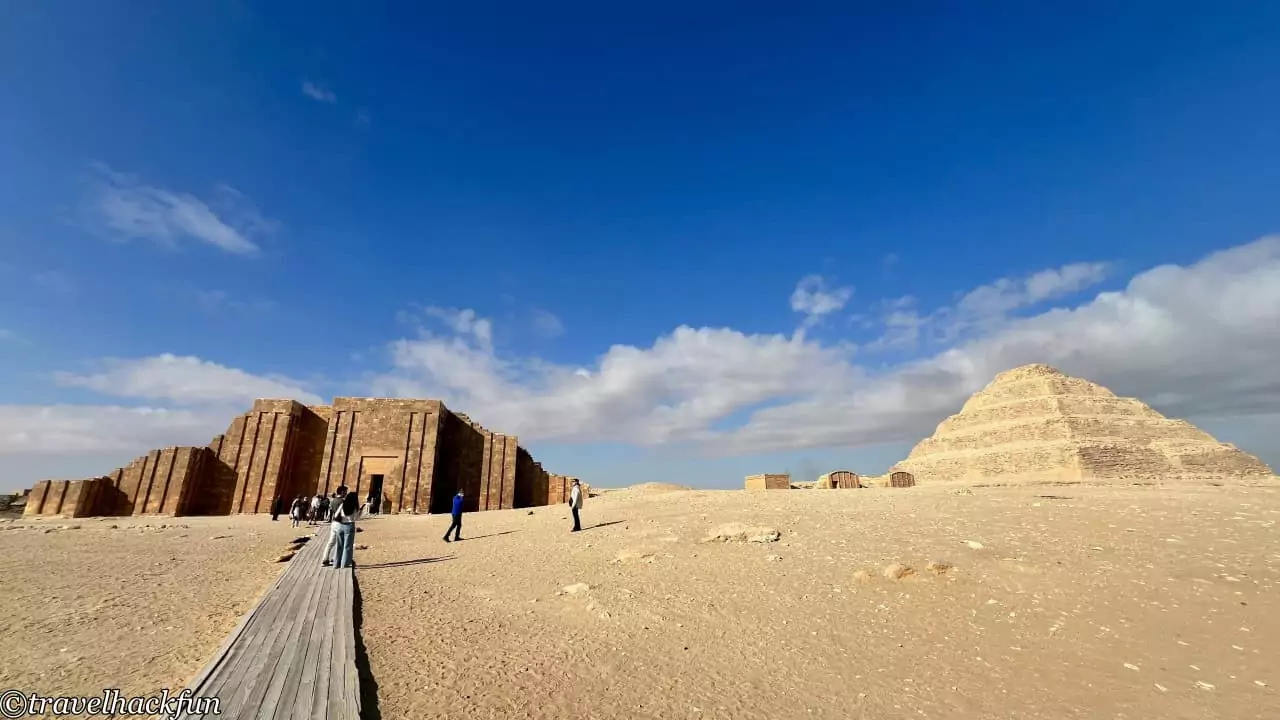
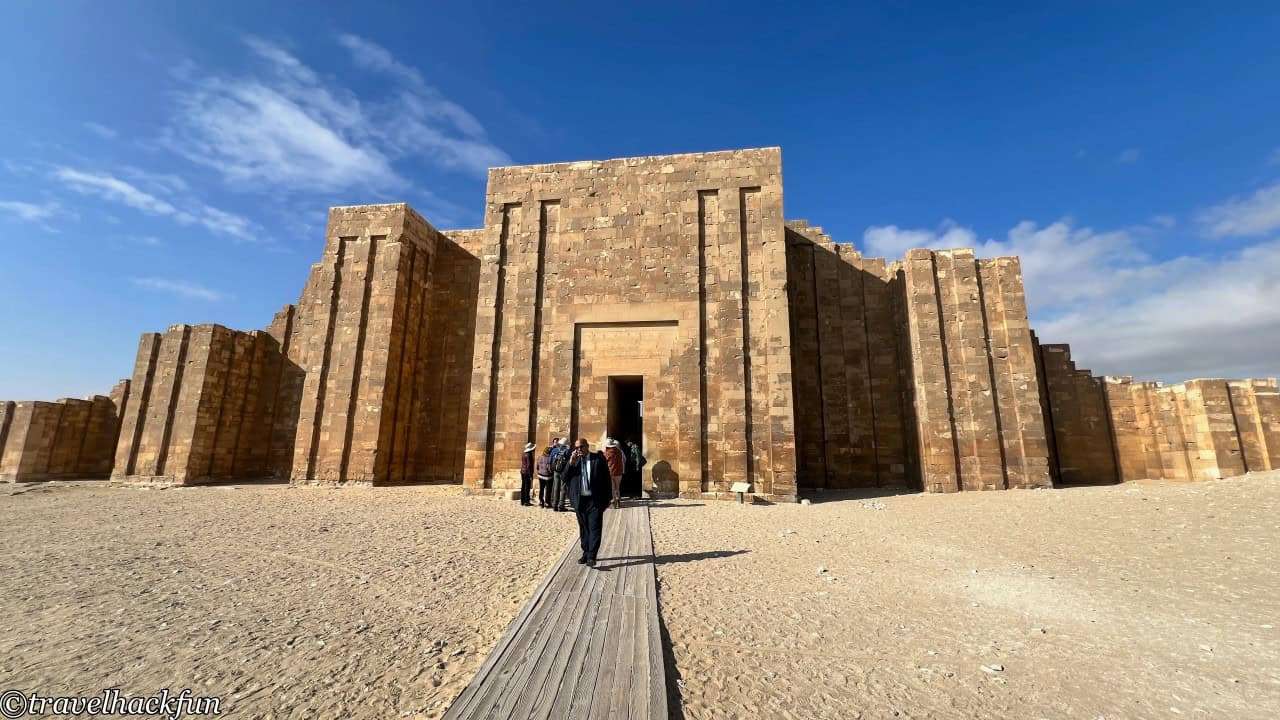
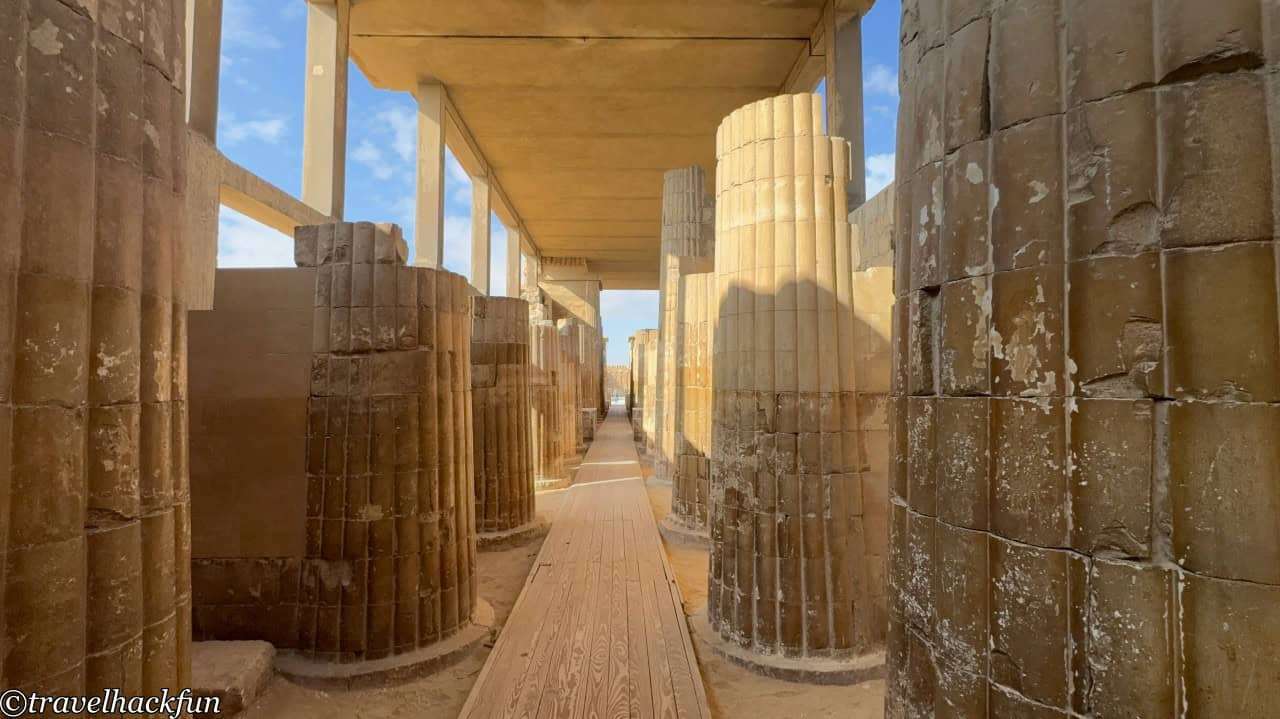
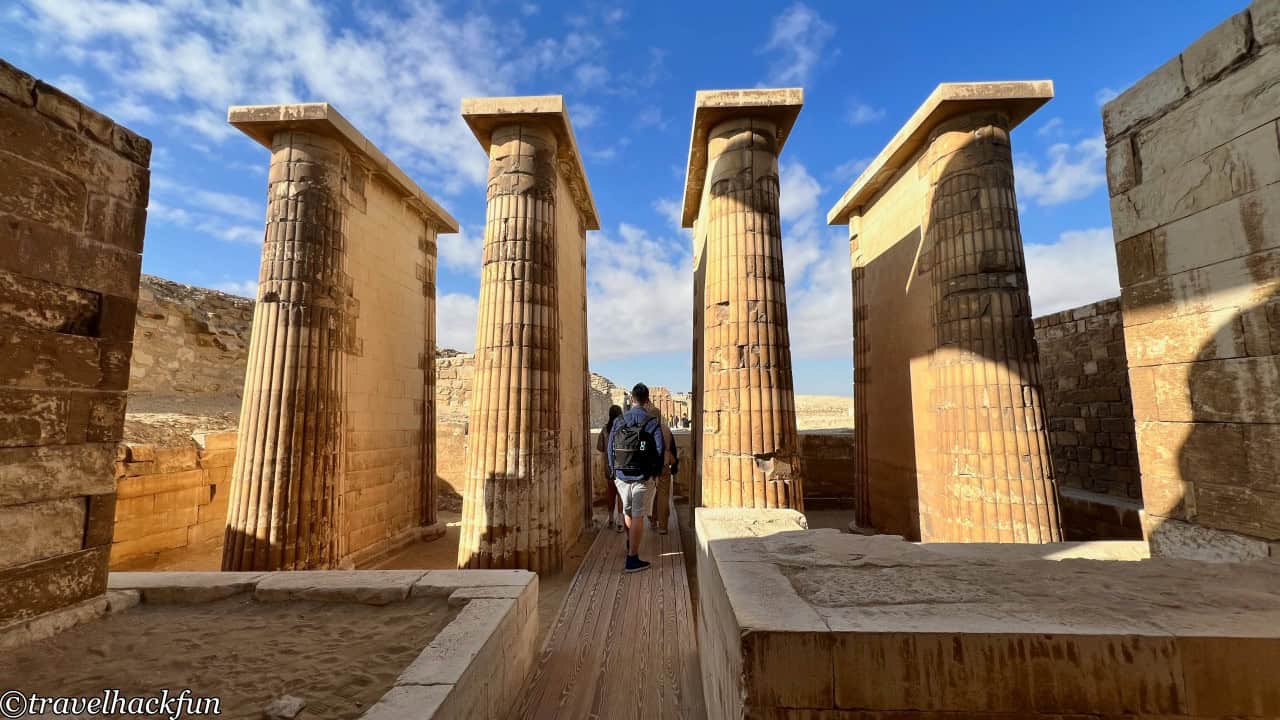
Must-see | Pyramid of Djoser / Step pyramid
The official name of the step pyramid is the Pyramid of Djoser, and it is the oldest pyramid in Egypt. It looks stepped because it was ancient Egypt's first attempt at evolving from the traditional stone mound Mastaba tomb to the first step towards a smooth-sided pyramid.
The person who designed the Step Pyramid was Imhotep, a vizier to Pharaoh Djoser during the Third Dynasty. Initially, he intended to construct the rectangular stone mastaba tombs that were used by the pharaohs of the First and Second Dynasties. However, Djoser desired a more magnificent and novel design, so Imhotep conceived the structure of stacking multiple mastabas layer by layer, forming Egypt's first pyramid.
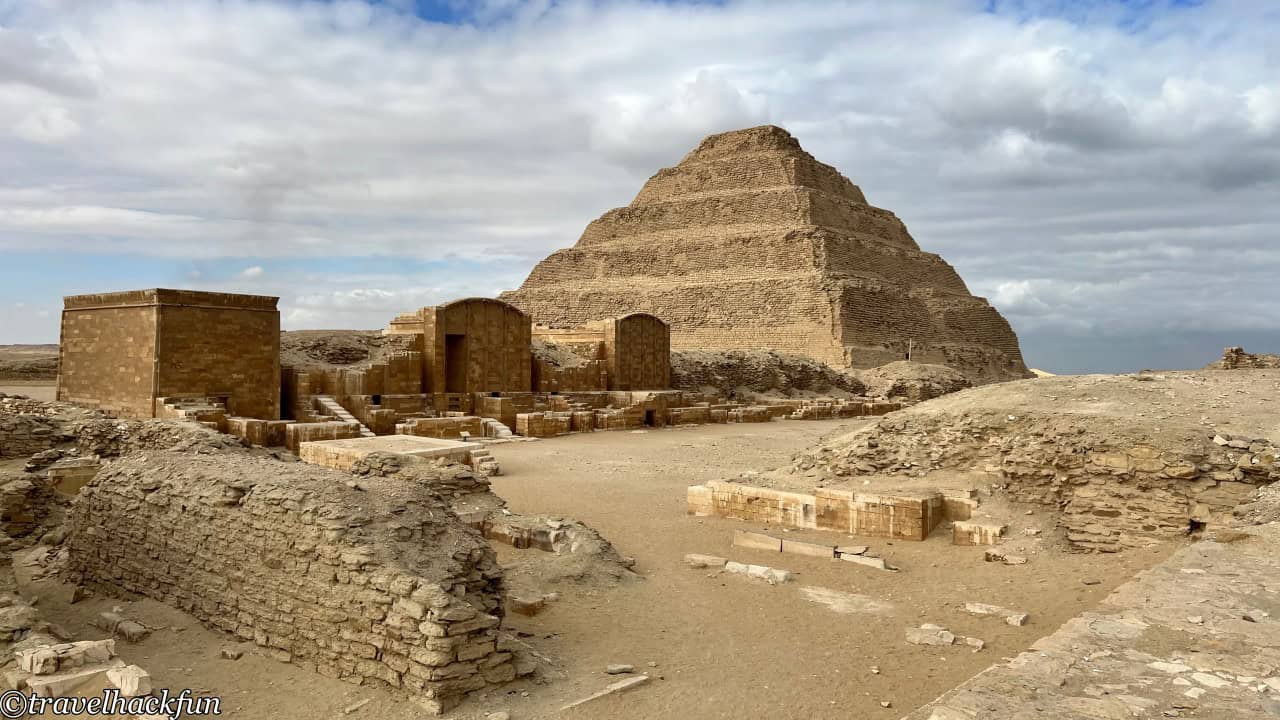
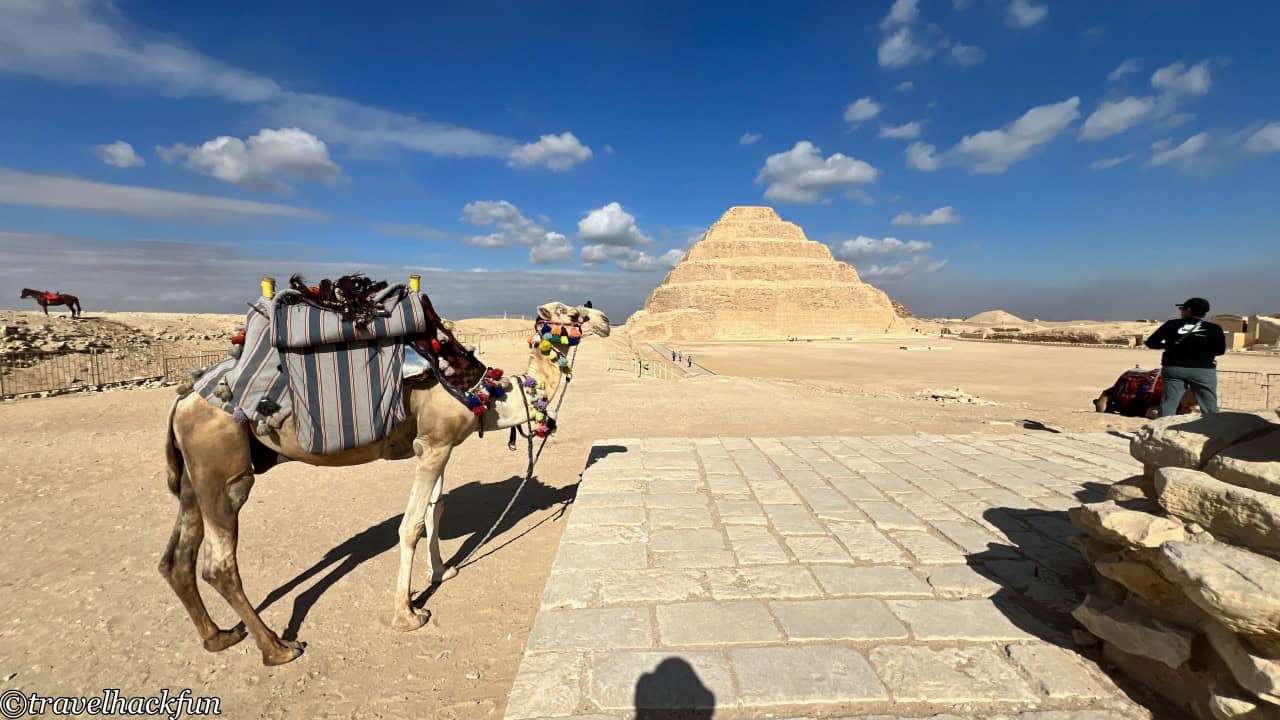
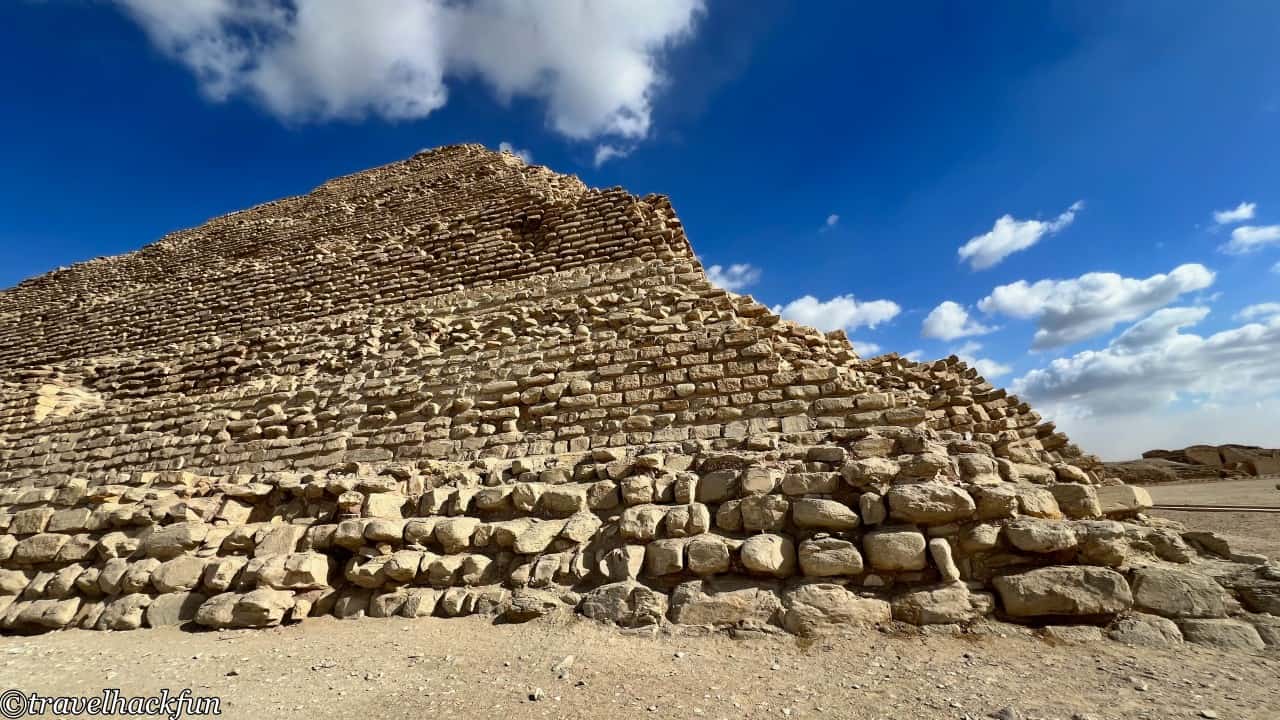
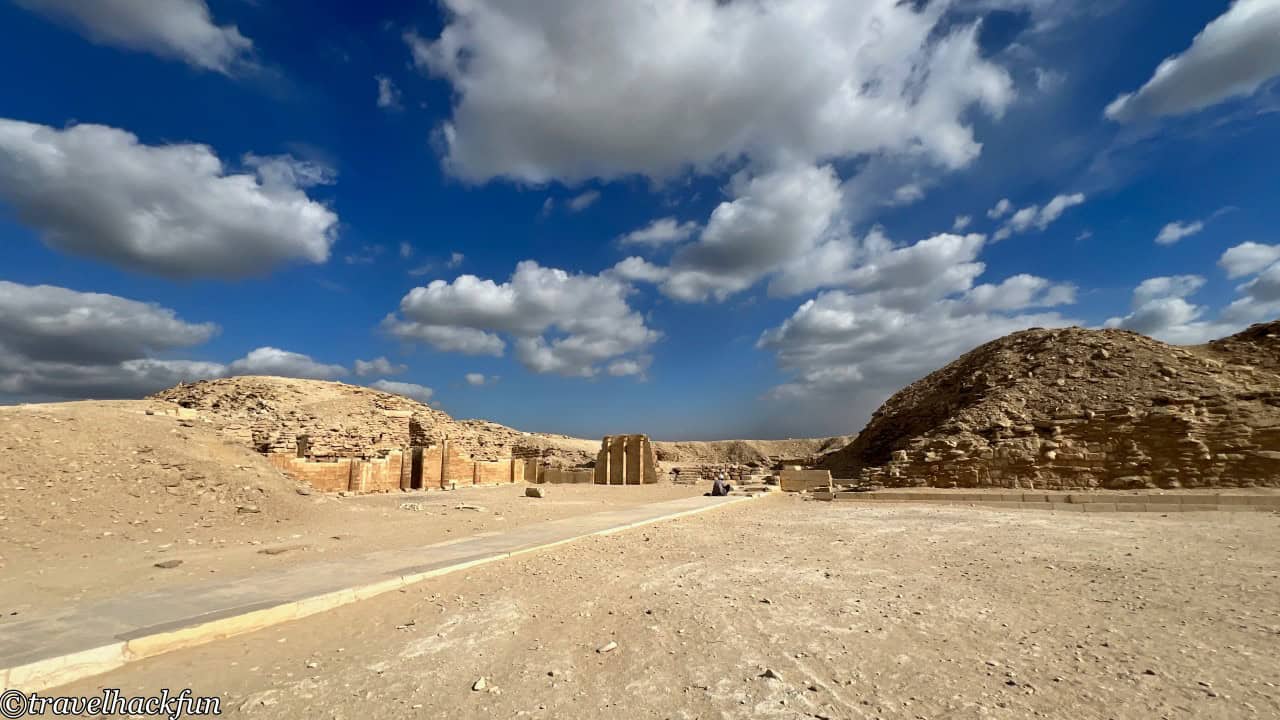

King's Pavailion
Next to the Step Pyramid, there is another structure known as Temple T, which includes its own entrance portico, vestibule, and inner courtyard. It was originally meant to serve as a palace for the Pharaoh to rest in when visiting the Step Pyramid.
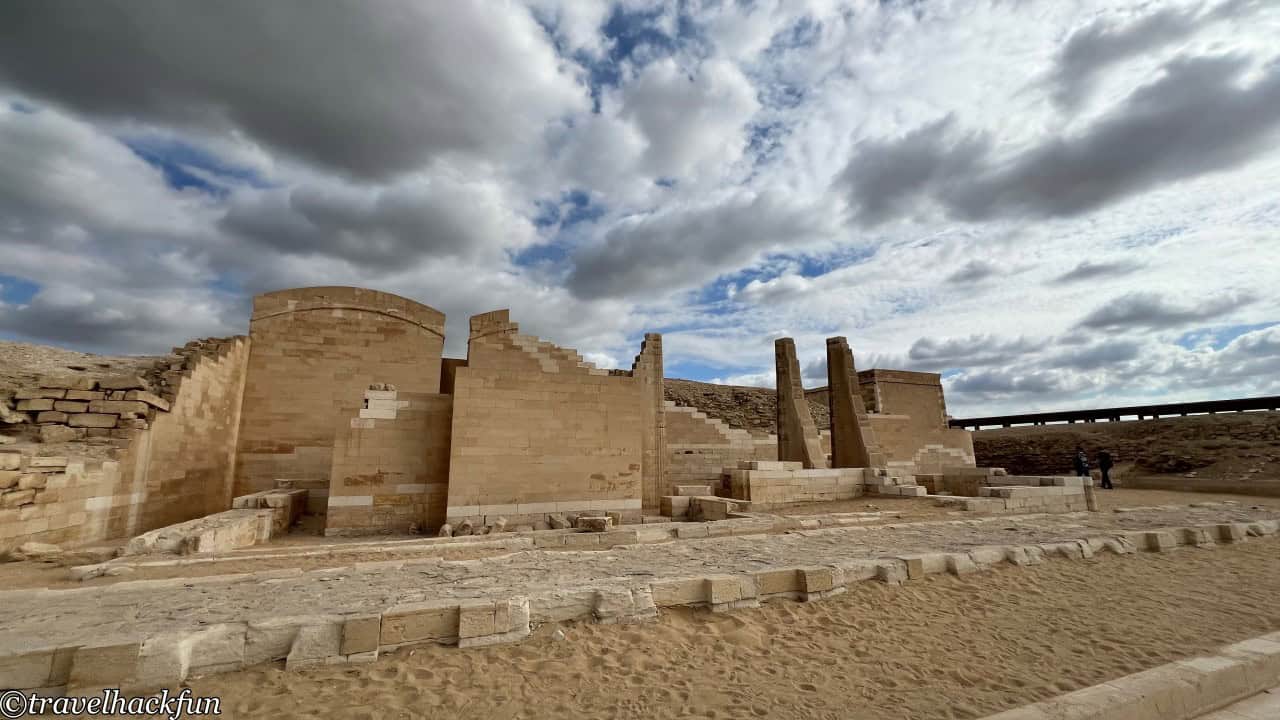
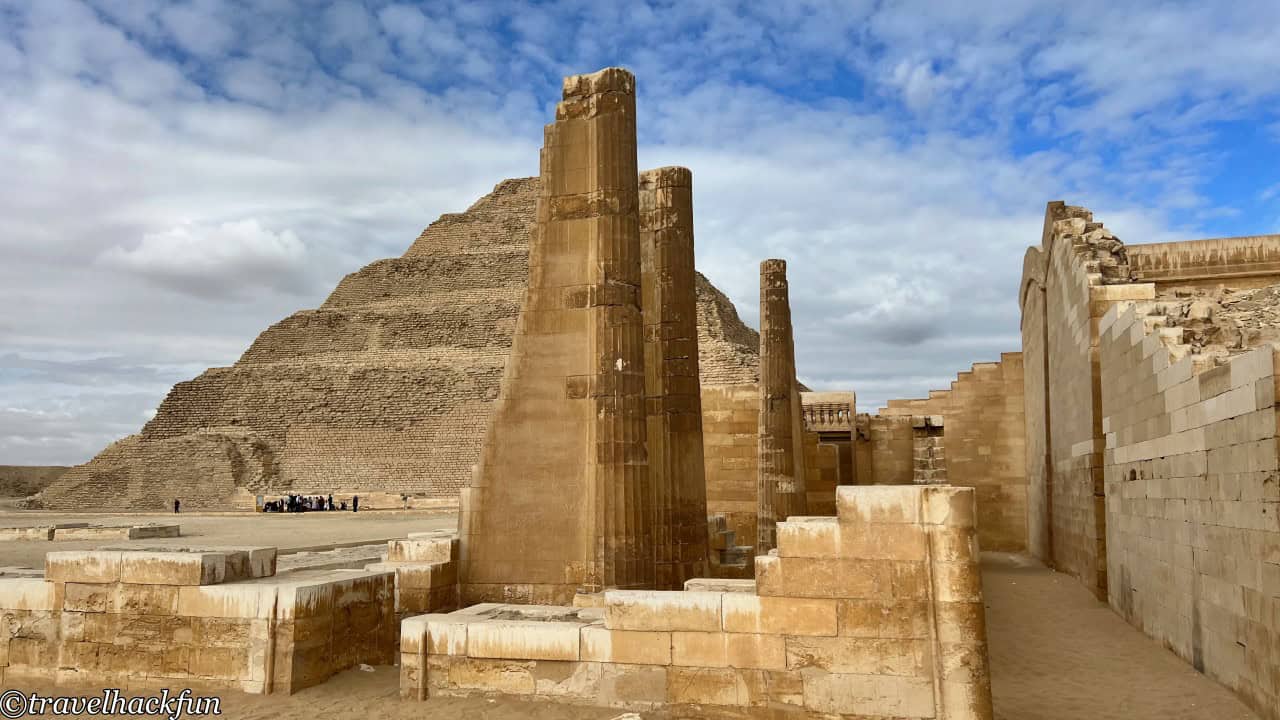
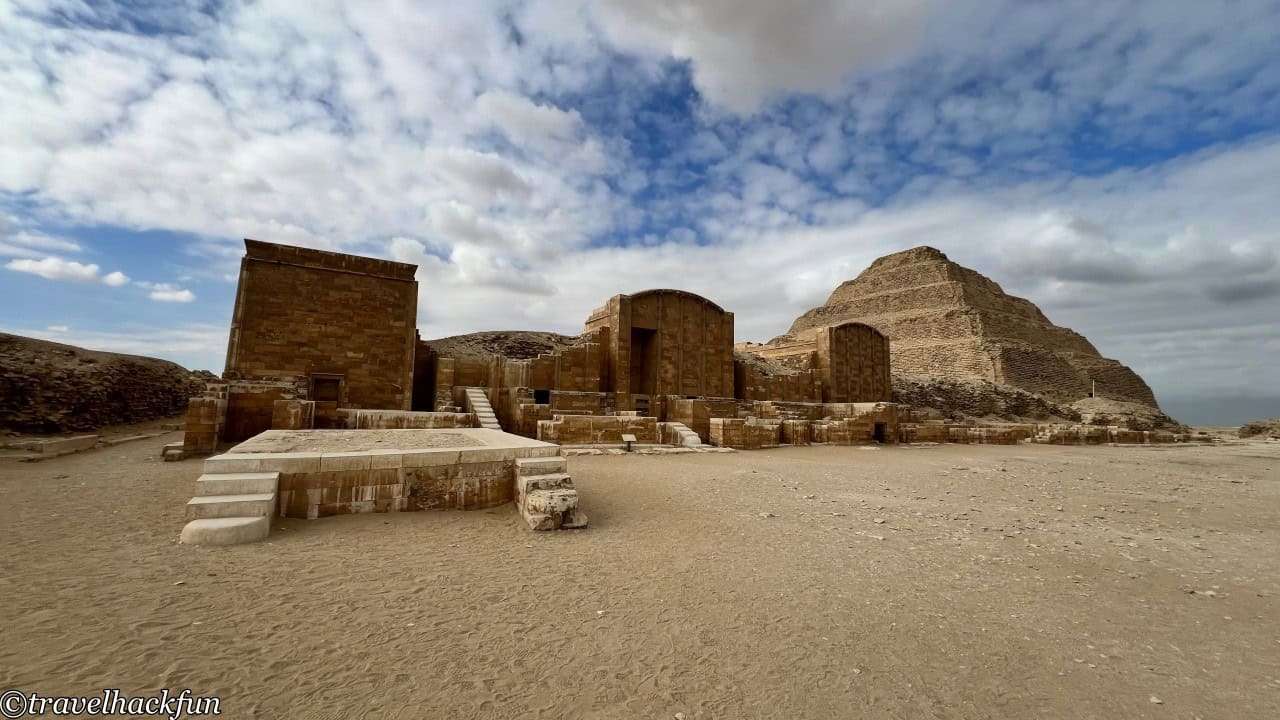
Unas Pyramid Complex
After climbing the high wall next to the south court located south of the Step Pyramid, you can see the Pyramid of Unas. Surrounding the area are numerous tombs of nobles and officials that are worth a detailed visit.
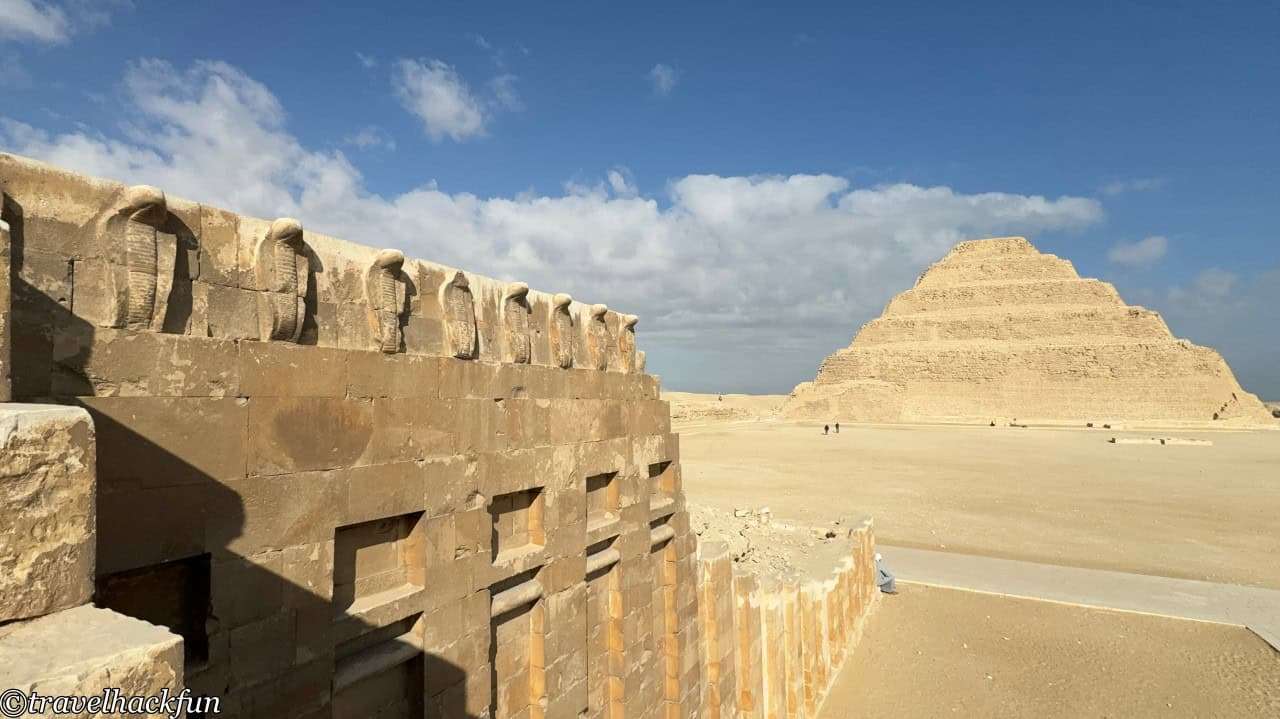
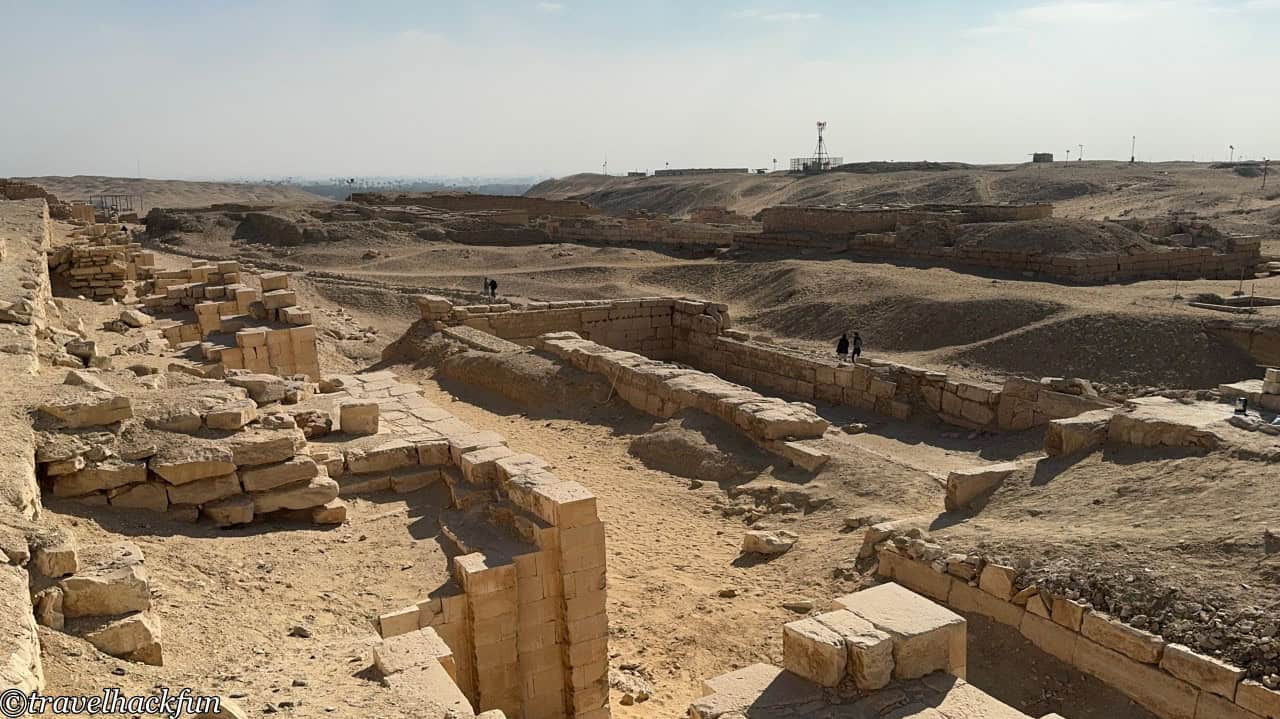
Must See | Pyramid of Unas
The Unas Pyramid is the tomb of the Pharaoh Unas of the Fifth Dynasty of Egypt, built around 2375 BC to 2345 BC. Compared to other pyramids, this one is relatively small, standing only 43 meters tall. It can be entered and visited.
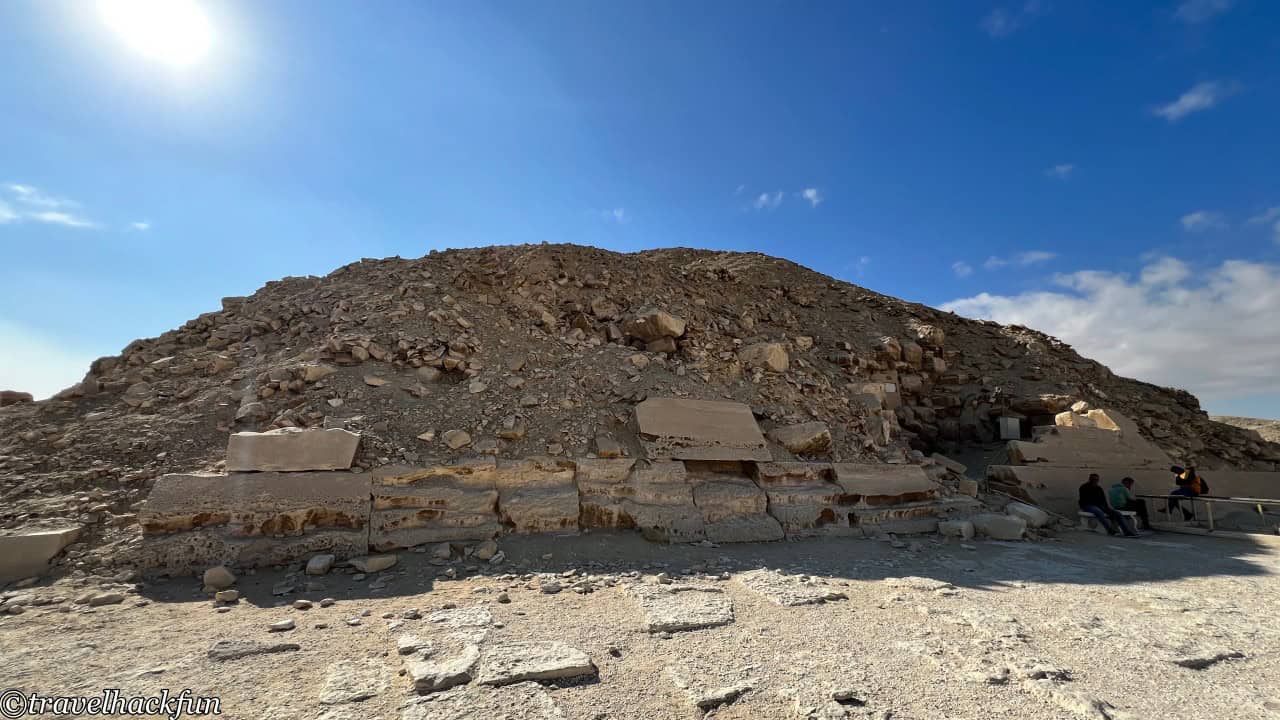
The Unas Pyramid is a must-see attraction. Its interior holds significant archaeological value, with the burial chamber and walls inscribed with the world's earliest Pyramid Texts. As soon as you enter the tunnel, you can see many Pyramid Texts around.
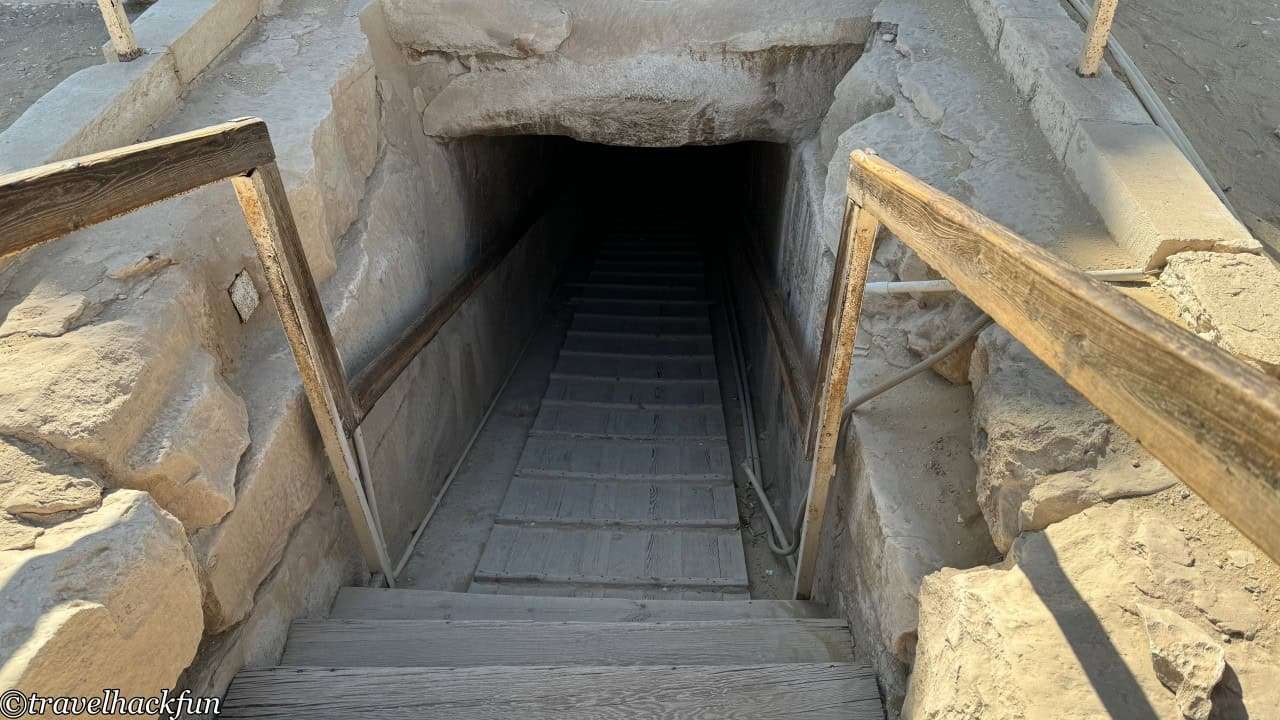
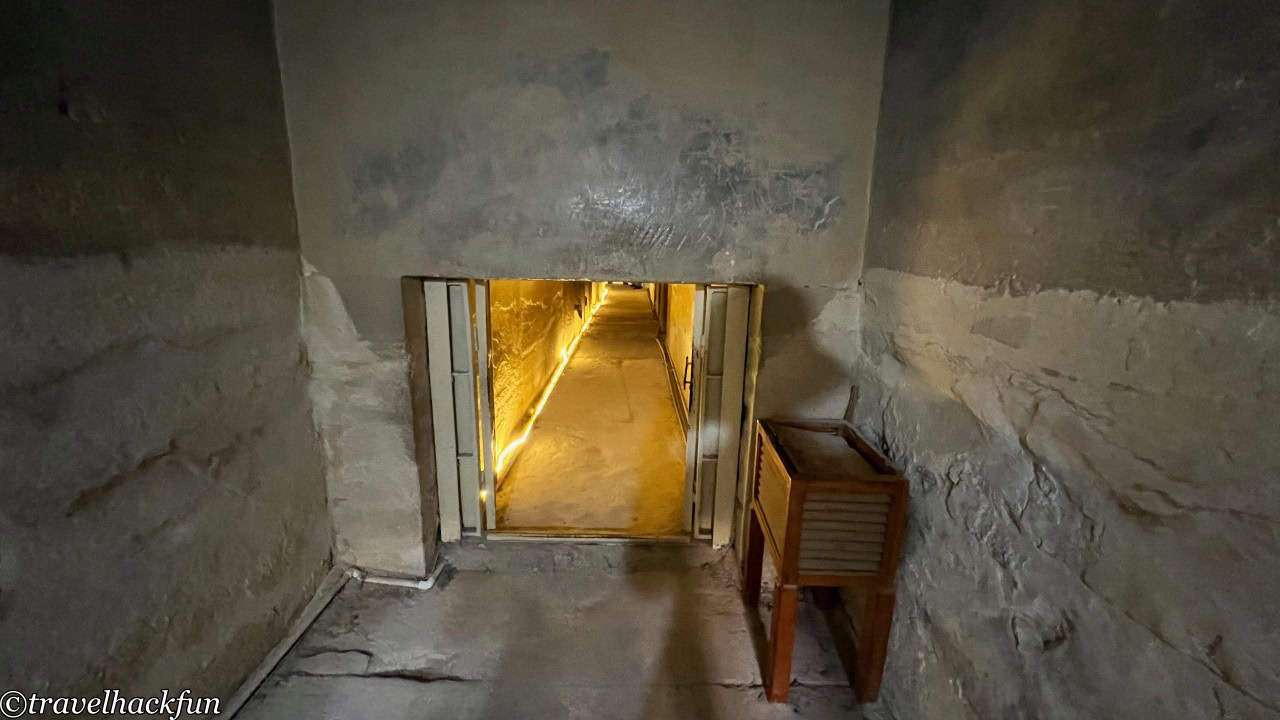
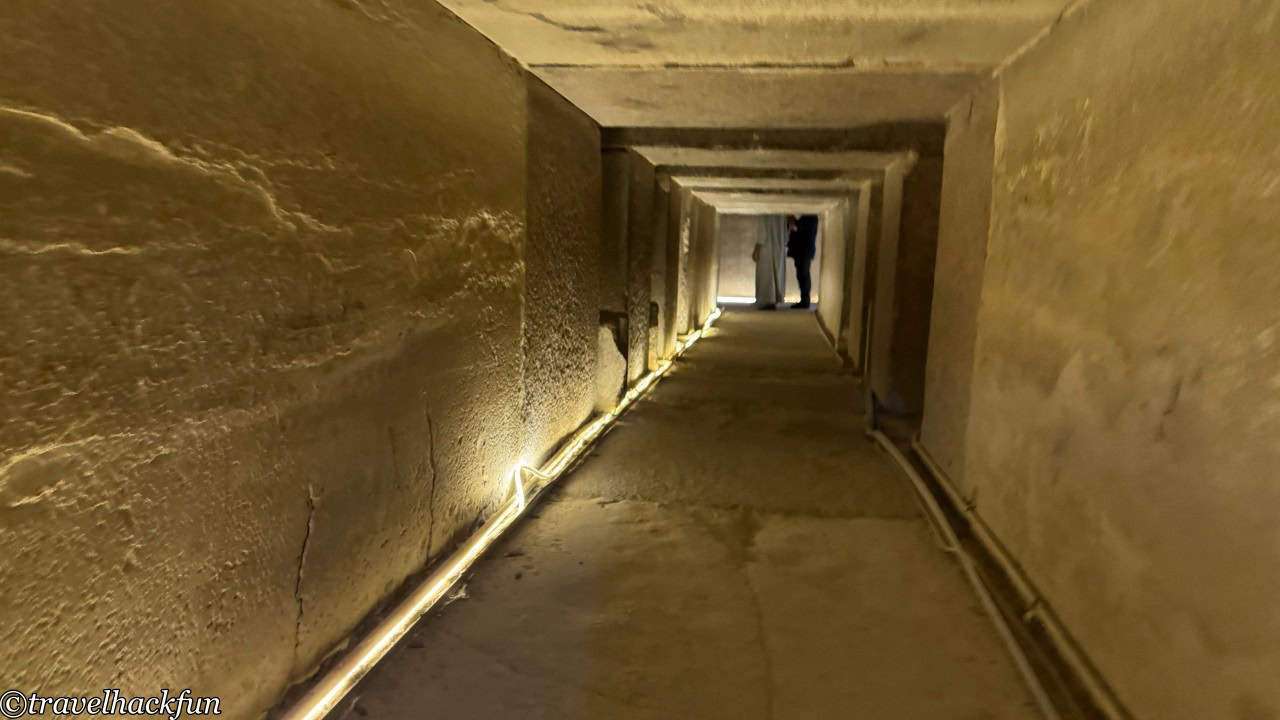
These Pyramid Texts are also inscribed on the walls of the tomb chambers and corridors. The content includes prayers and spells, with many stars carved on the ceiling meant to protect the pharaoh's soul and guide it on its journey in the afterlife. Hidden behind the Pyramid Texts in the tomb chamber, when the lights are turned off, you can see faint bas-reliefs of the pharaoh.
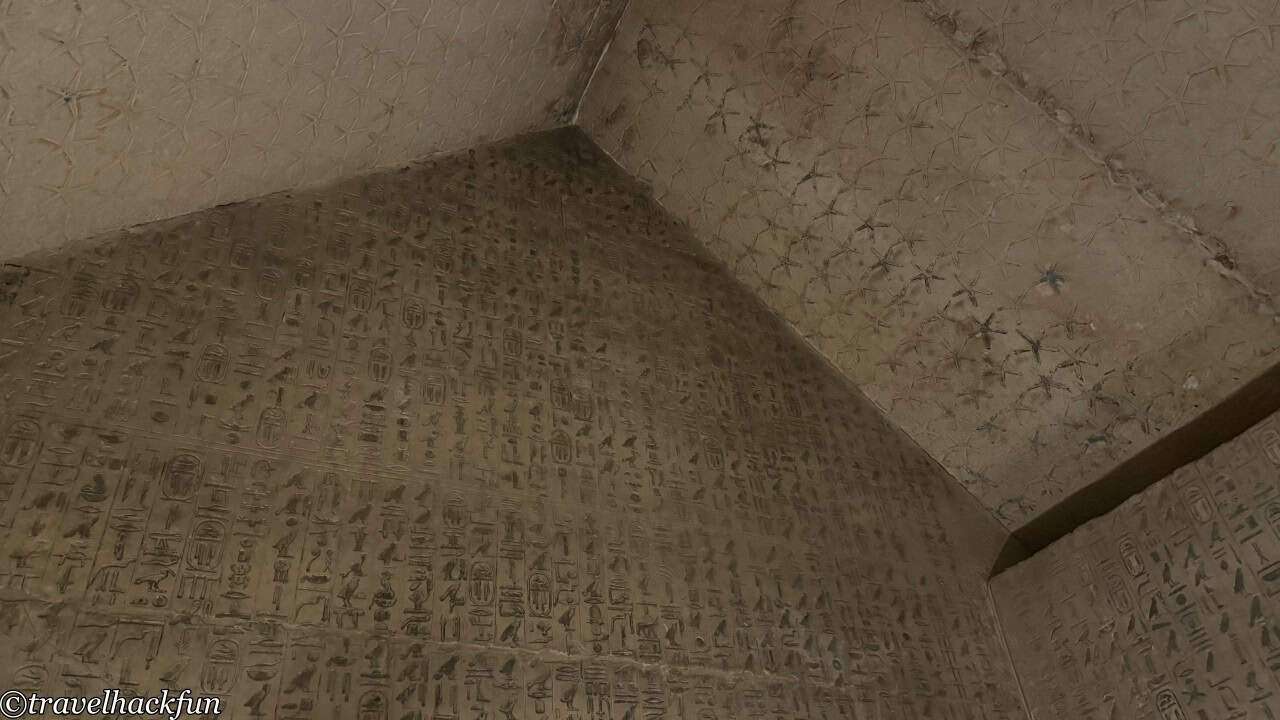
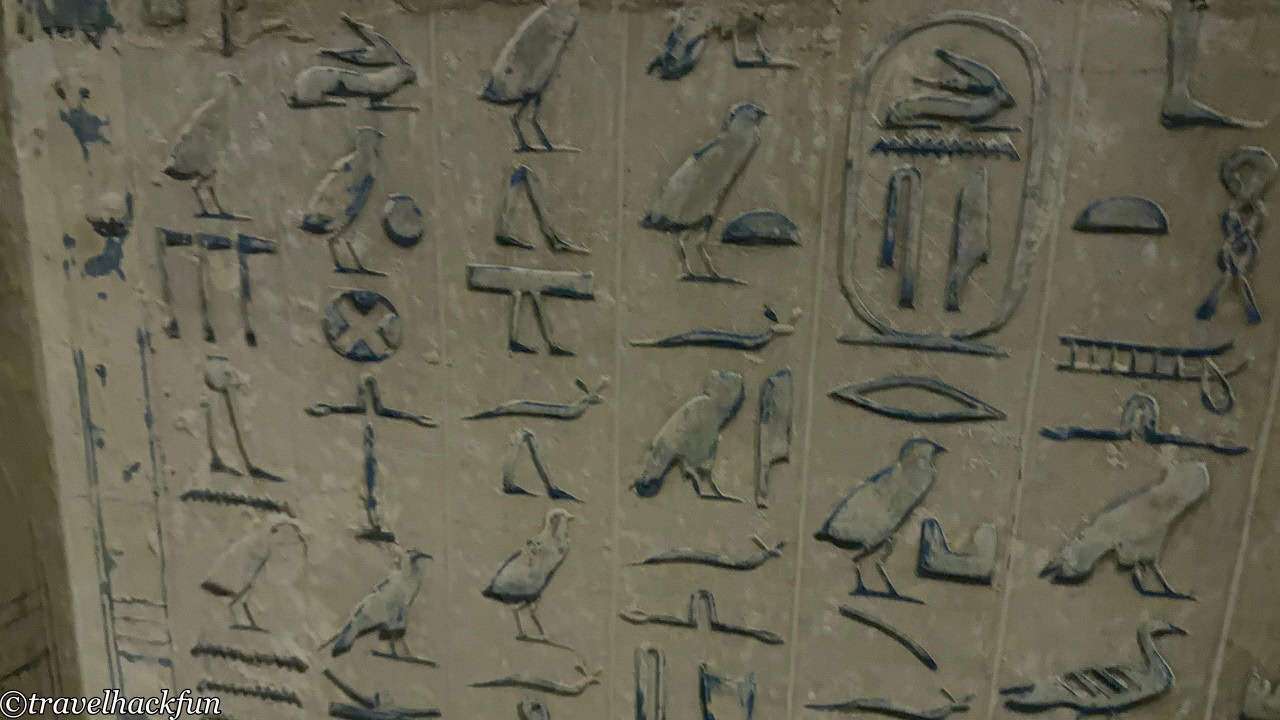
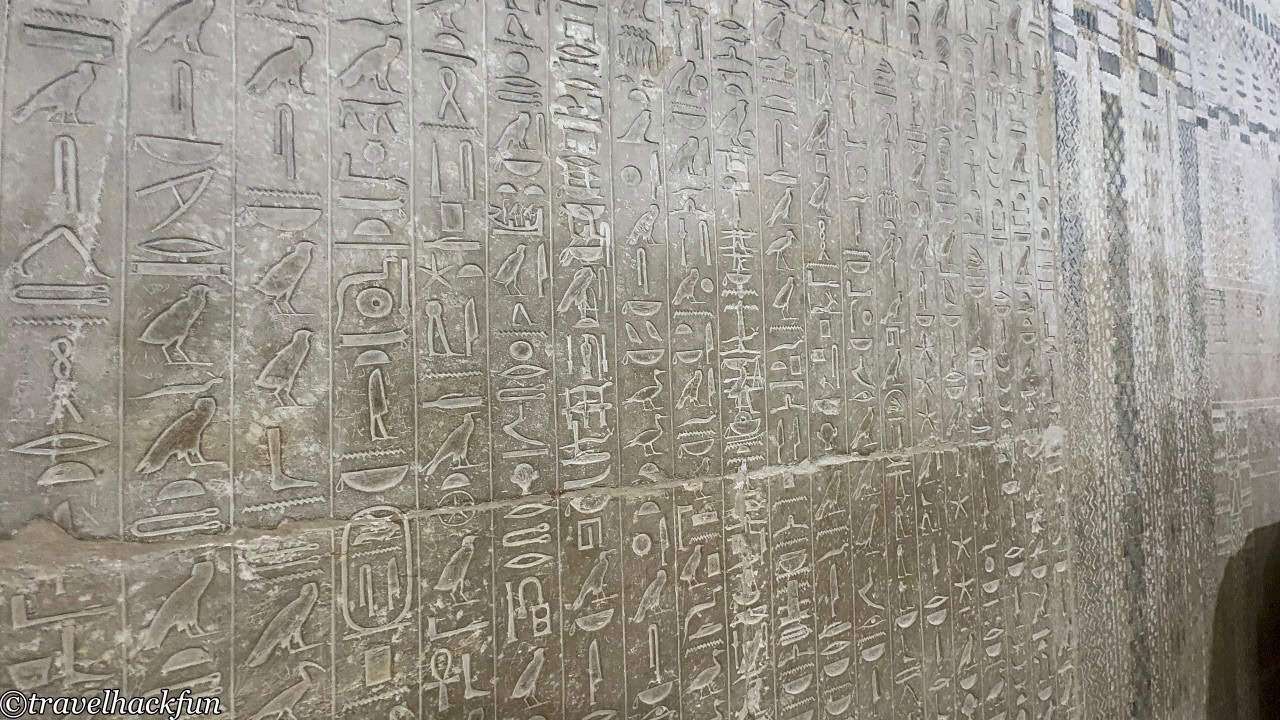
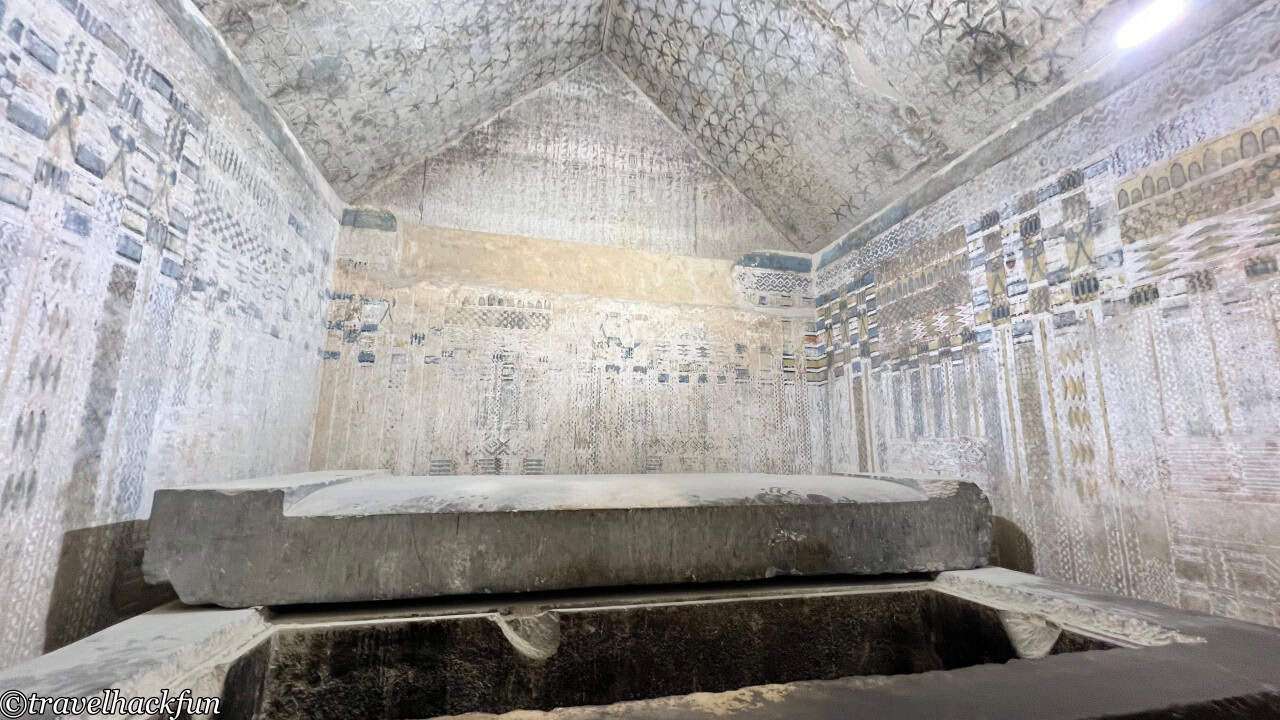
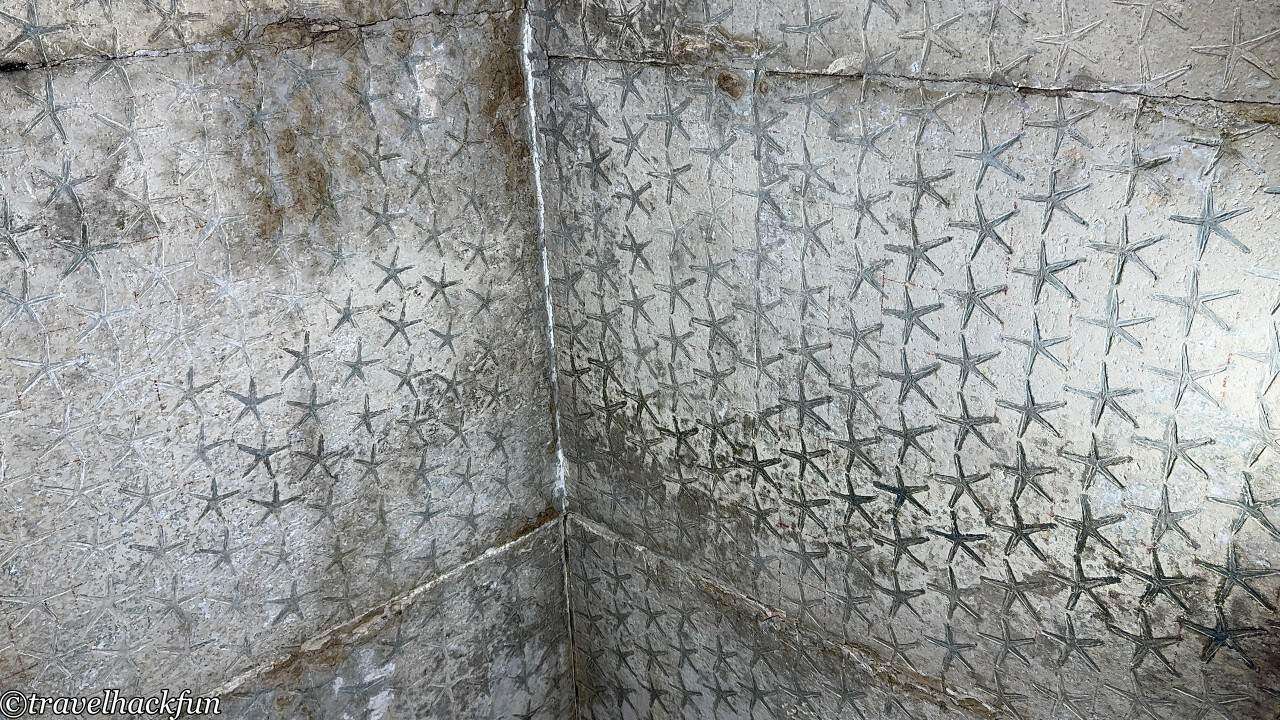
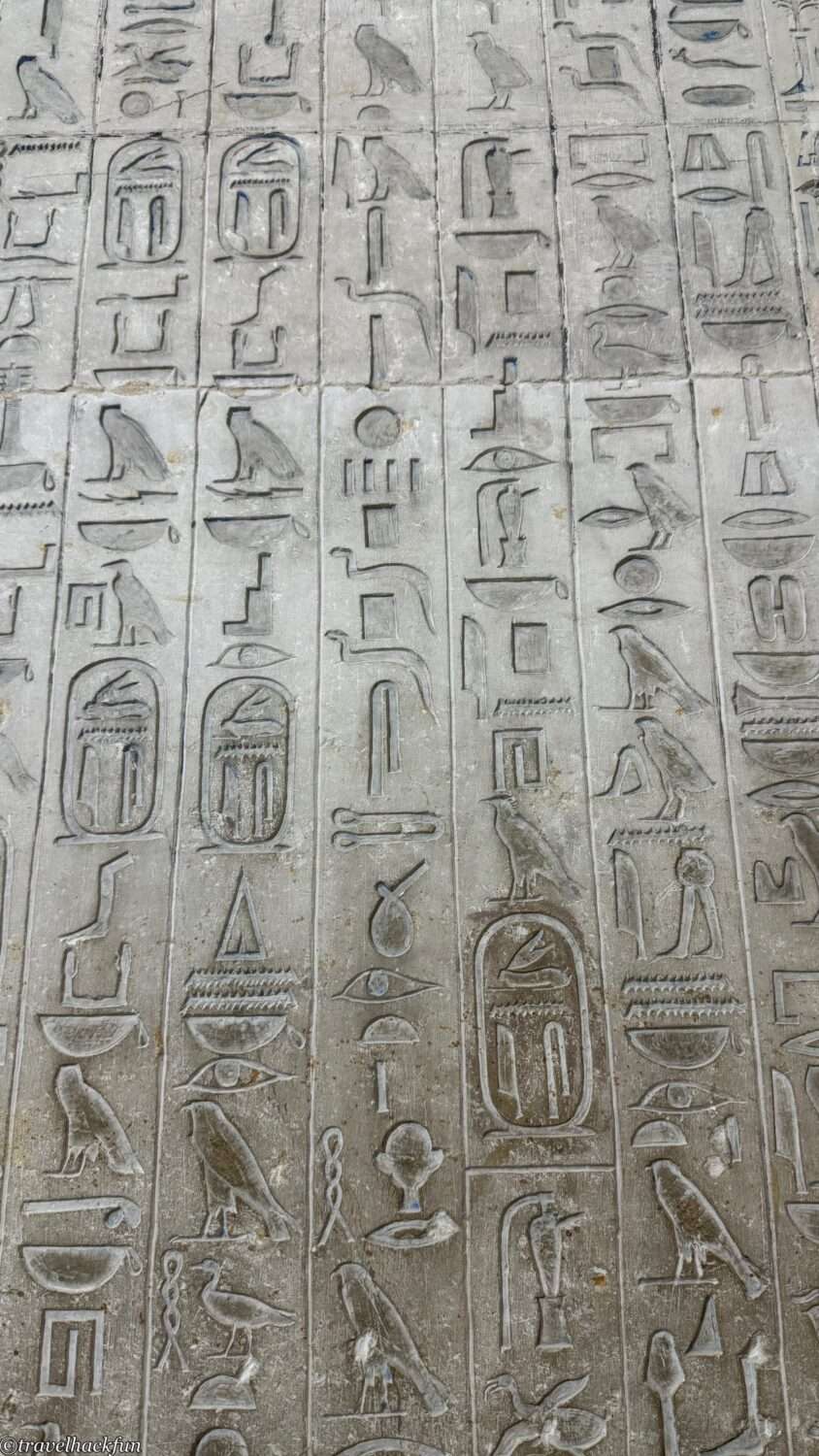
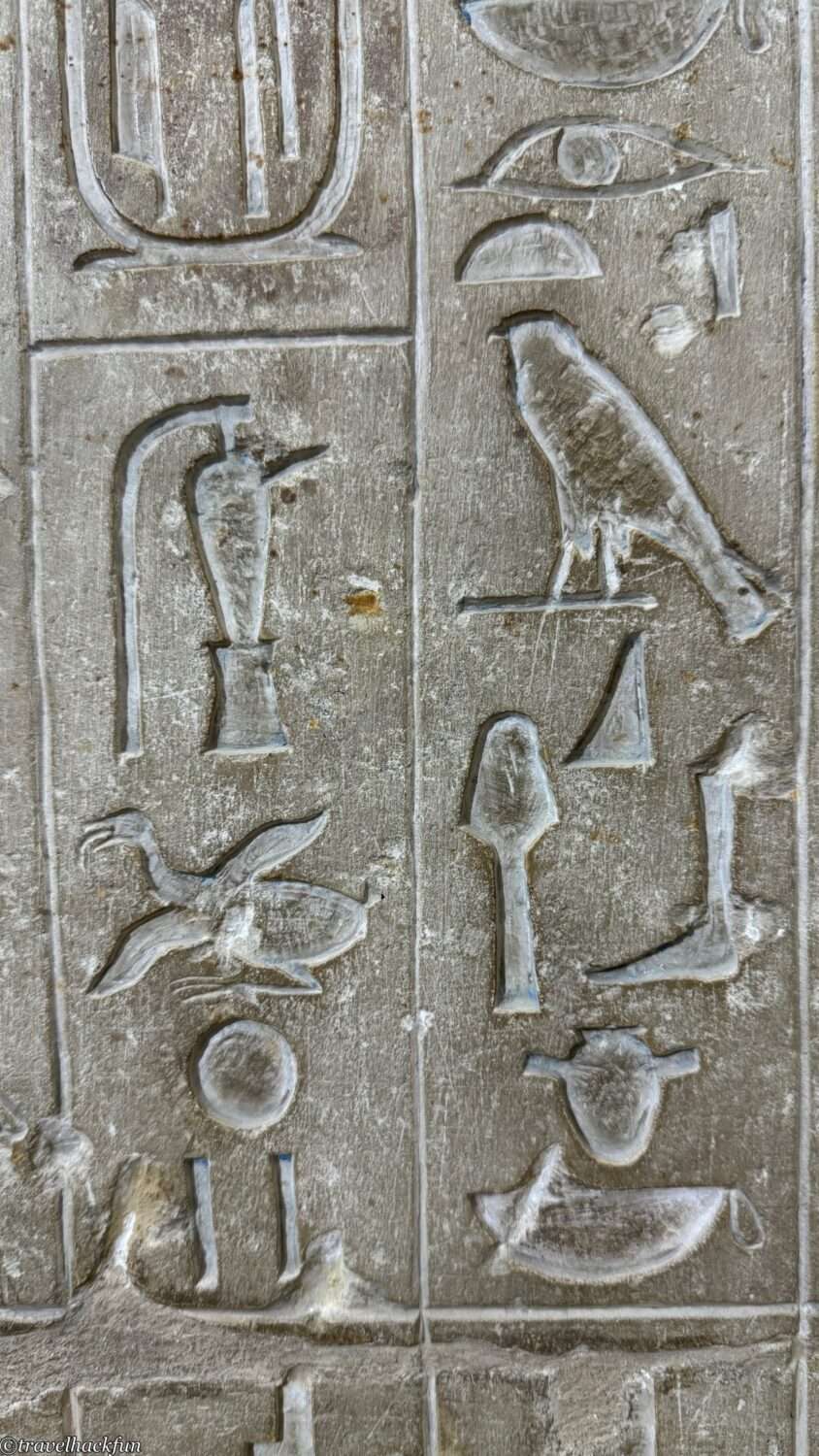
Although the pyramid is small, it is surrounded by a series of subsidiary buildings such as temples, quite similar to the pyramid complex in Giza. The Causeway of Unas connected the Pyramid of Unas with its valley temple. In ancient Egypt, such causeways served not only the practical purpose of leading to the pyramid but also symbolized the pharaoh's journey from the mortal world to the afterlife. The walls along the causeway are adorned with exquisite reliefs.
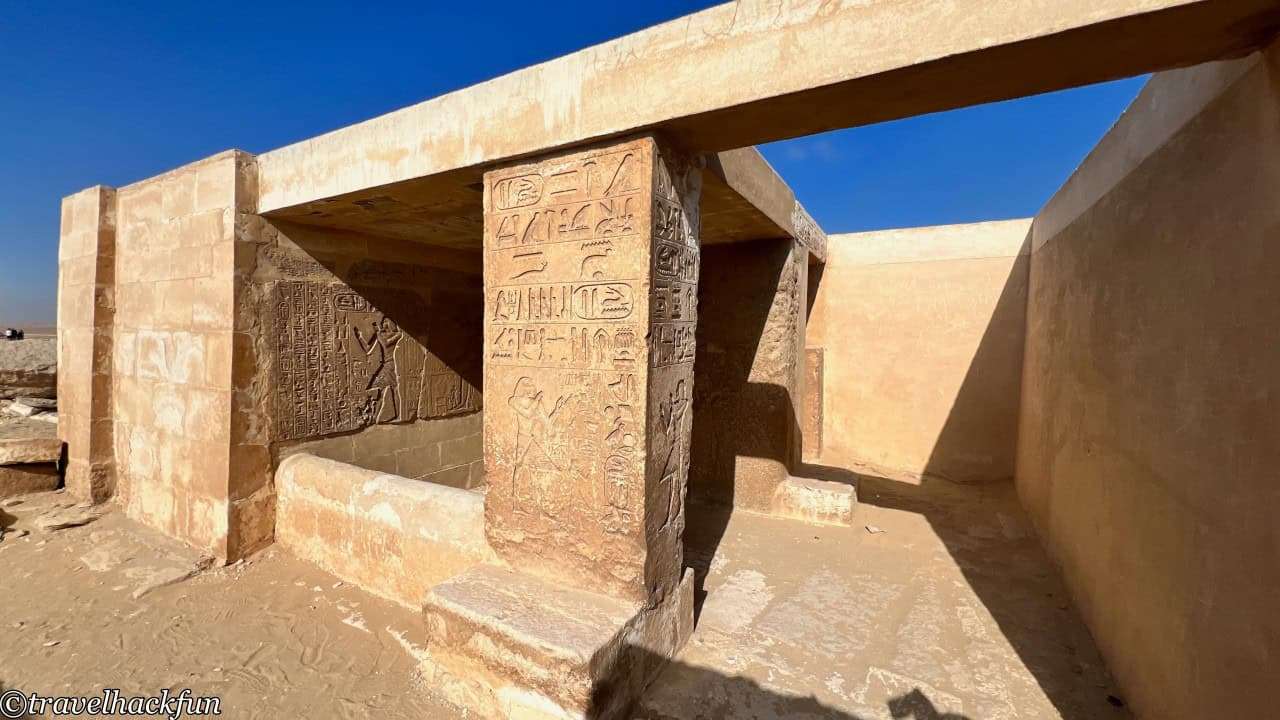

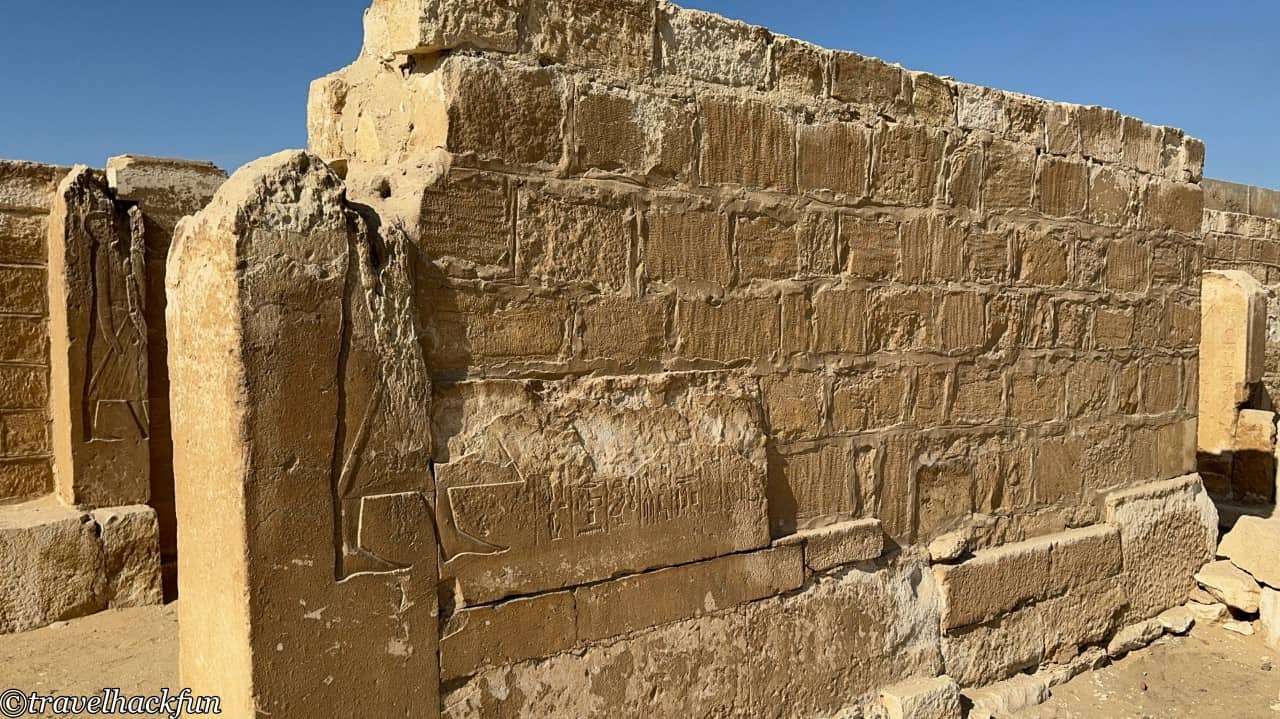

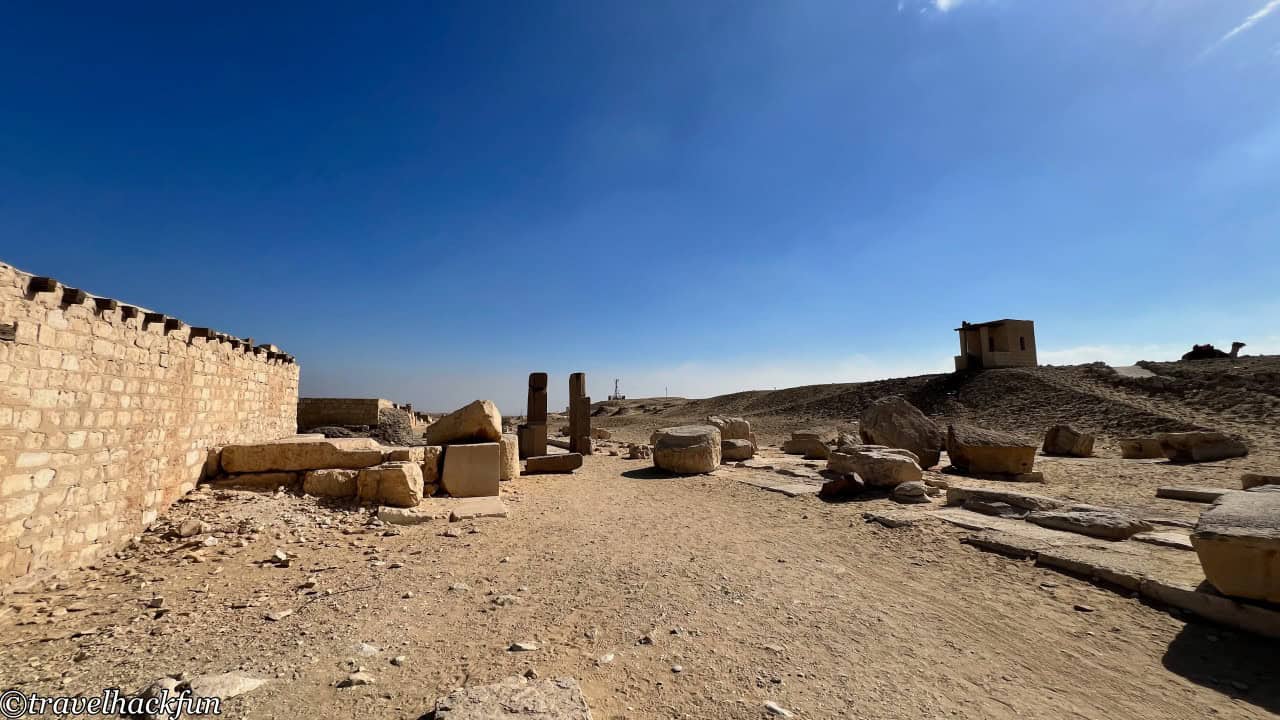
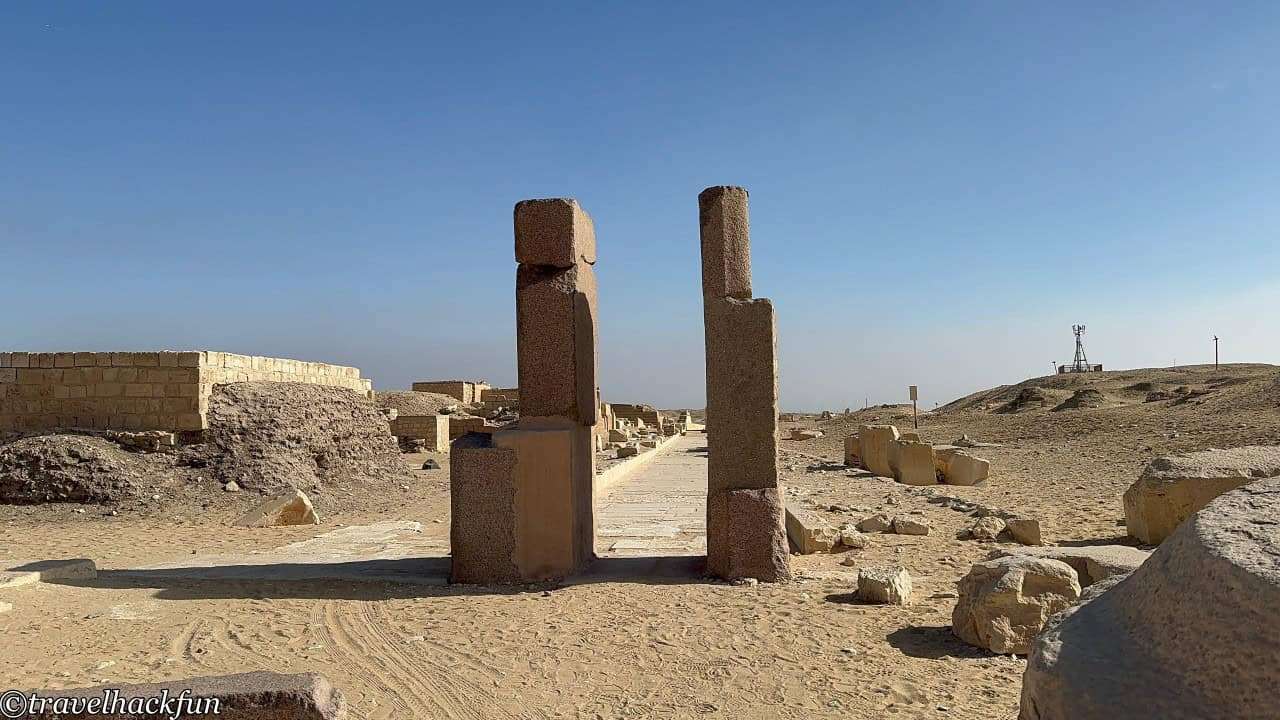

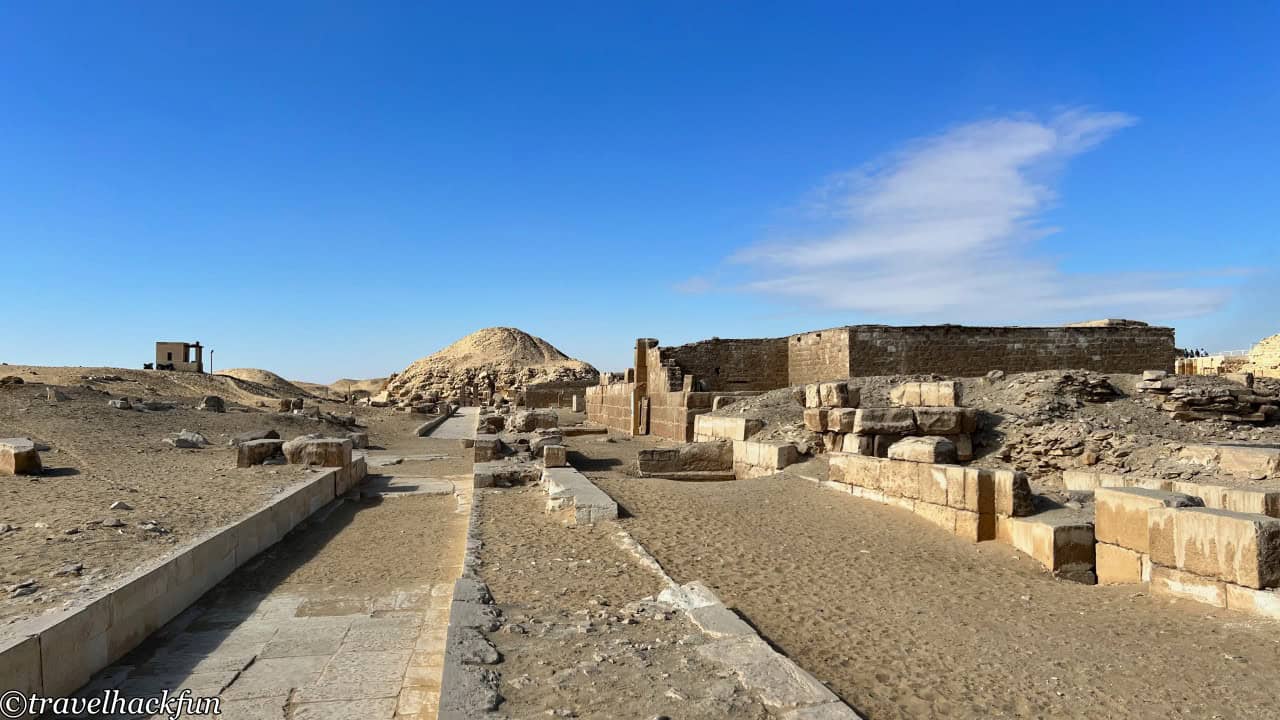

Tomb of Seshsehet Idut, Unas-Ank and Inefert
Mastaba is a rectangular, flat-roofed architectural style. Besides being used by the pharaohs of the First and Second Dynasties as previously mentioned, it was actually also the typical tomb form for early Egyptian nobility and high-ranking officials. Around the Unas Pyramid, we can see some Mastabas open to the public.
On the day we arrived, three connected Mastaba tombs were opened. Seshsehet Idut is the daughter of Pharaoh Unas, Unas-Ankh is the son of the Pharaoh, and Inefert is a high-ranking official. These tombs typically include structures such as an antechamber, main hall, and offering hall, with rich interior decorations featuring murals and reliefs.
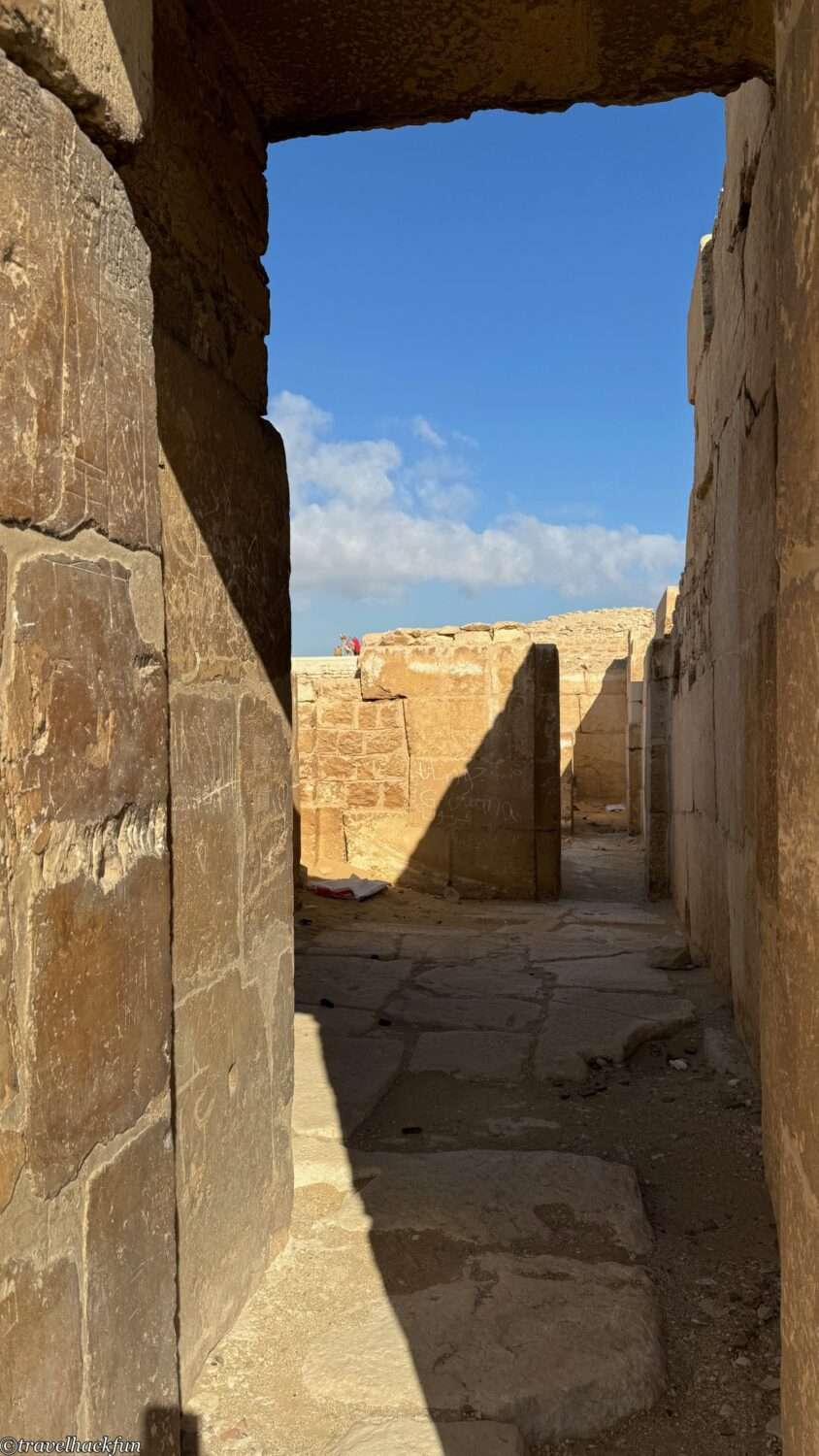

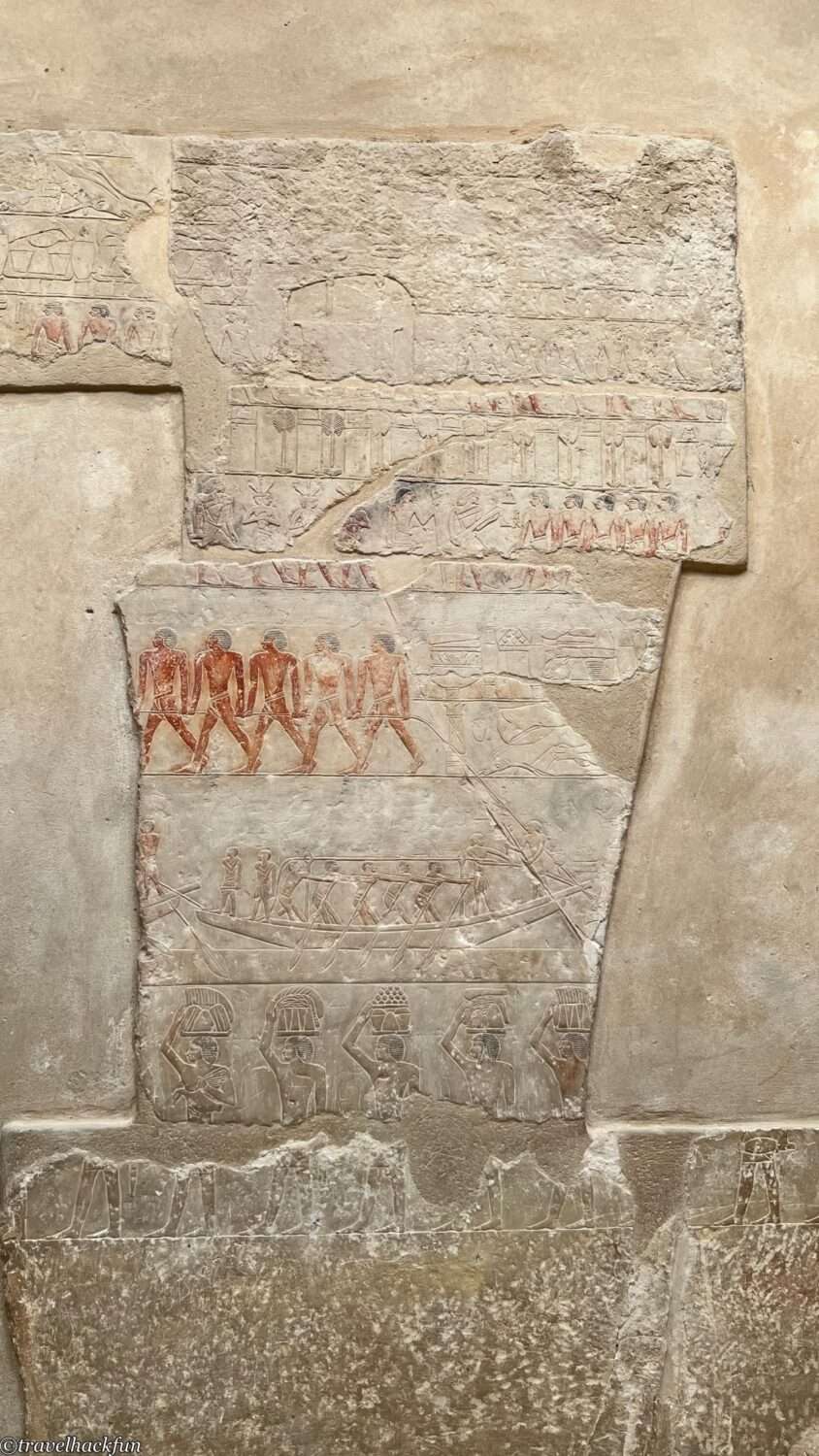
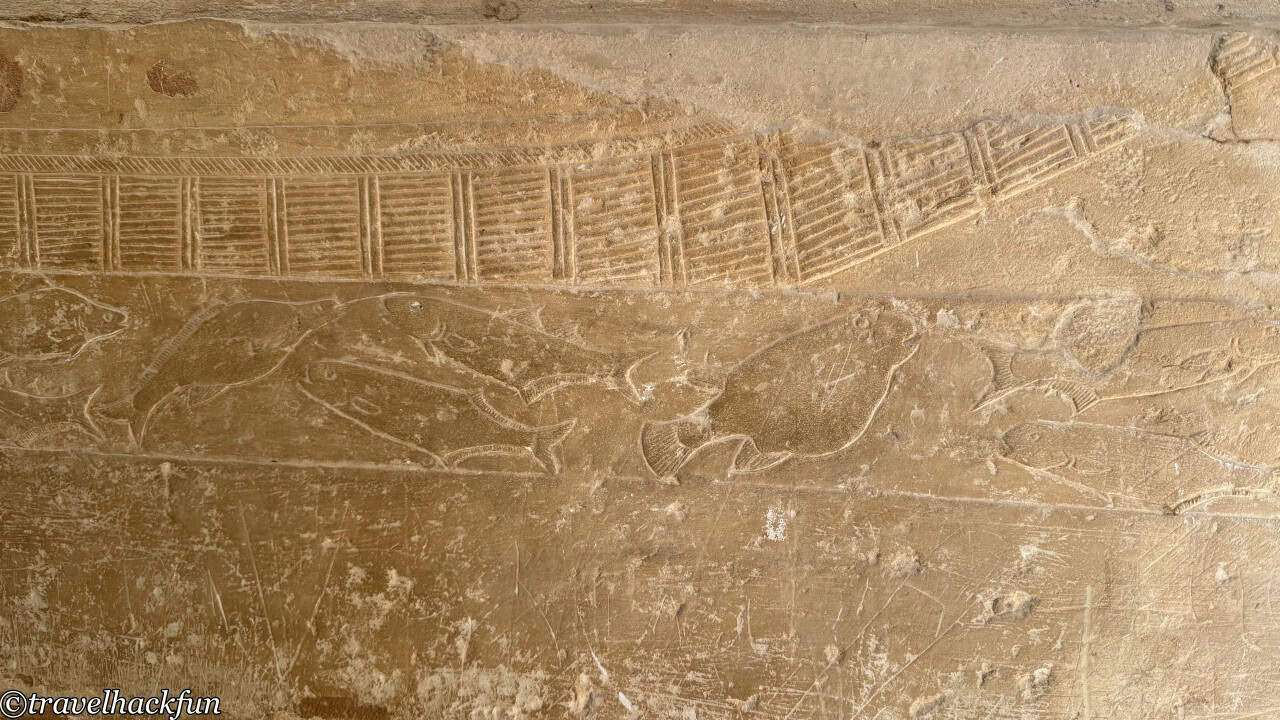
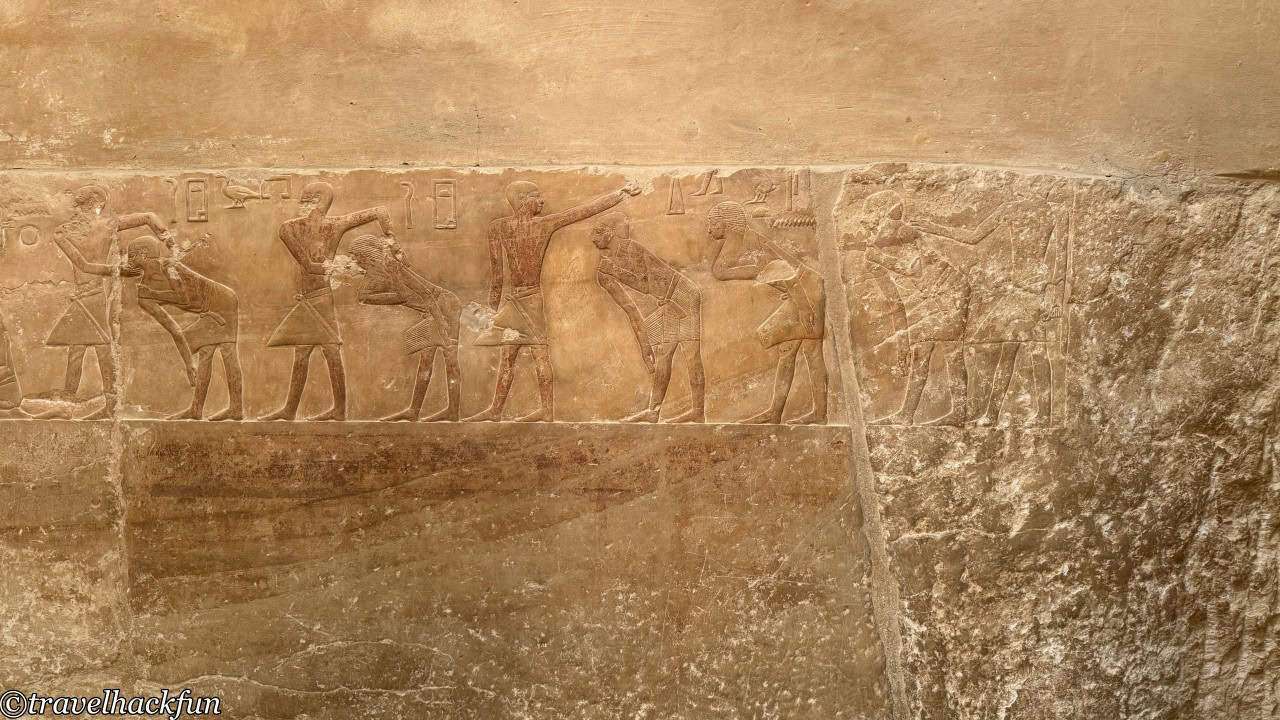

In this picture, we can see a princess on a boat, and the people below seem to be hunting crocodiles and hippos. The princess is depicted much larger, which is a common practice in ancient Egyptian murals where individuals of high status are portrayed on a larger scale.
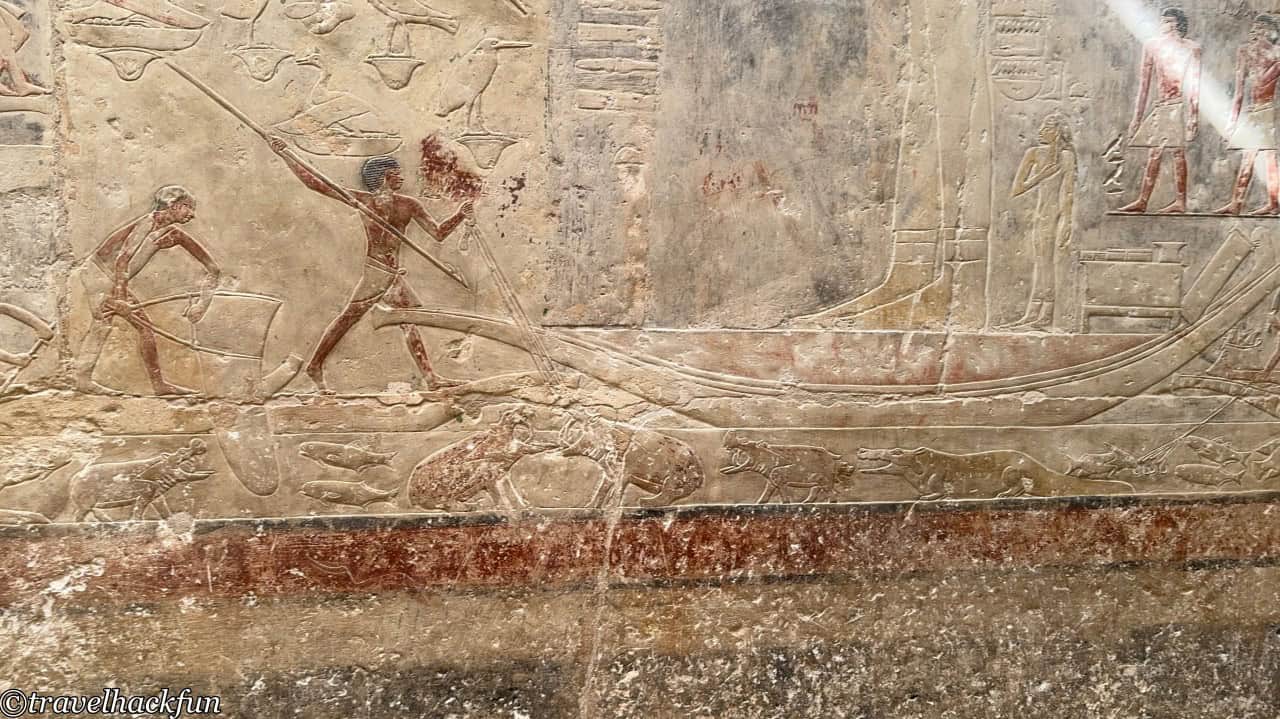
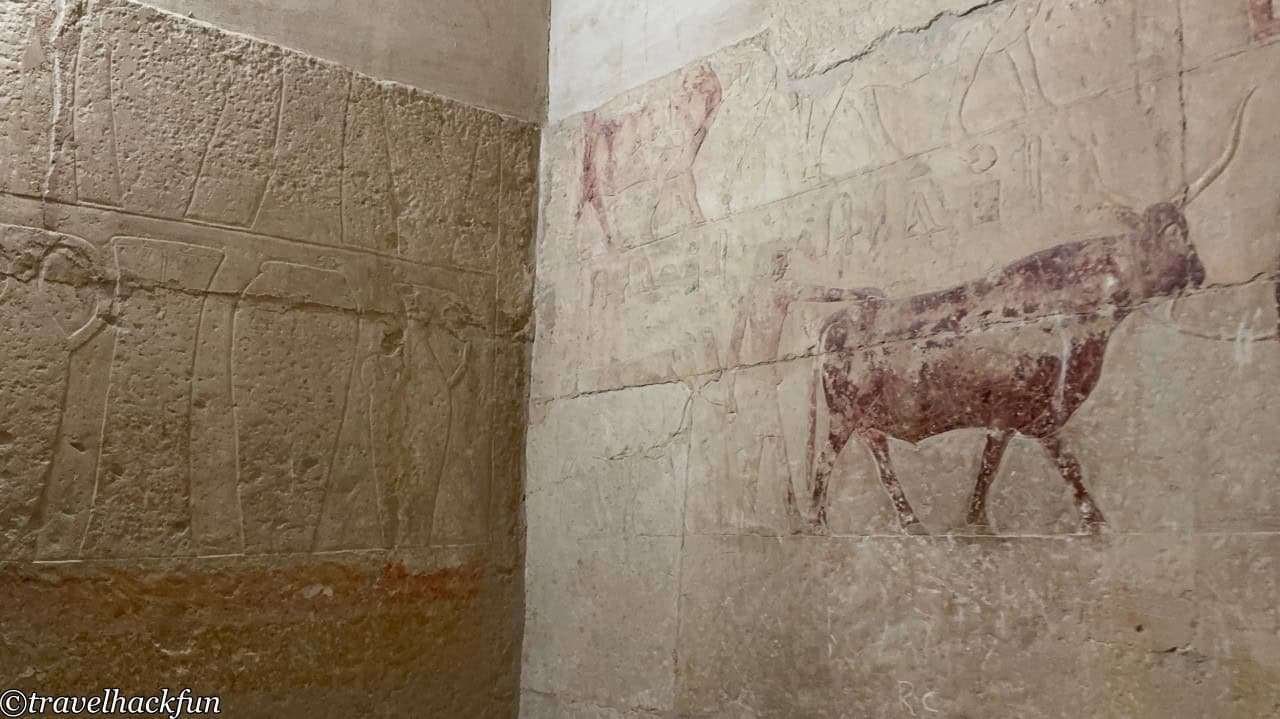
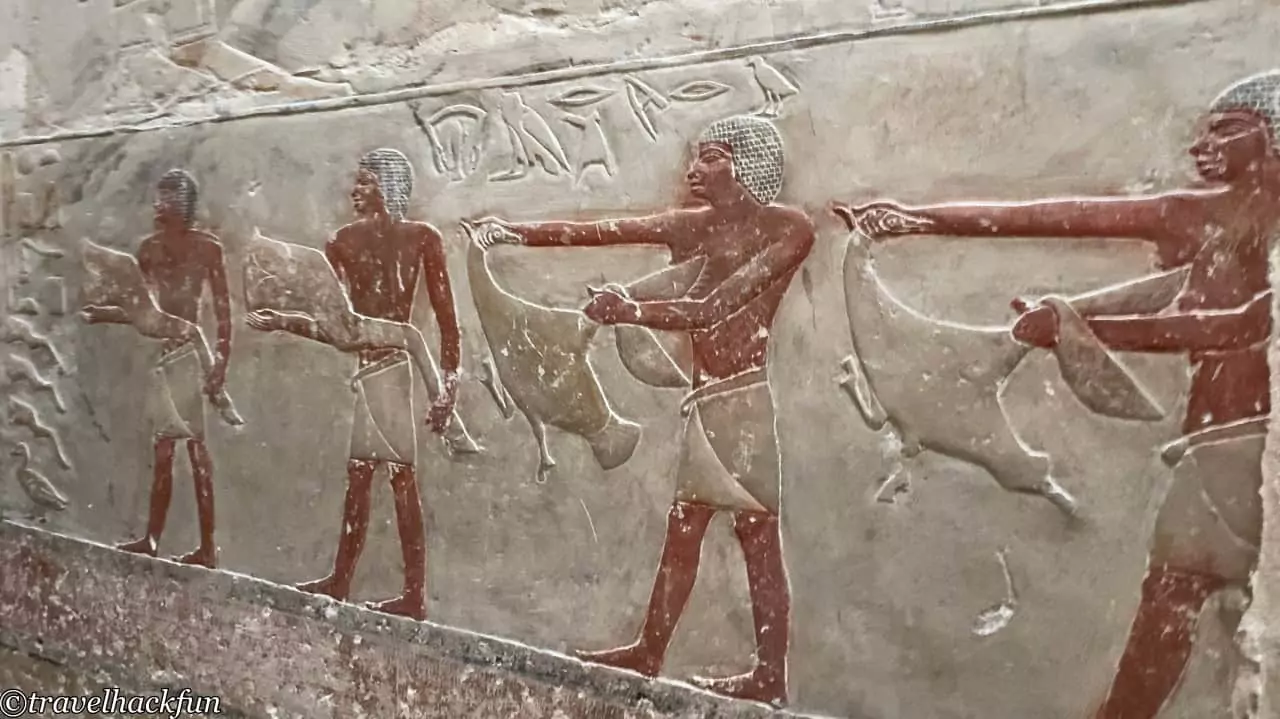
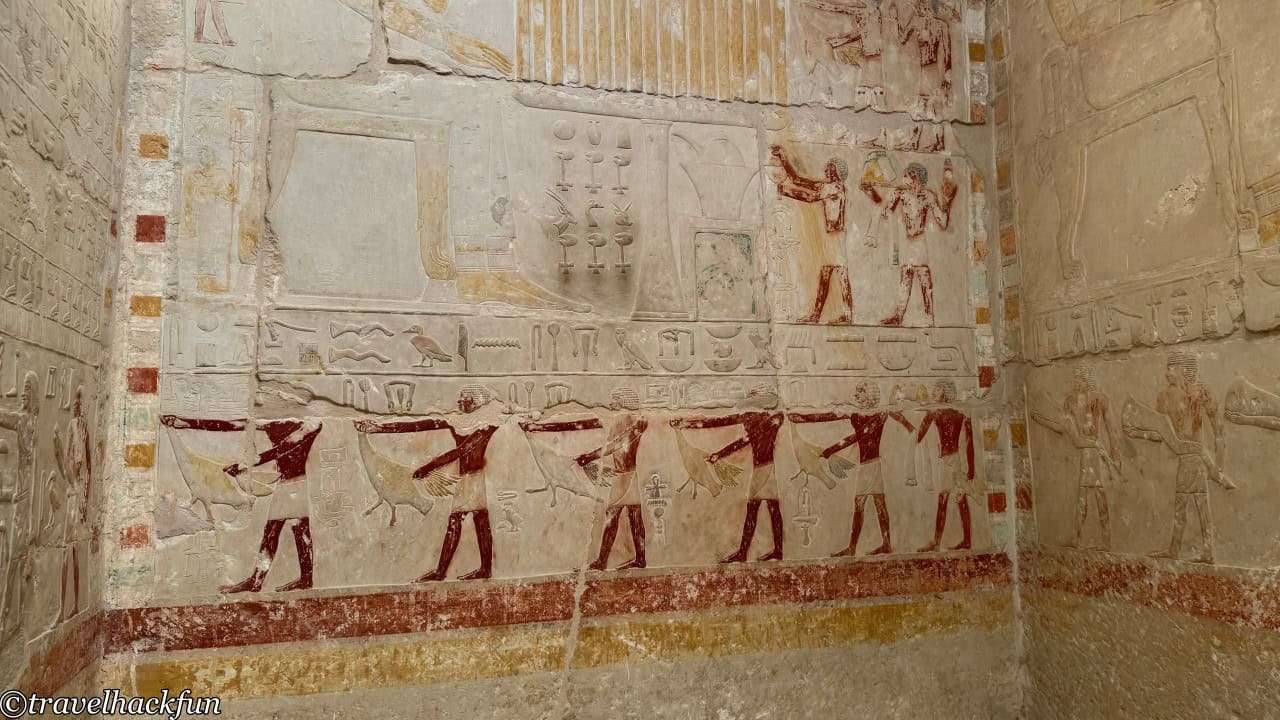

A false door is a common element in ancient Egyptian tombs, often placed on the wall of a burial chamber or chapel. It is a symbolic door representing the entrance for the soul, allowing the soul of the deceased to enter and exit the tomb to receive offerings.
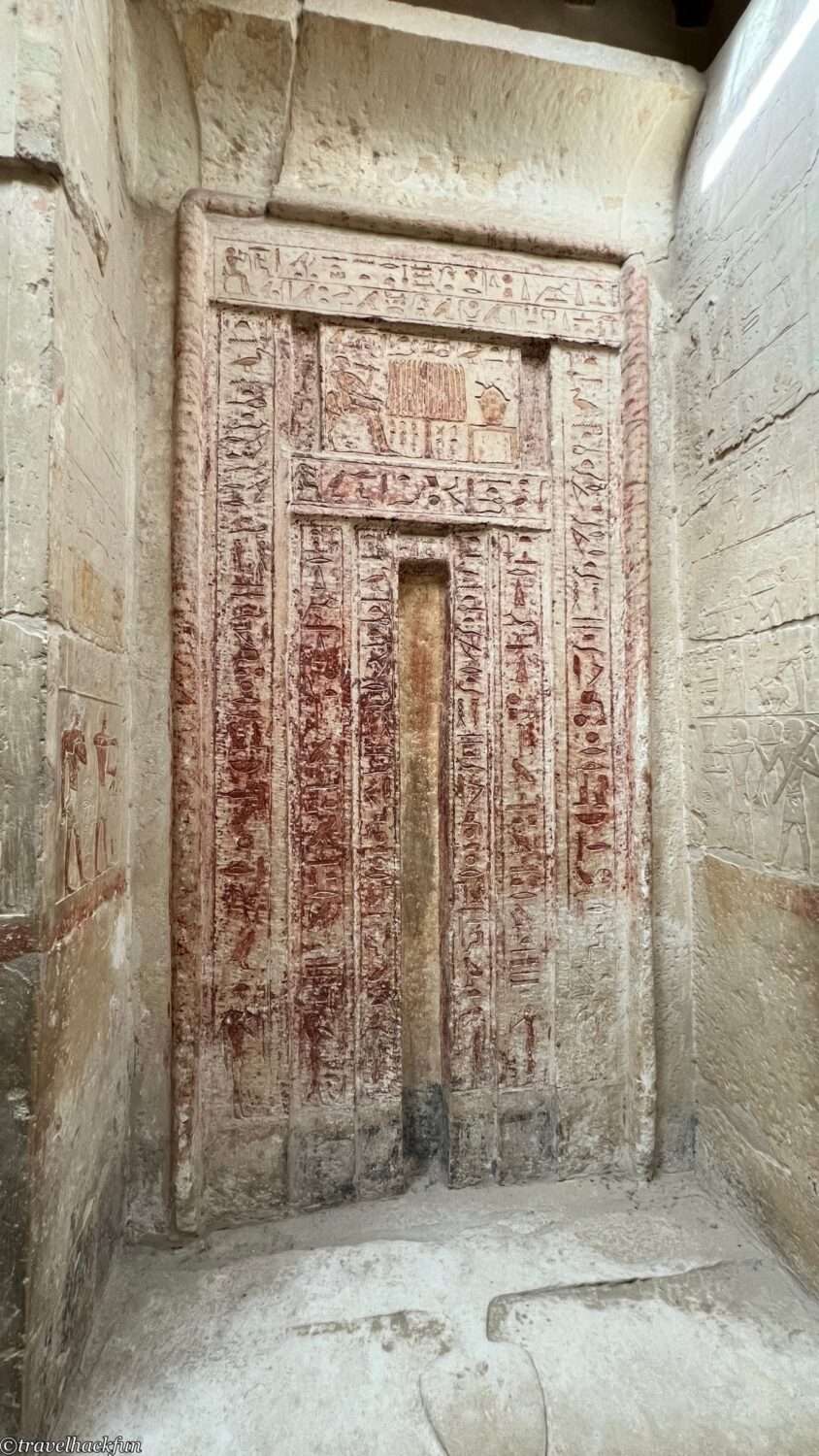

Must See | Tomb of Mehu
The Tomb of Mehu belongs to a high-ranking official named Mehu from the Sixth Dynasty of ancient Egypt. This tomb is very well preserved.

The interior of the Mehu tomb is adorned with rich and well-preserved murals, vividly depicting the daily life, agricultural activities, hunting scenes, and religious ceremonies of ancient Egyptians. The false door of the tomb chamber is also very beautiful, with a blue background and basket patterns still visible, indicating the noble status of the owner.
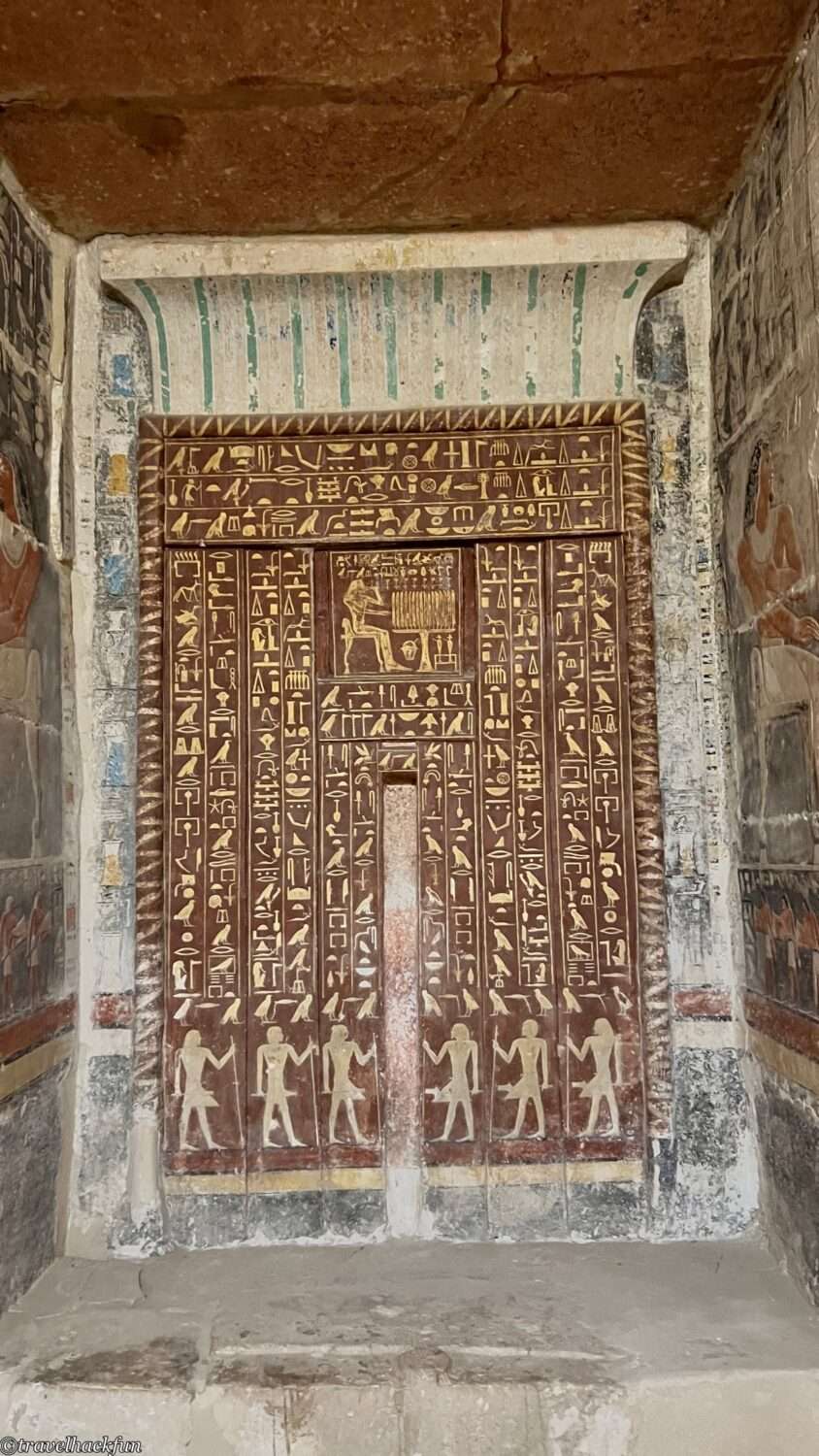

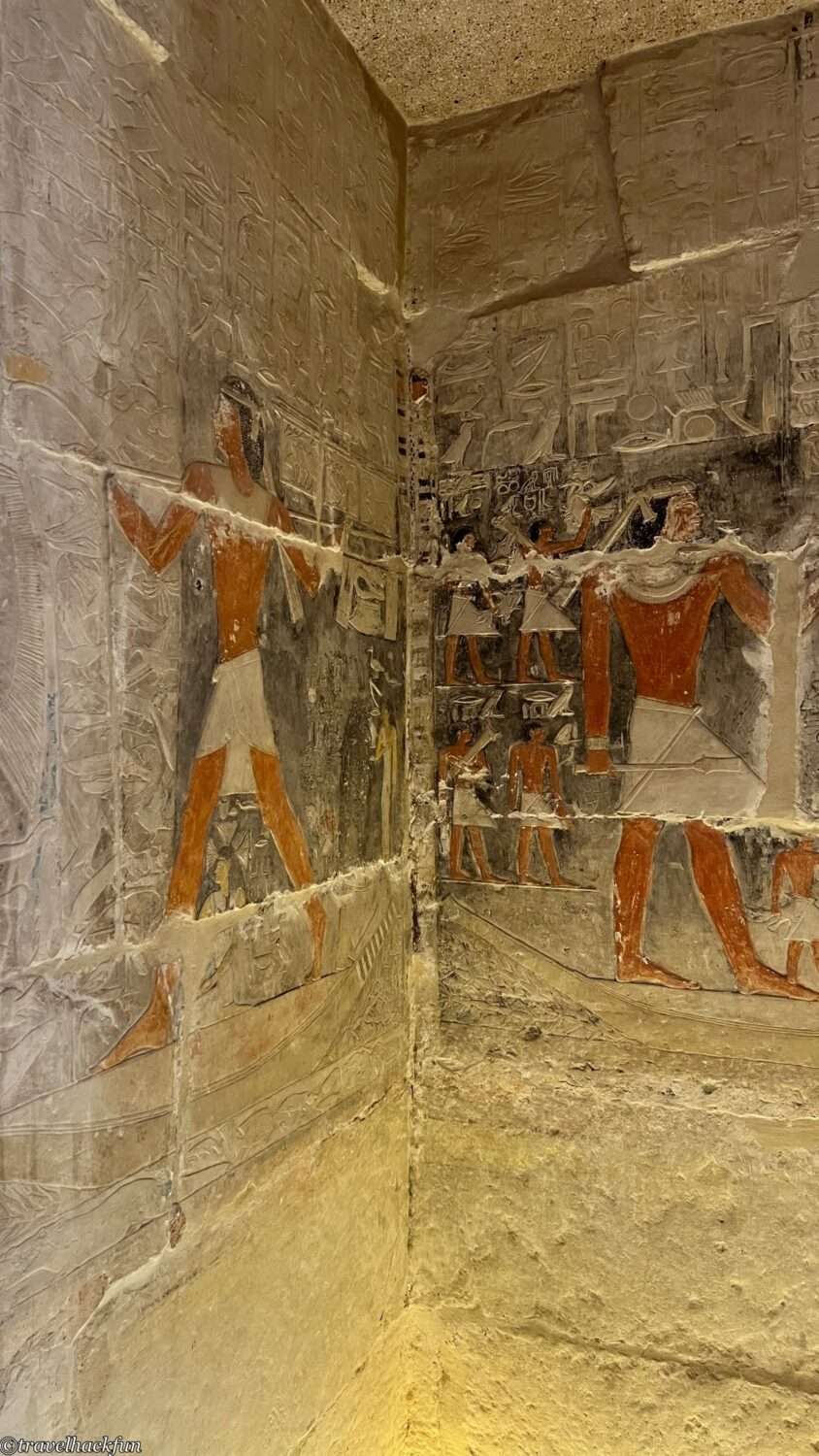
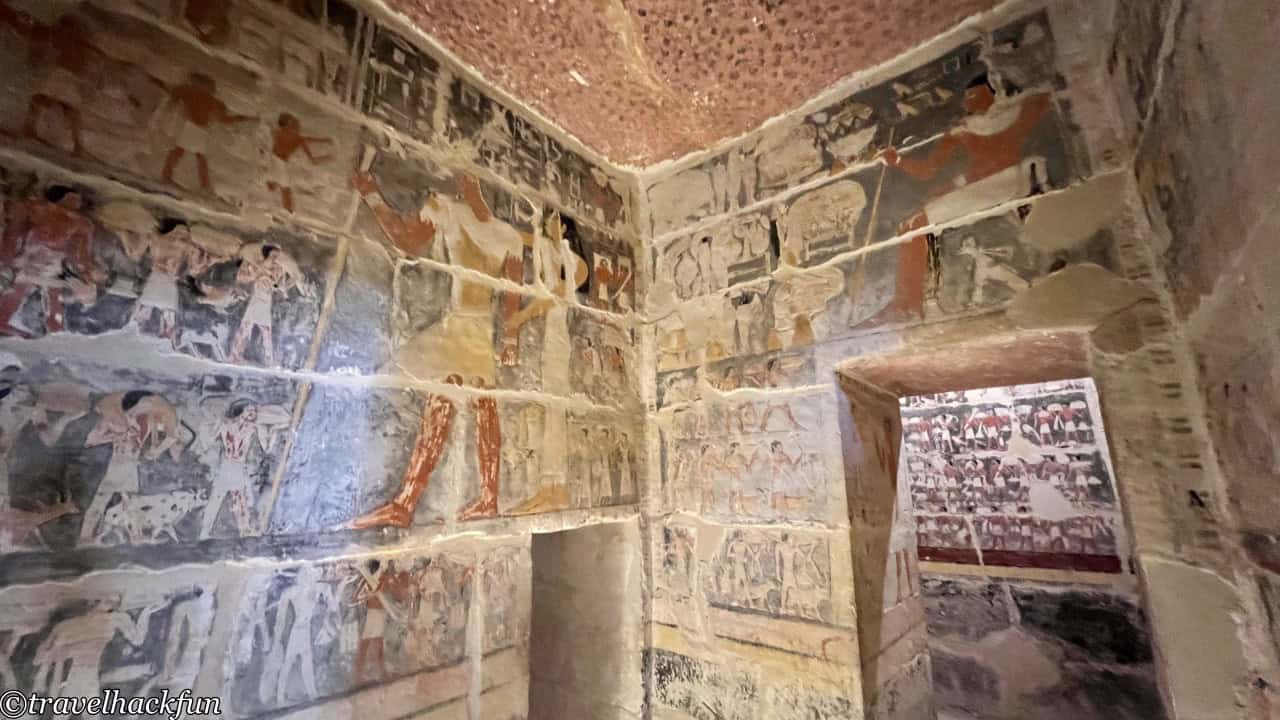

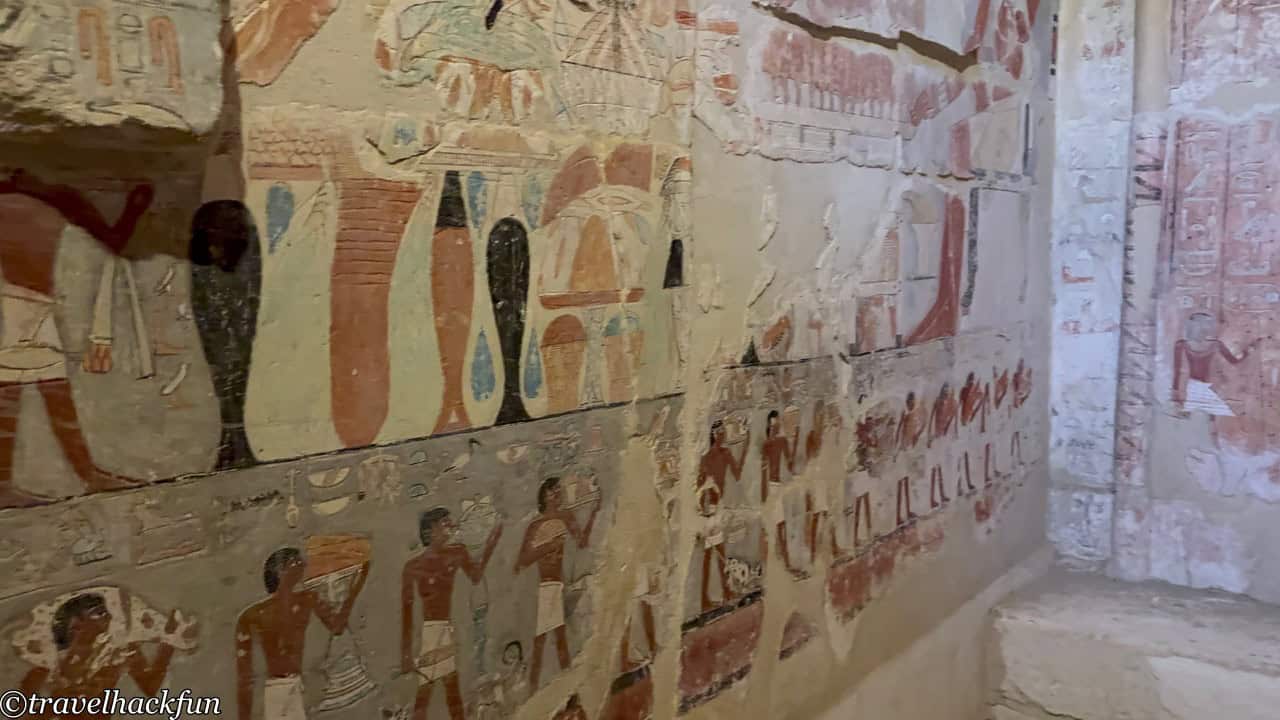
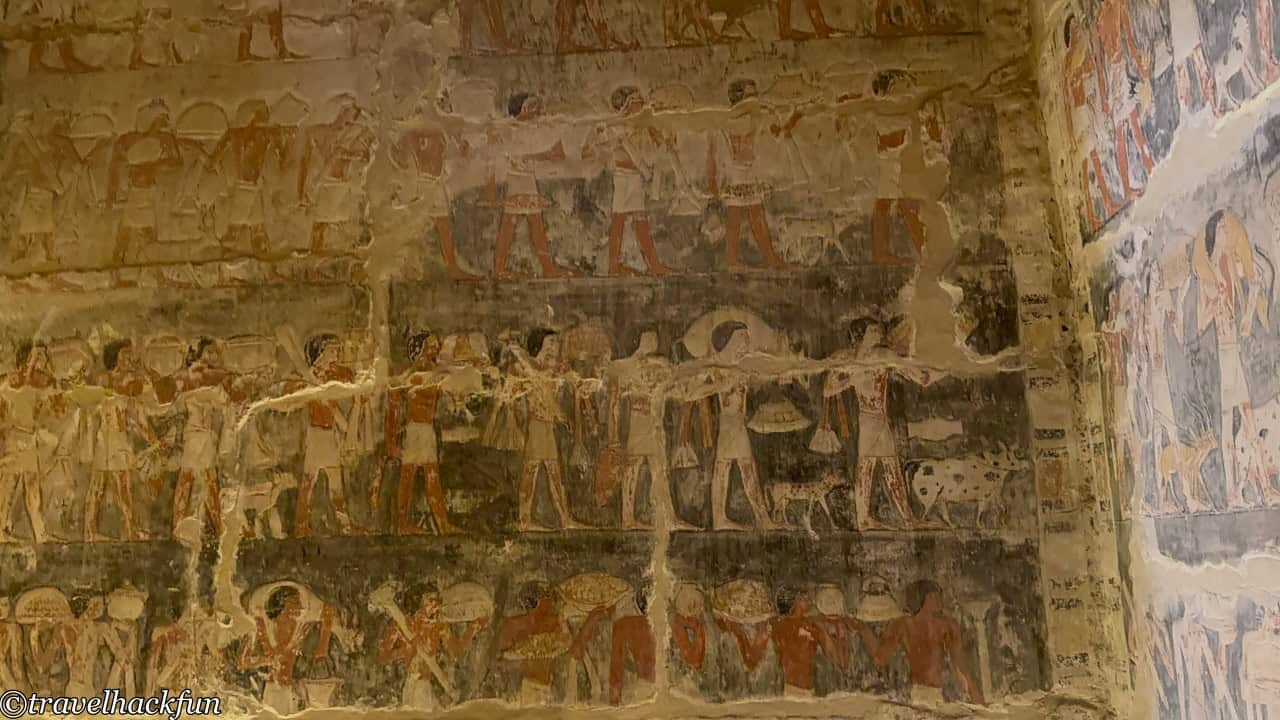
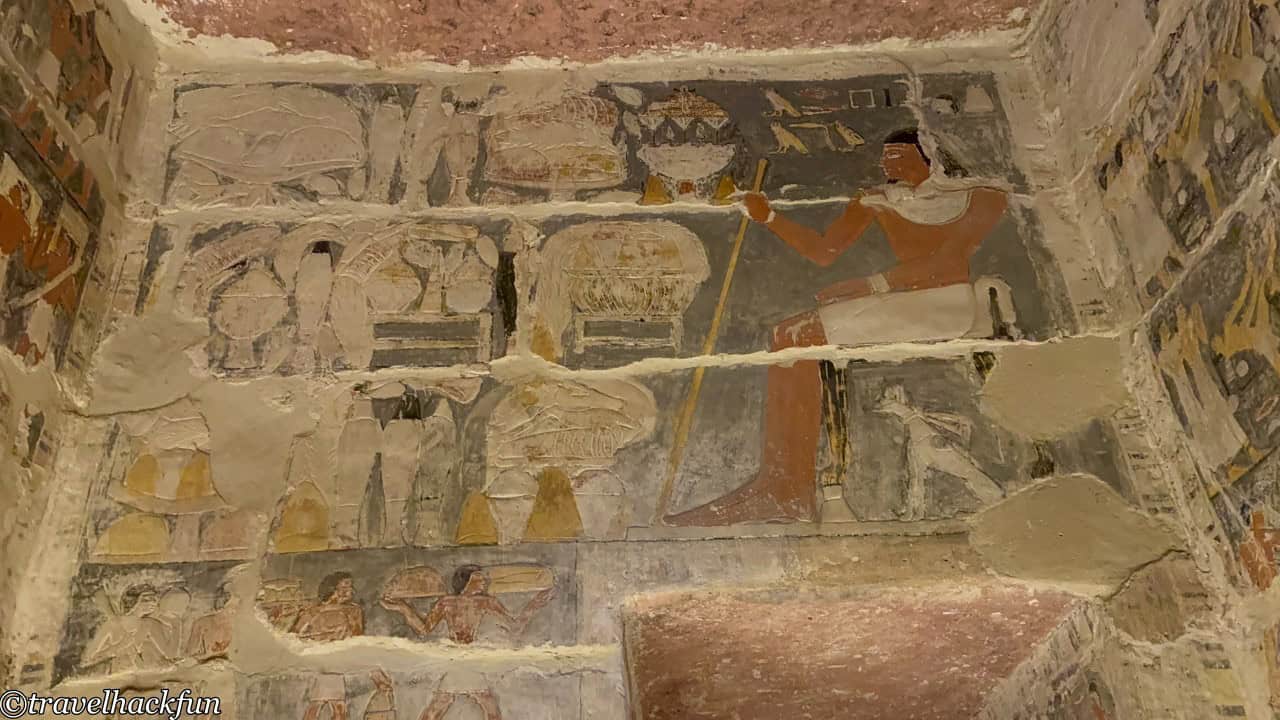
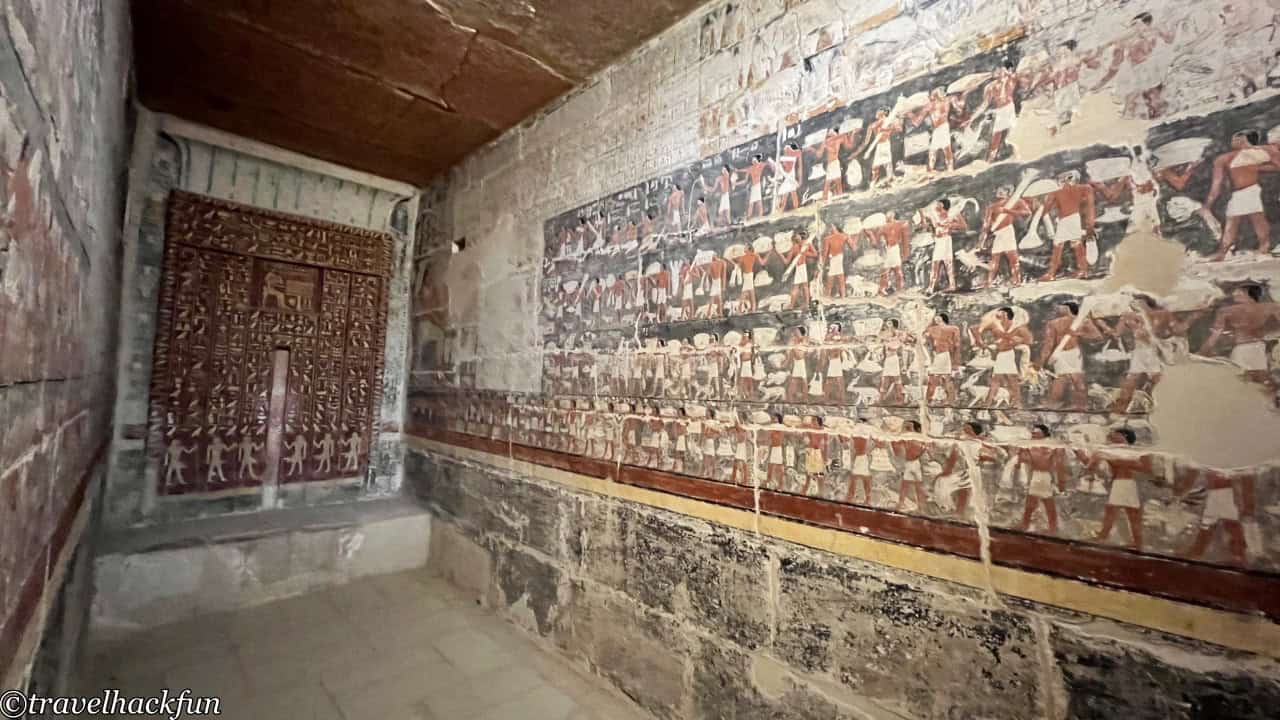
From the carvings on the tomb chamber, we learn that during his lifetime Mehu held several important positions, including the scribe of the pharaoh and the royal seal bearer, among other roles. Although the colors have not been preserved on the small courtyard outside, the overall structure still looks quite grand, and the columns still bear pyramid texts.
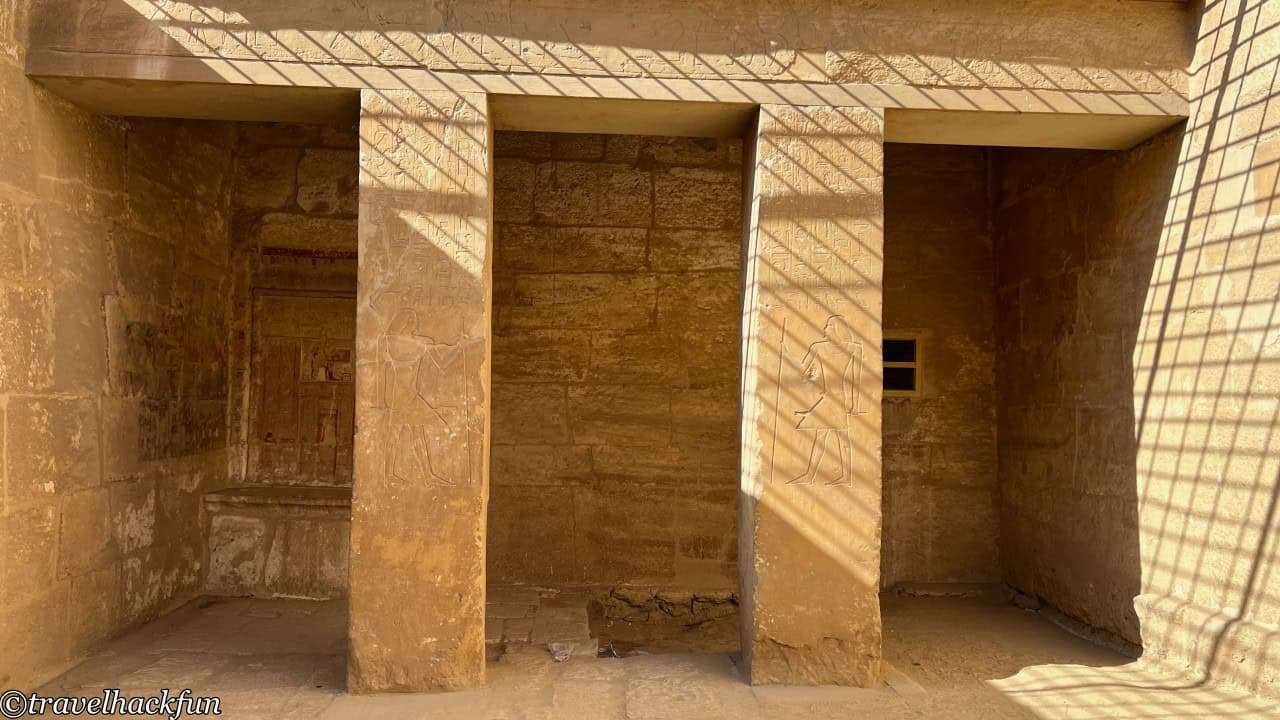
Tomb of Irukapta and Nefer
Irukapta and Nefer were high-ranking officials of the Fifth Dynasty, and the tombs of these two individuals are located somewhat underground. Irukapta was a royal priest and butcher, and his tomb includes fourteen well-preserved colored statues, which is quite rare in tombs from the Old Kingdom period.
Nefer's tomb features numerous reliefs, primarily depicting music, dance, fishing, and agricultural activities.
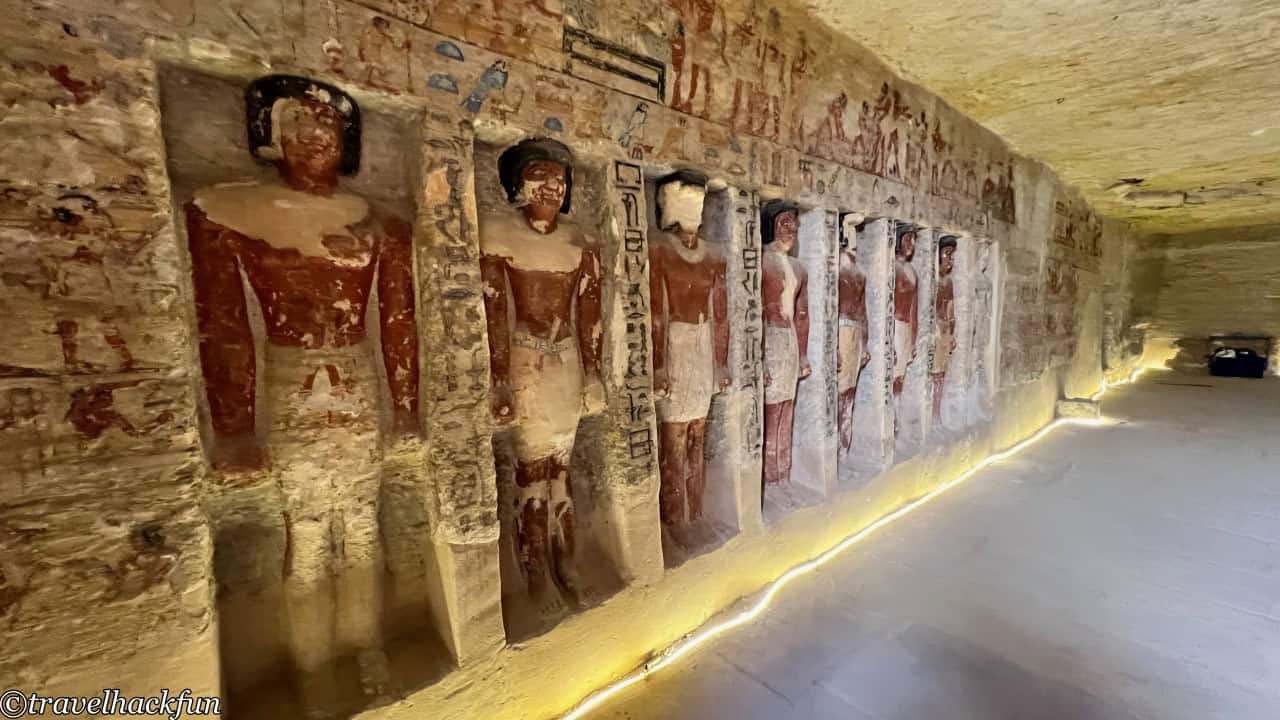
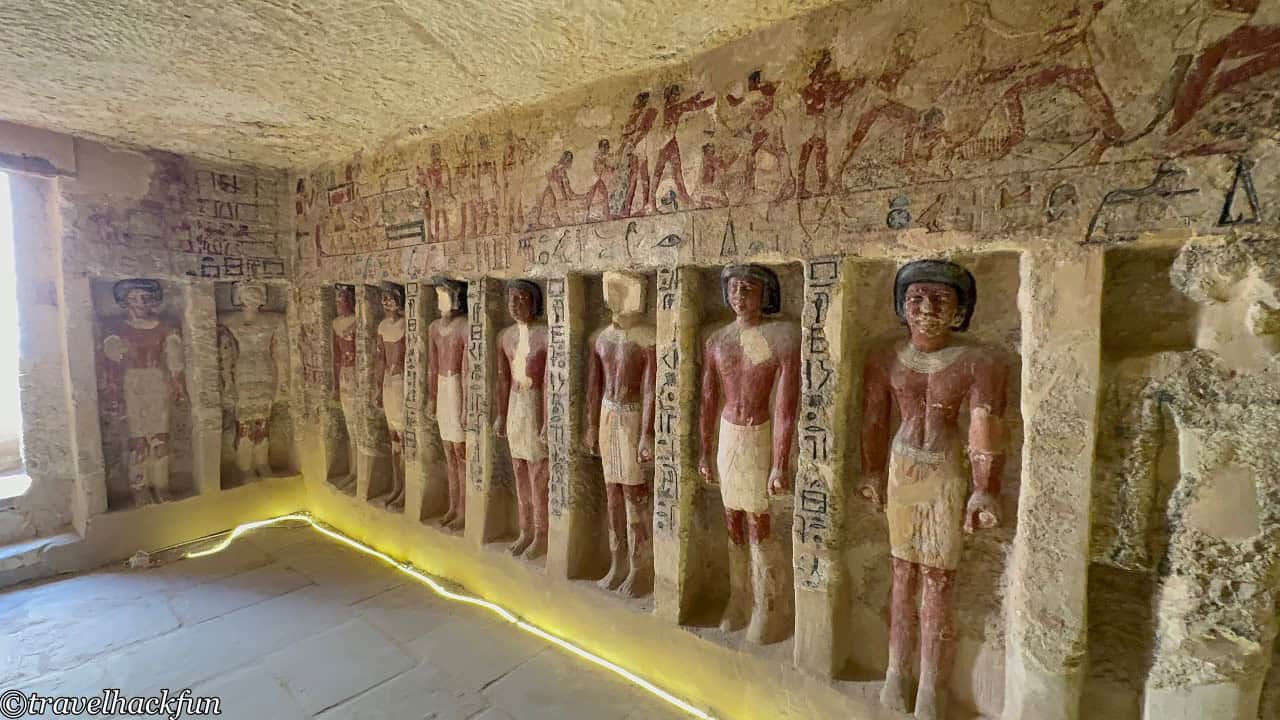
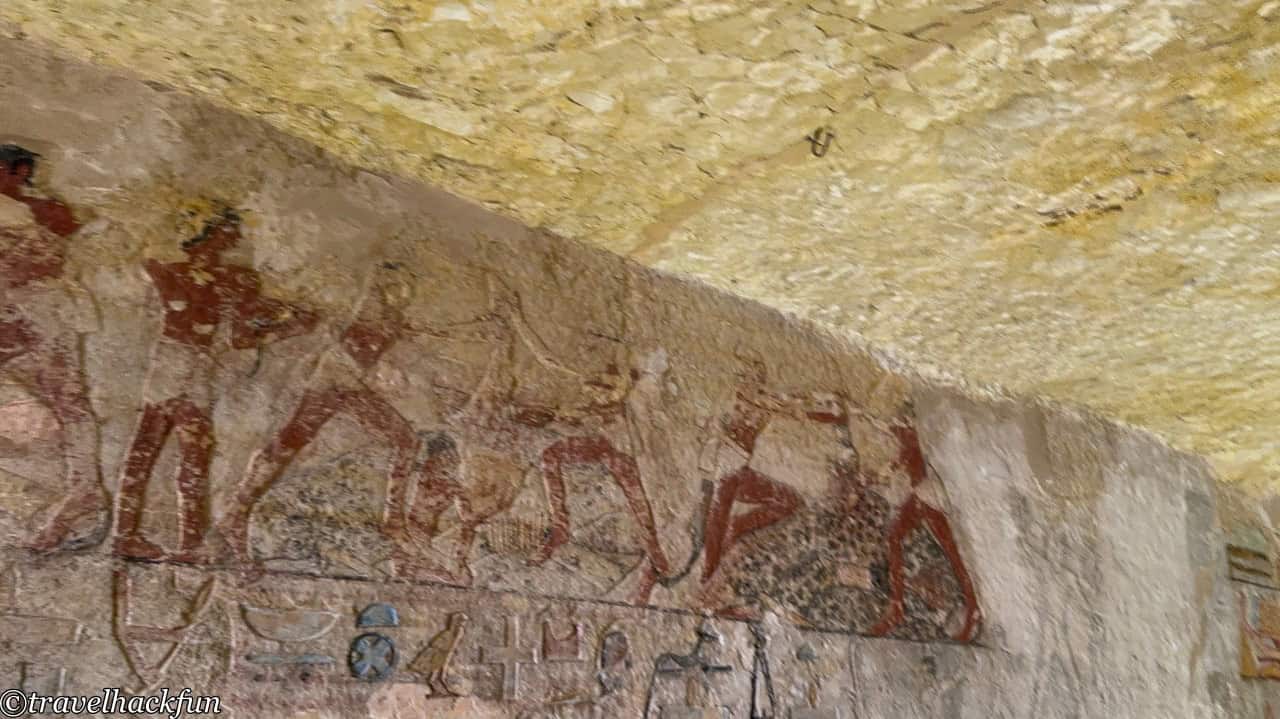
Tomb of the Two Brothers (Tomb of Niankhkhnum and Khnumhotep)
The Tomb of the Two Brothers is one of the most famous and lavishly decorated tombs in Saqqara. Niankhkhnum and Khnumhotep were officials during the Fifth Dynasty, serving as court beauticians and priests of the Sun Temple during the reign of Pharaoh Nyuserre. The two owners of the tomb are depicted in intimate poses in many scenes, which is quite rare in ancient Egyptian tomb art. While there is no definitive conclusion, most scholars believe they might have been twin brothers, which is why this is also called the Tomb of the Two Brothers.
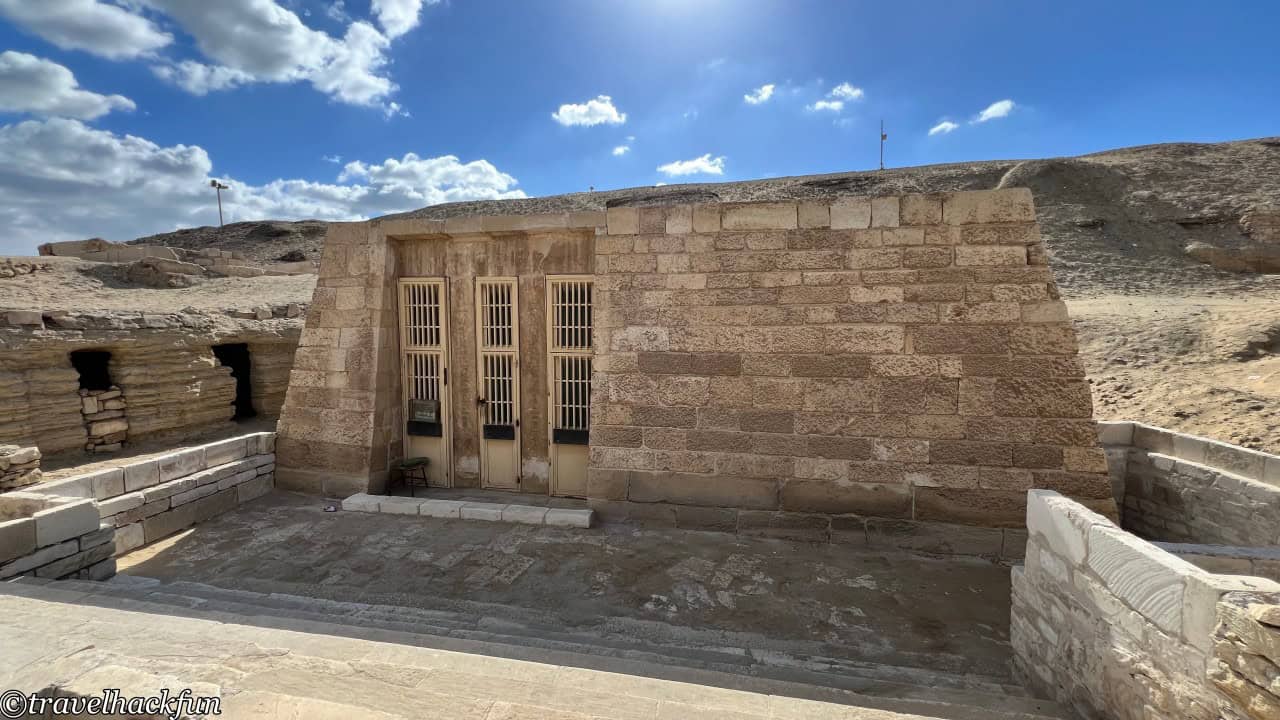
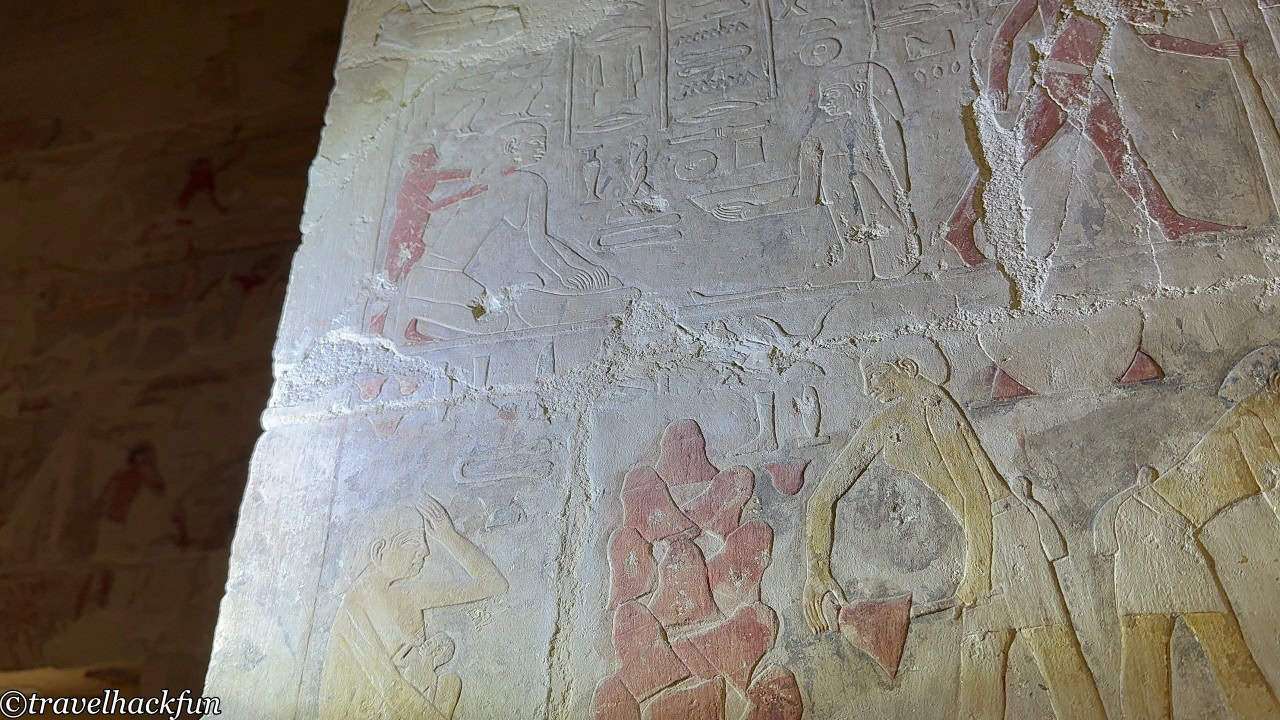
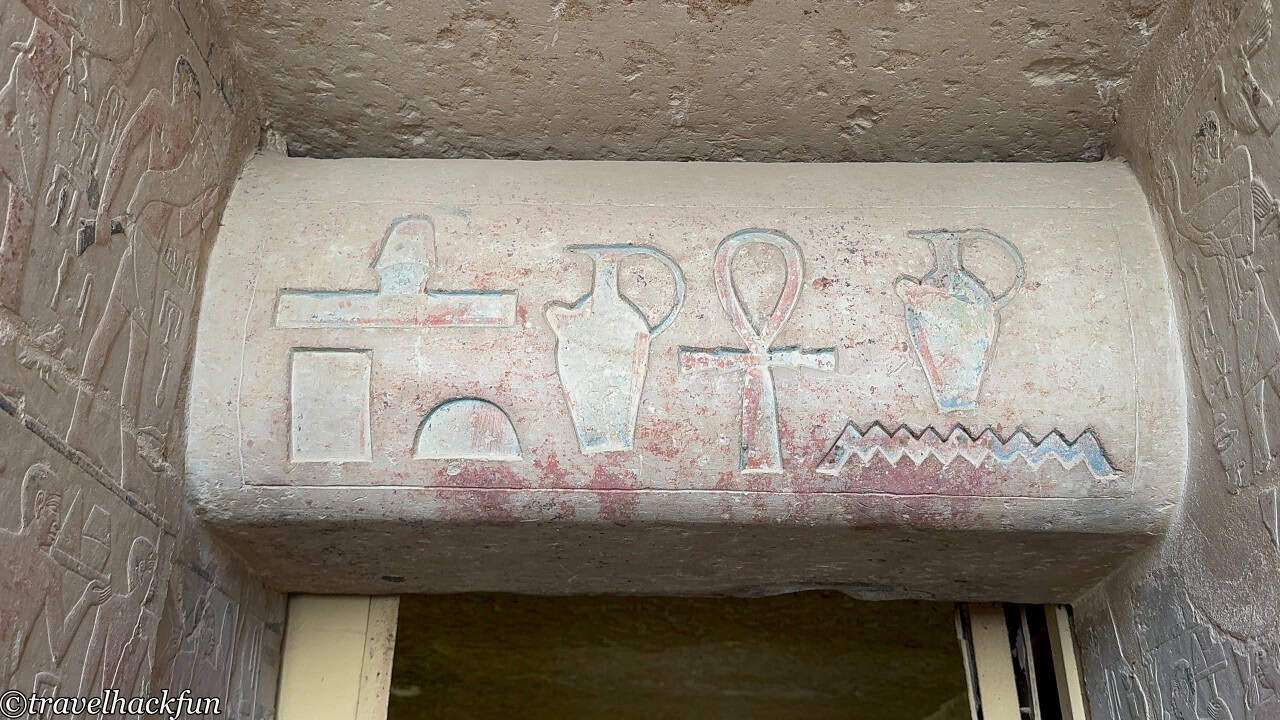

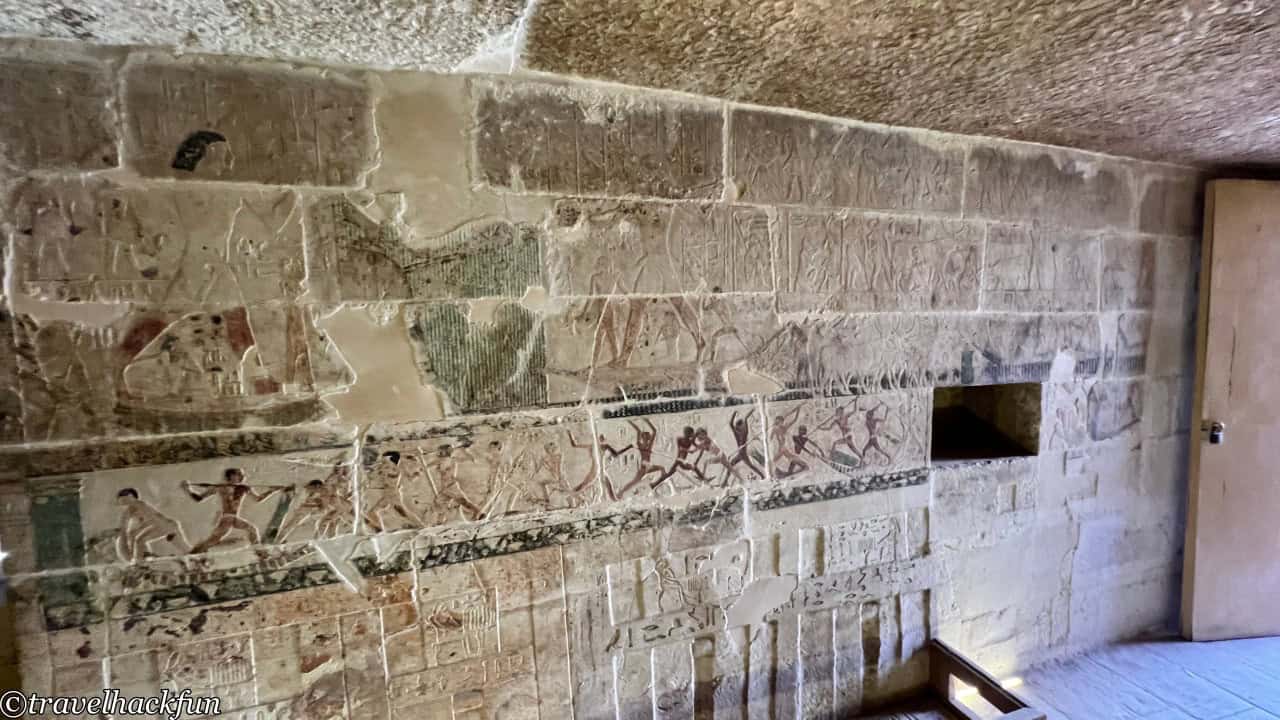

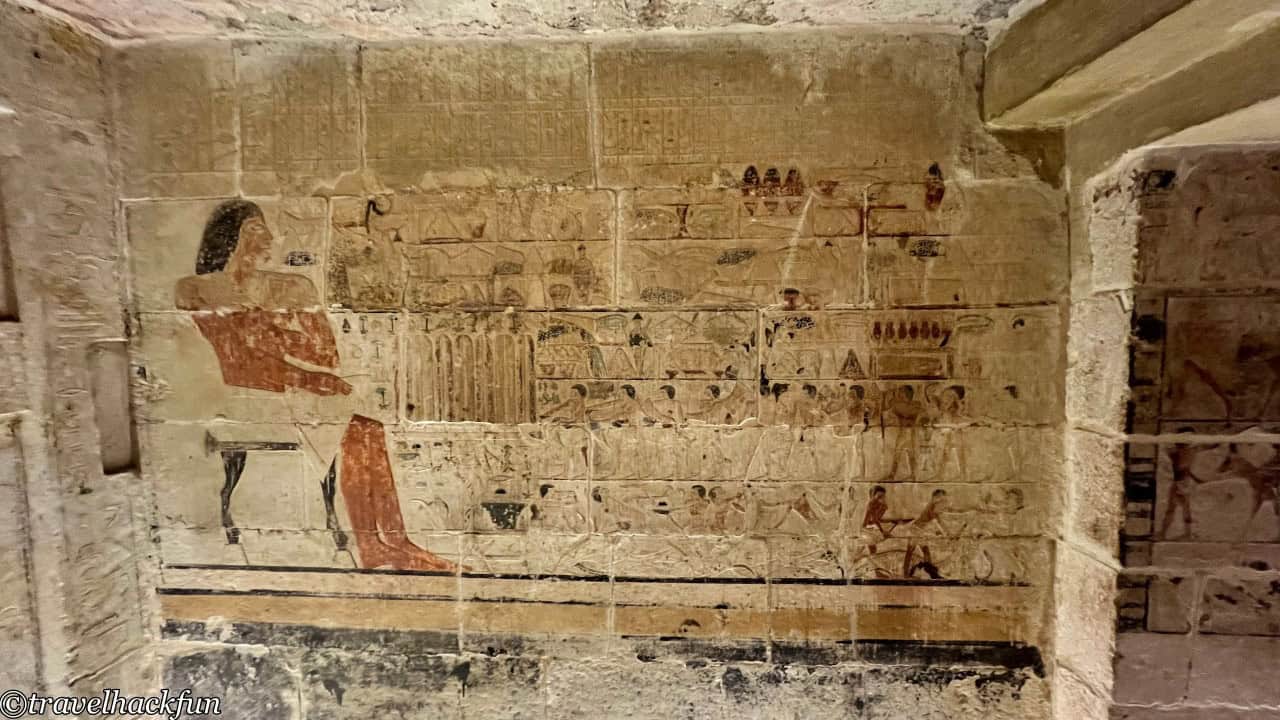
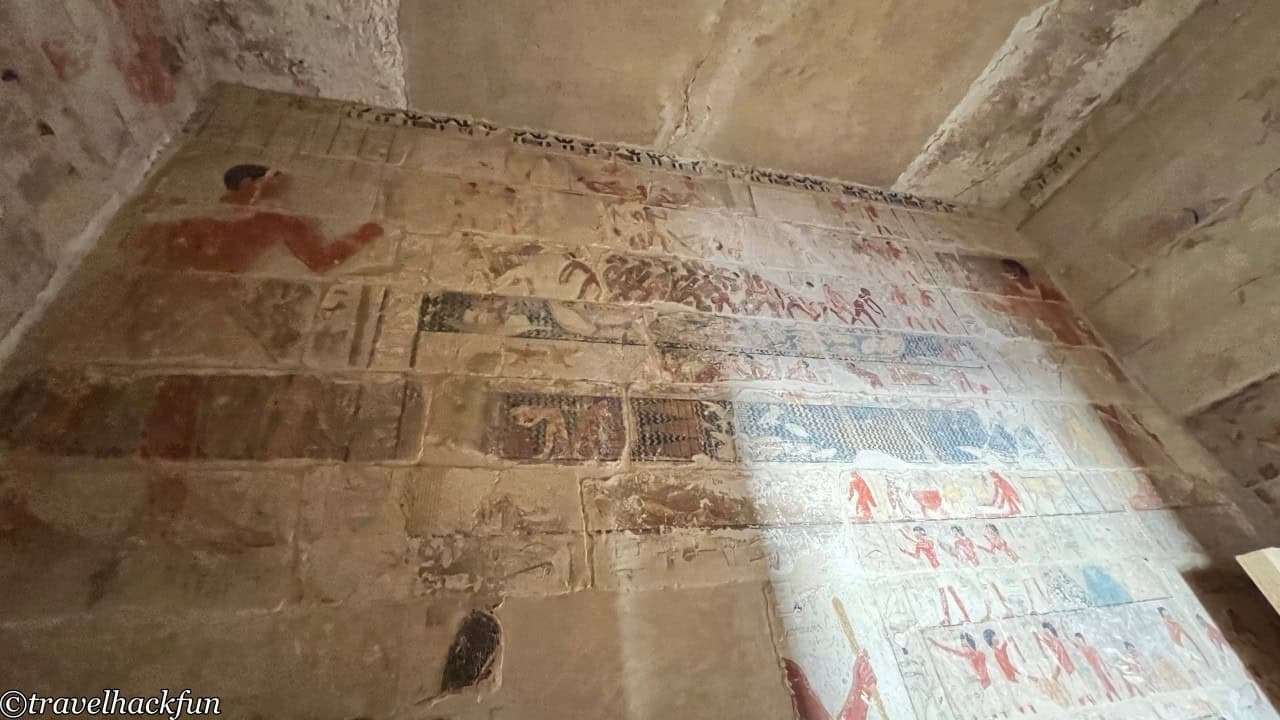
New Kingdom Cemetery Area
Walking south from the Unas Pyramids, you can reach the New Kingdom tomb area. As we previously mentioned, Saqqara's extensive necropolis contains tombs from nearly every period in Egyptian history. The New Kingdom period (circa 1550 to 1069 BCE) includes tombs of several important officials from the Eighteenth to the Twentieth Dynasties. The burial styles are quite different from those of the Old Kingdom period.
During the New Kingdom period, some of the larger tombs were constructed in a manner similar to temples, with a pylon gate leading into an open courtyard, followed by the temple itself. The central temple might have a small pyramid symbolizing rebirth. Subsequently, there would be a passage leading to the underground burial chamber.
Must-see | Tomb of Maya
Maya was a high-ranking official of the 18th Dynasty, serving as the Treasurer during the reigns of Pharaoh Tutankhamun and Horemheb. Maya's tomb features exquisite wall paintings and detailed tomb structures. The underground chamber's reliefs are well-preserved, showcasing the life and funerary customs of high-ranking officials from the 18th Dynasty of ancient Egypt.

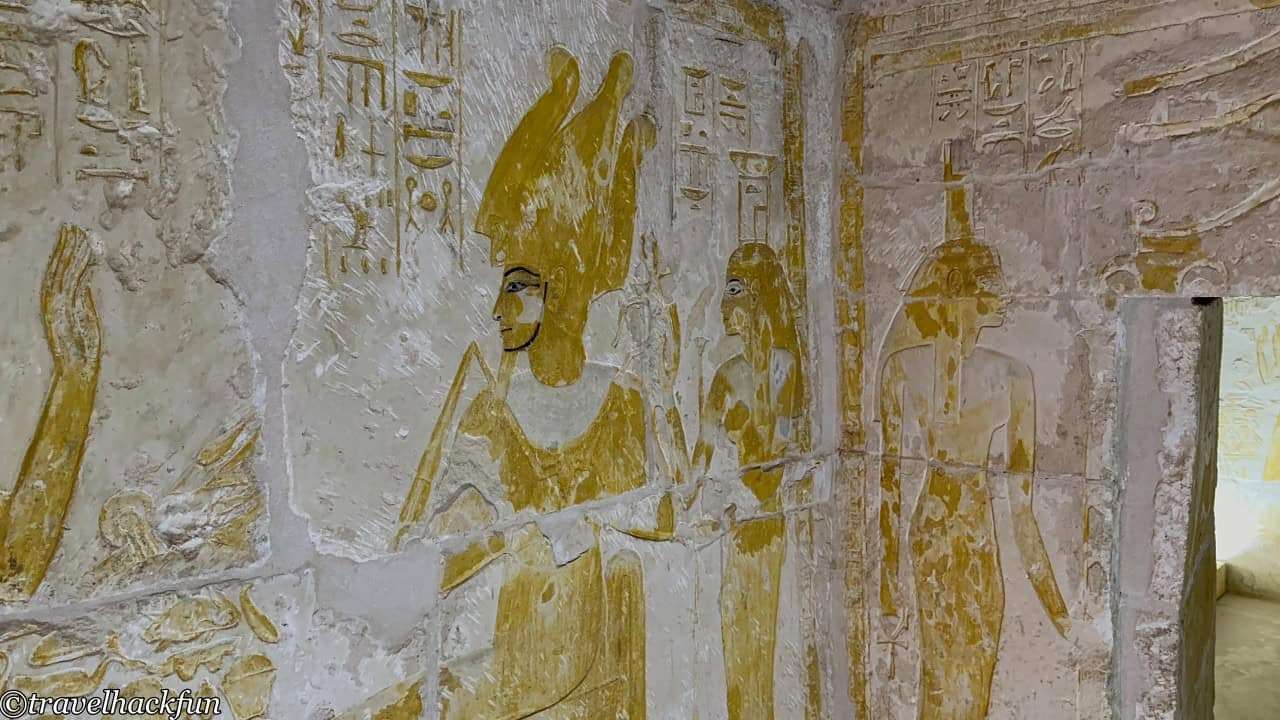

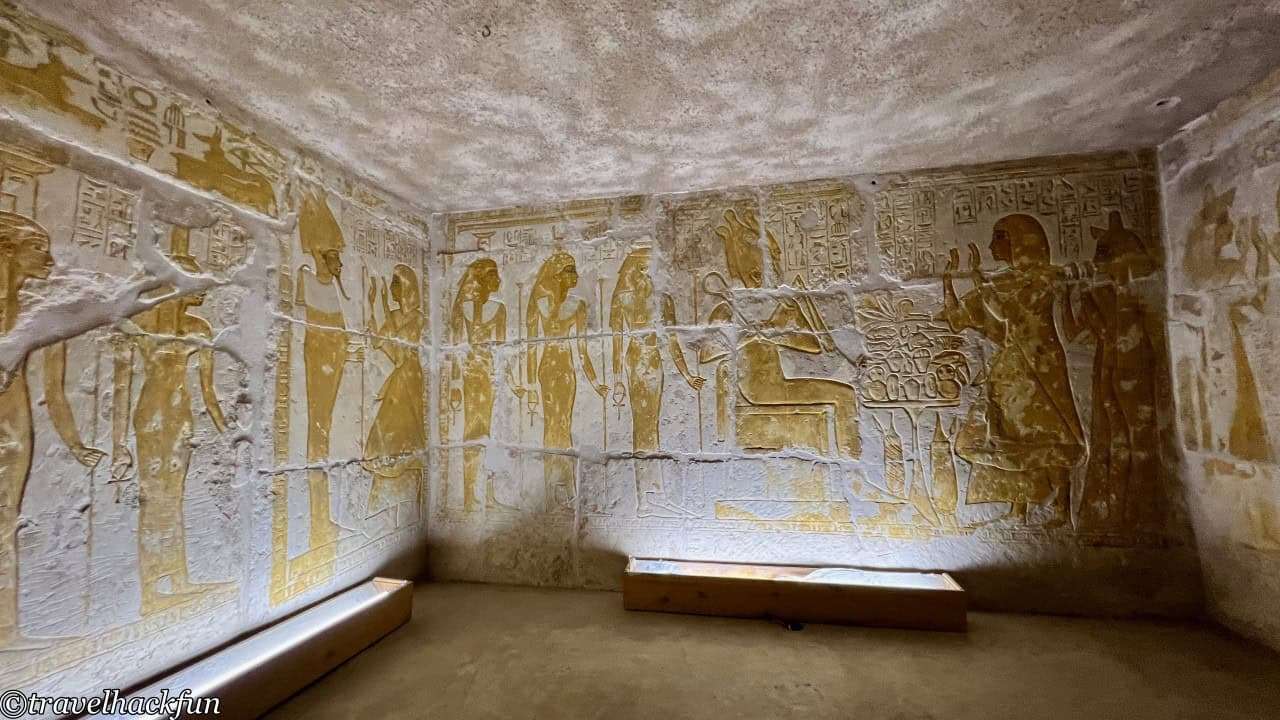
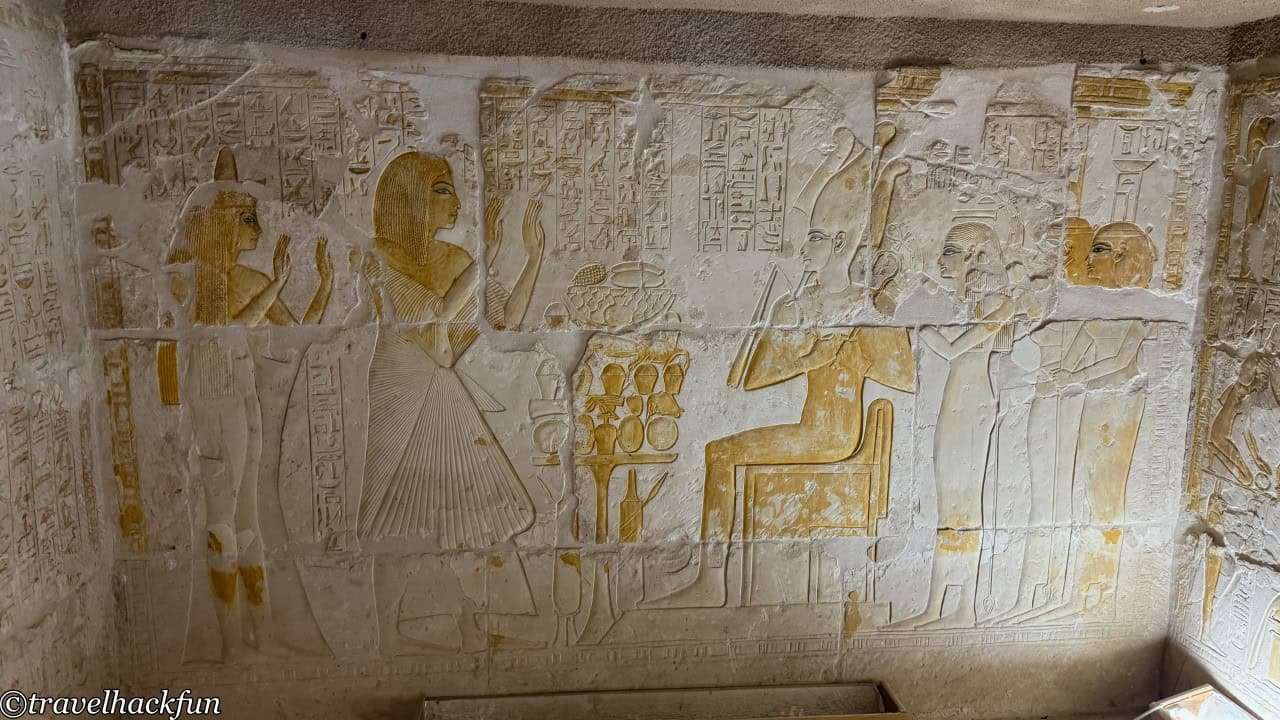
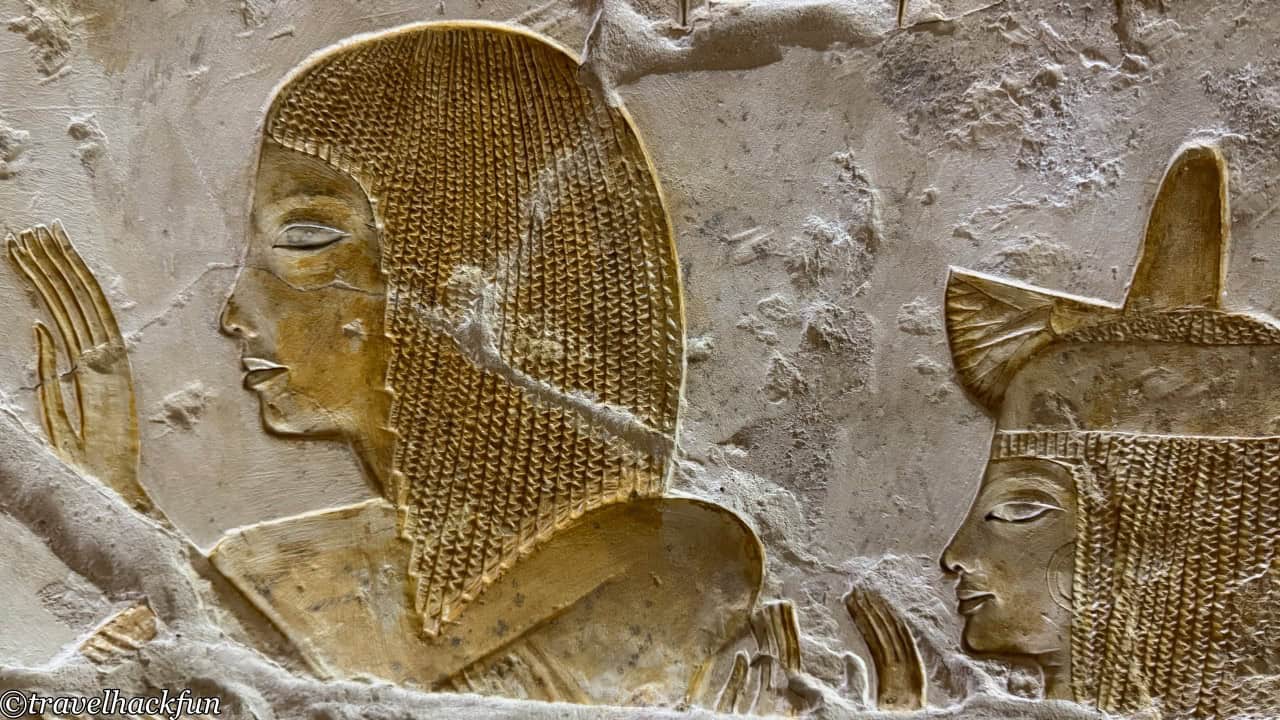
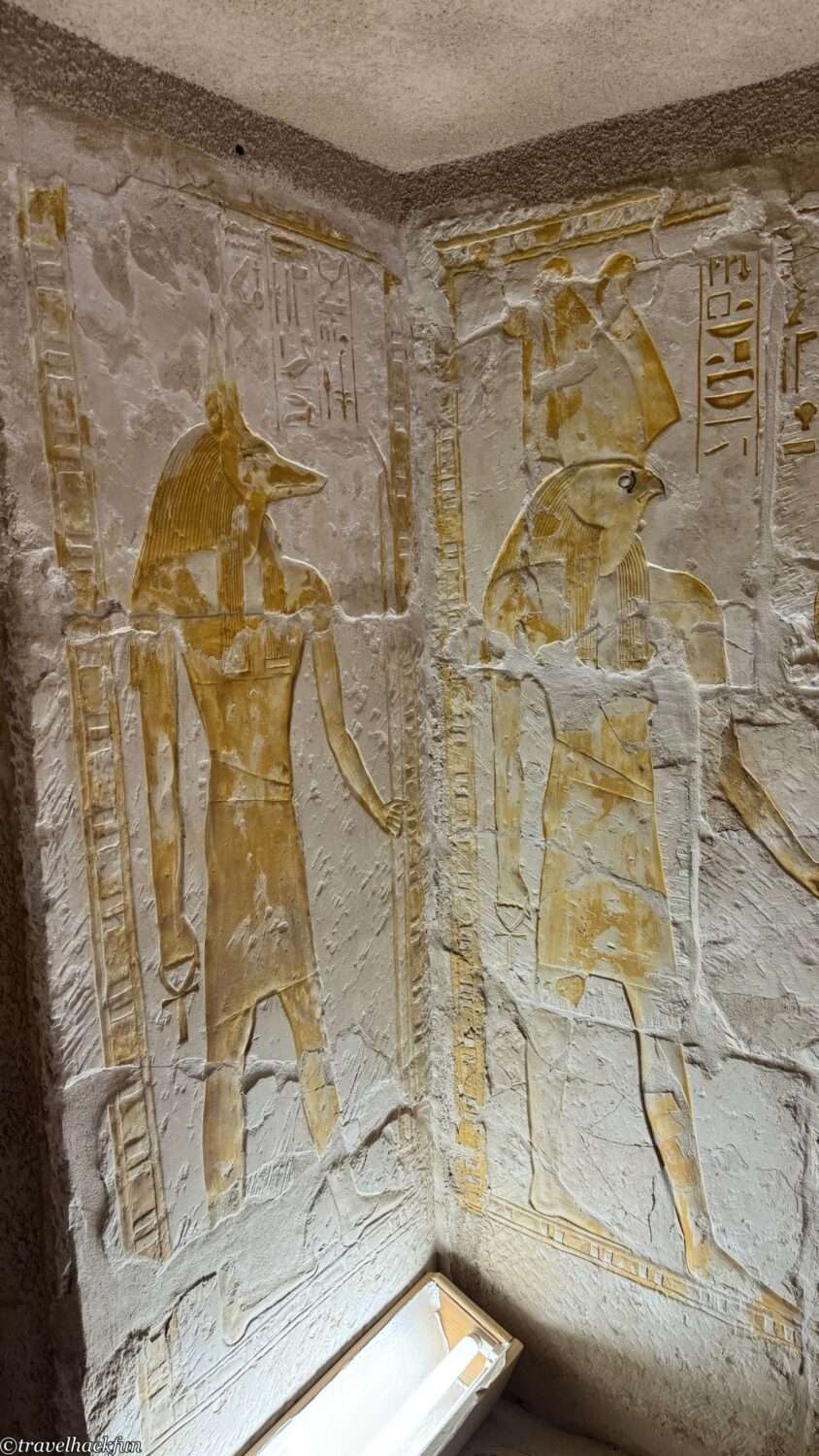
Tomb of Pay and Raia
Pay and Raia were father and son, both serving as Overseers of the Harim during the periods of Tutankhamun and Horemheb. What is particularly special here is the discovery of a sarcophagus similar to a pharaoh's mummy, which is remarkably well-preserved. The outer coffin even features images of pyramids.
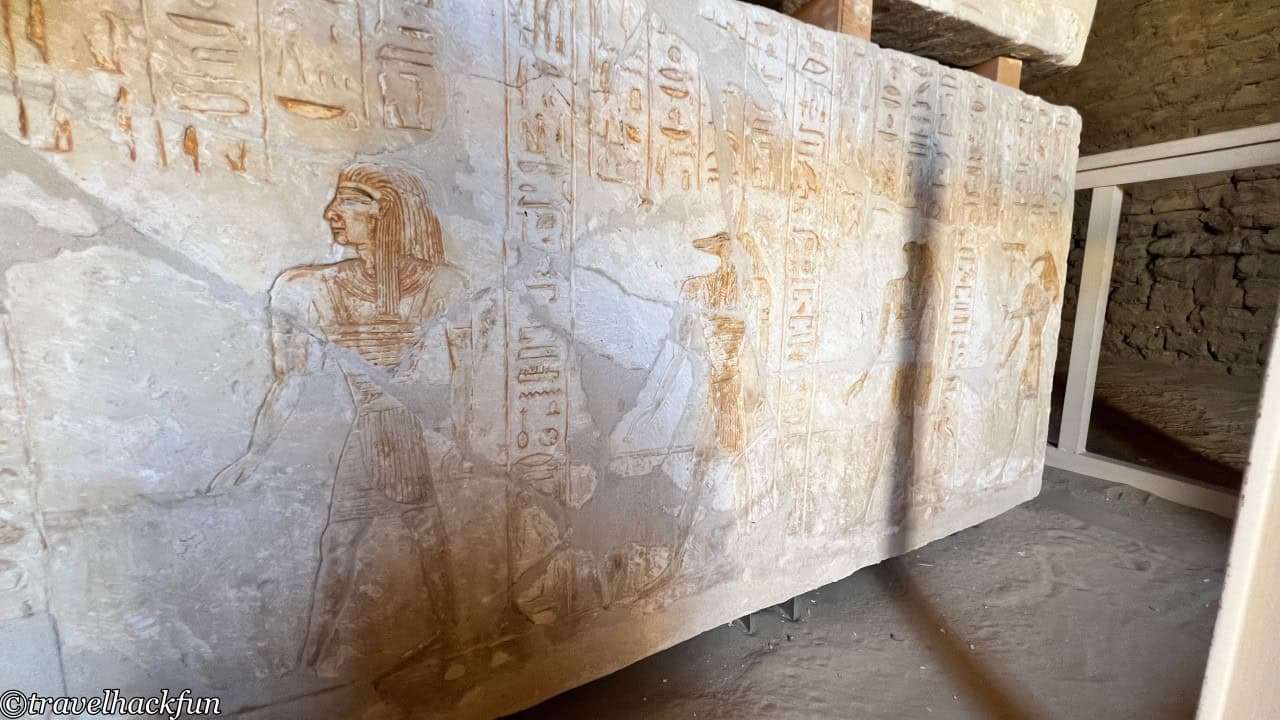
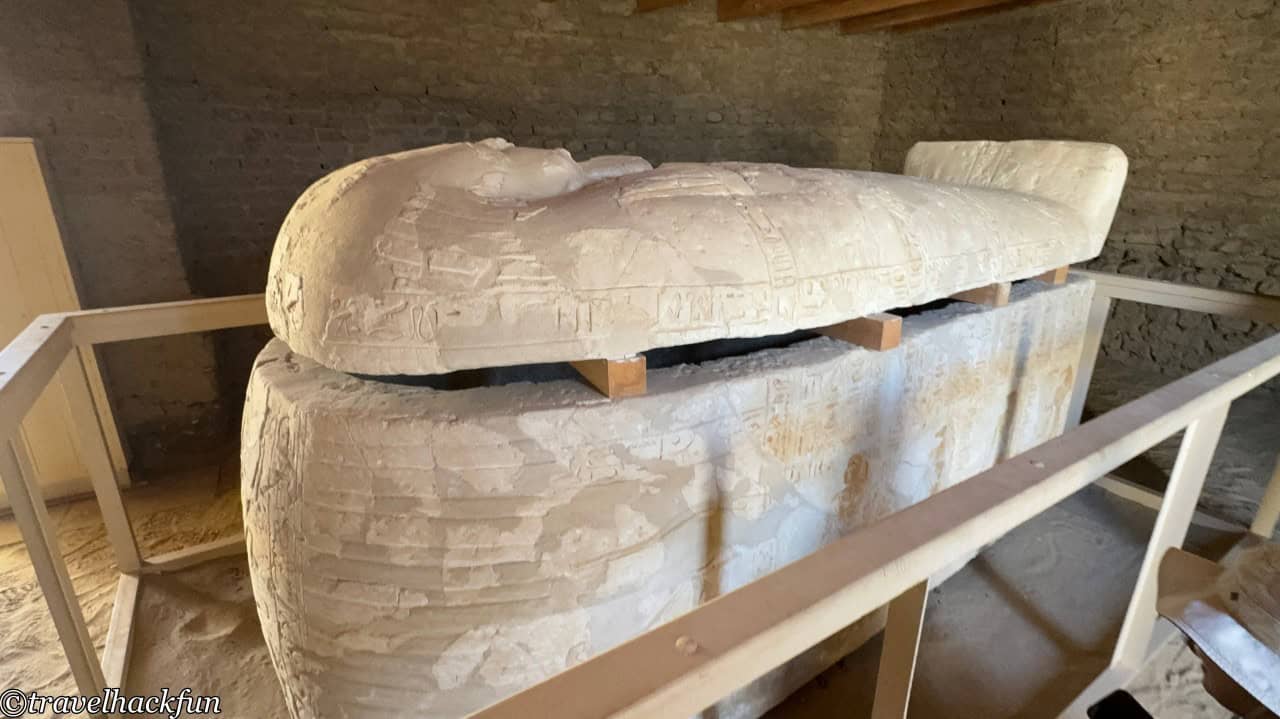
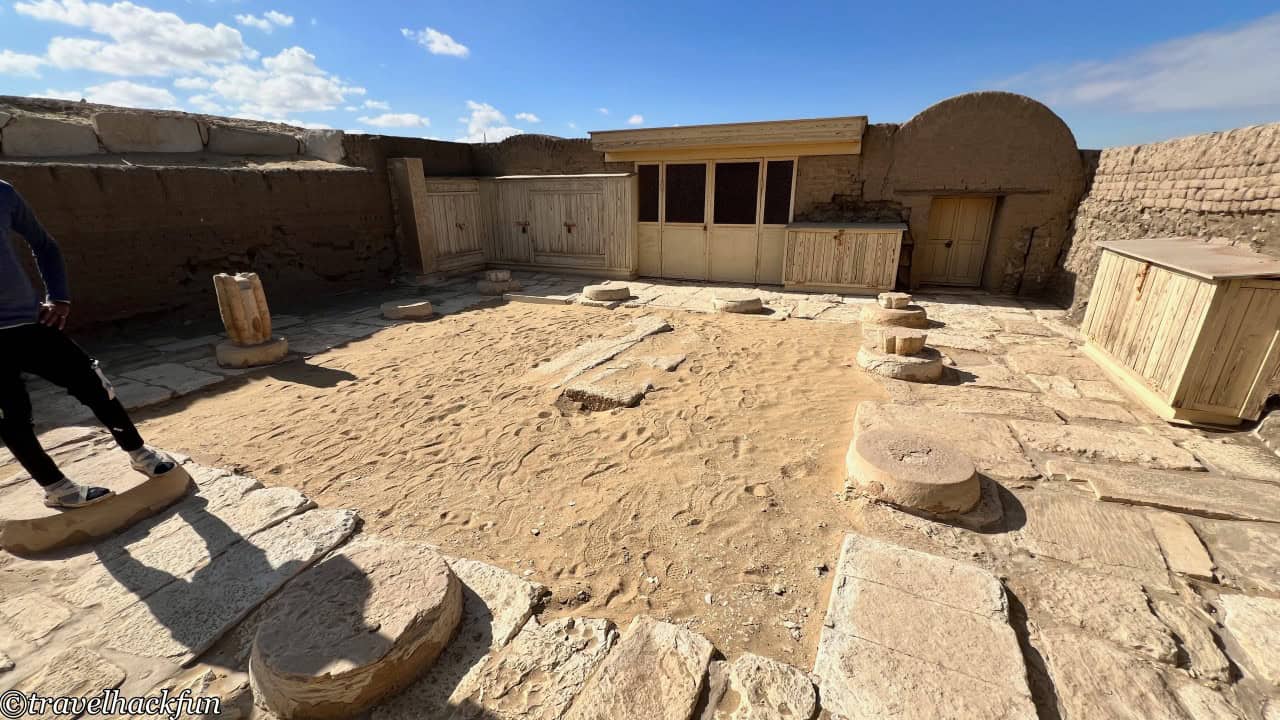
Must See | Tomb of Horemheb
Horemheb, who later became Pharaoh Horemheb, was eventually buried in the Valley of the Kings because he became a pharaoh. However, before becoming a pharaoh, he was a general during the era of Tutankhamun, and therefore built a rather magnificent tomb in Saqqara as a high-ranking official. This tomb can be said to be representative of New Kingdom tombs, with a complex structure consisting of multiple courtyards and temples, essentially designed as a miniature temple. It features an entrance pylon, two forecourts, and a columned courtyard. Although the rear burial chamber did not ultimately house the pharaoh, it still contained burial goods and the remains related to his wife, indicating that it was indeed used.
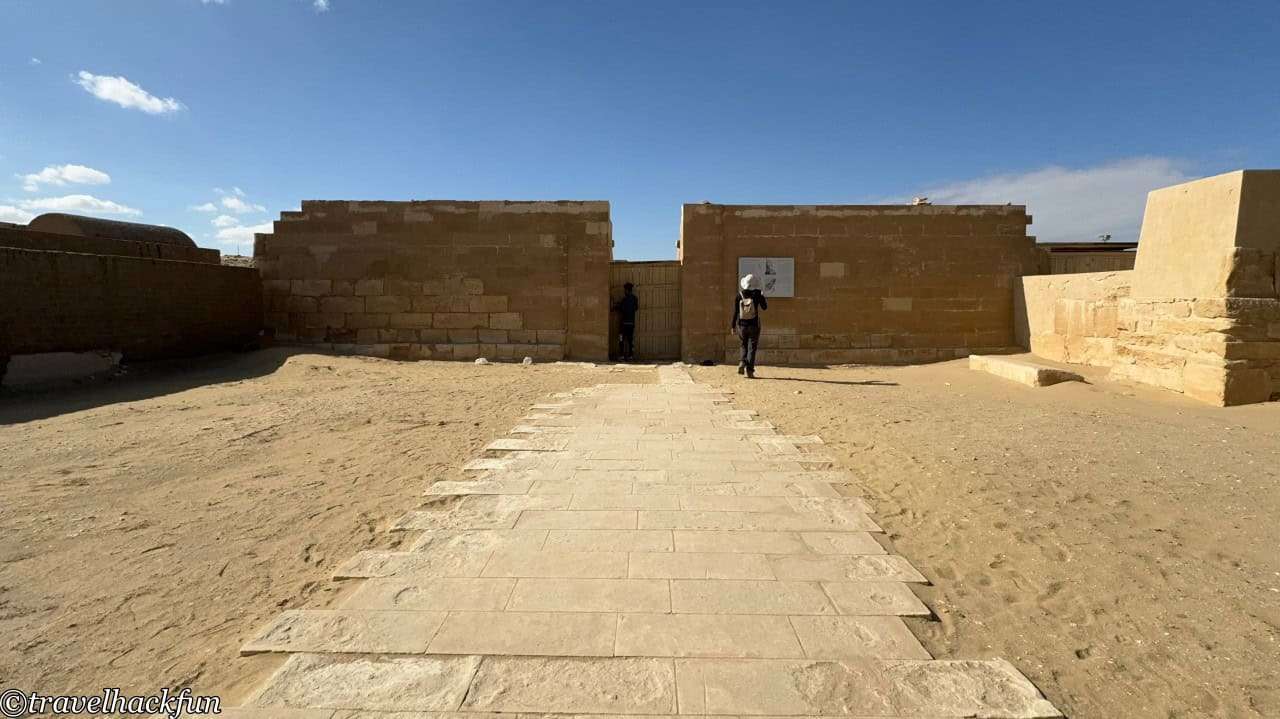

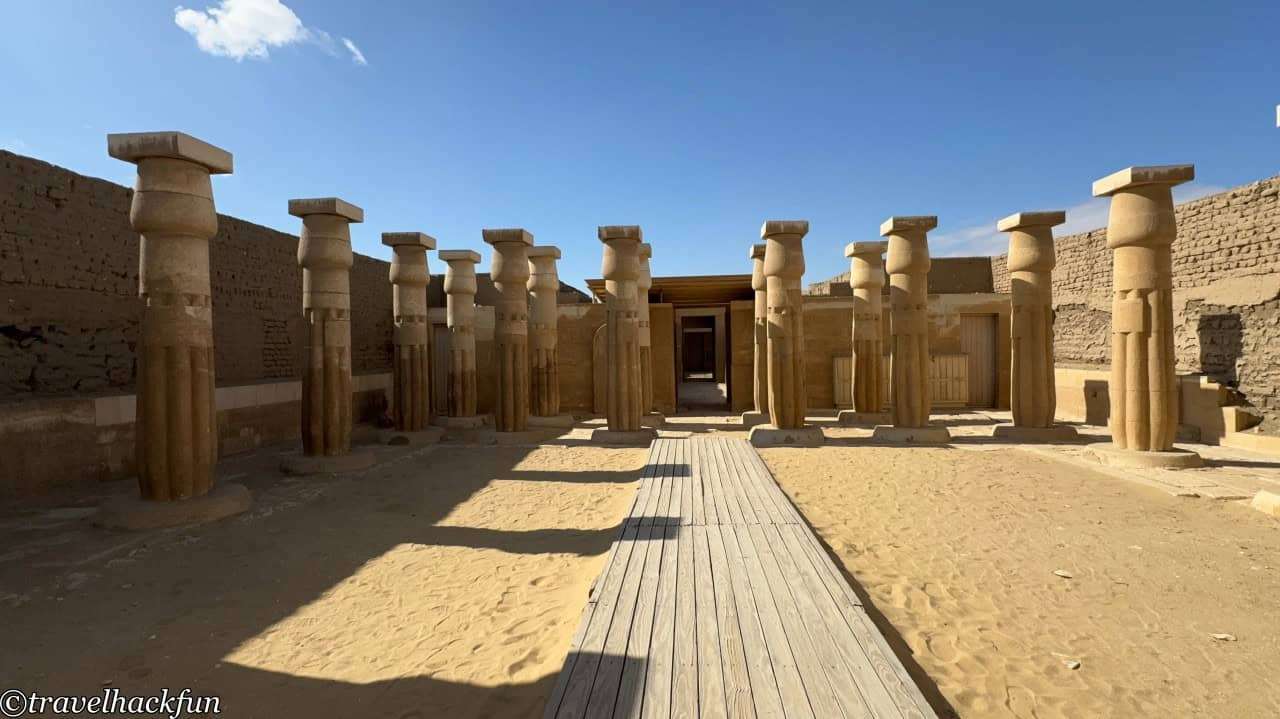
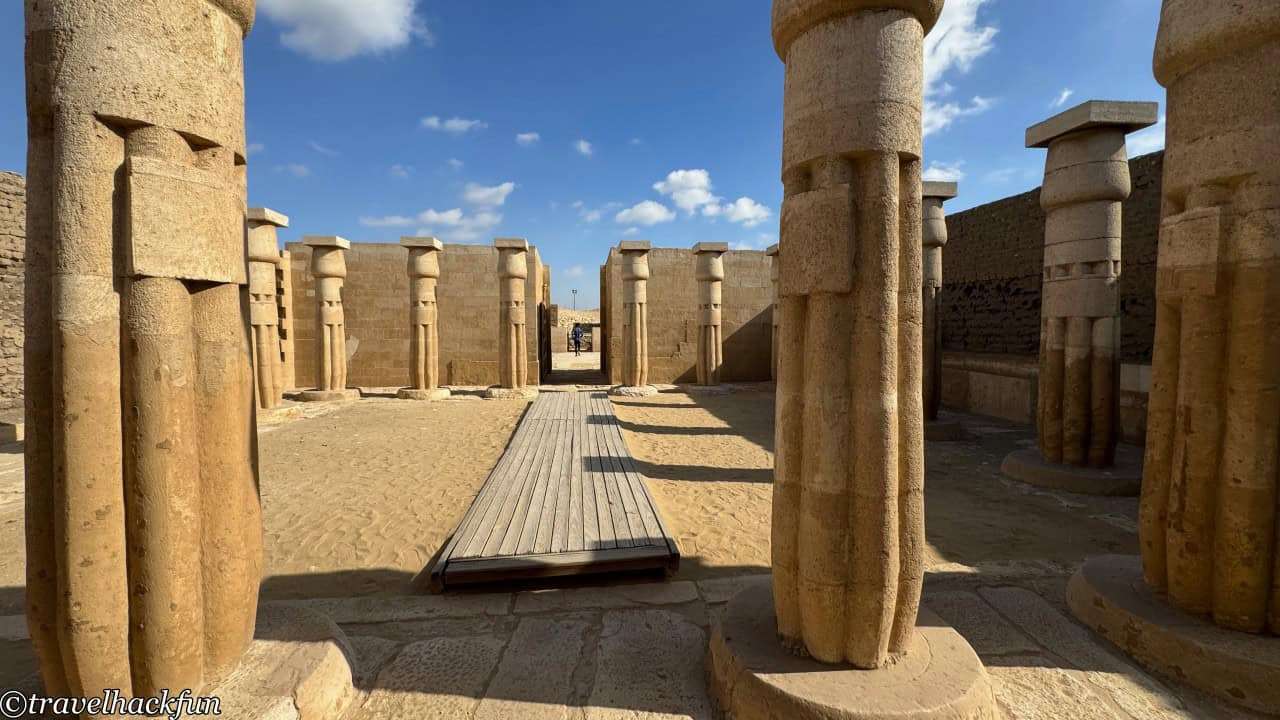
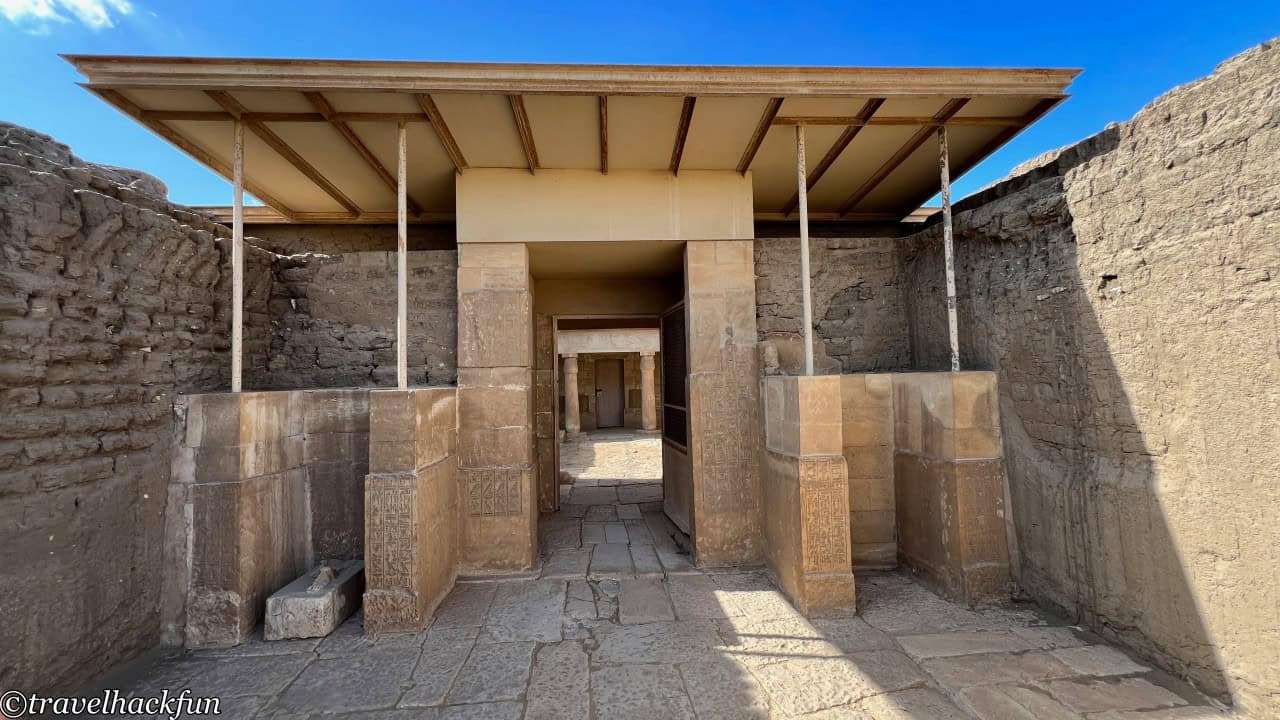
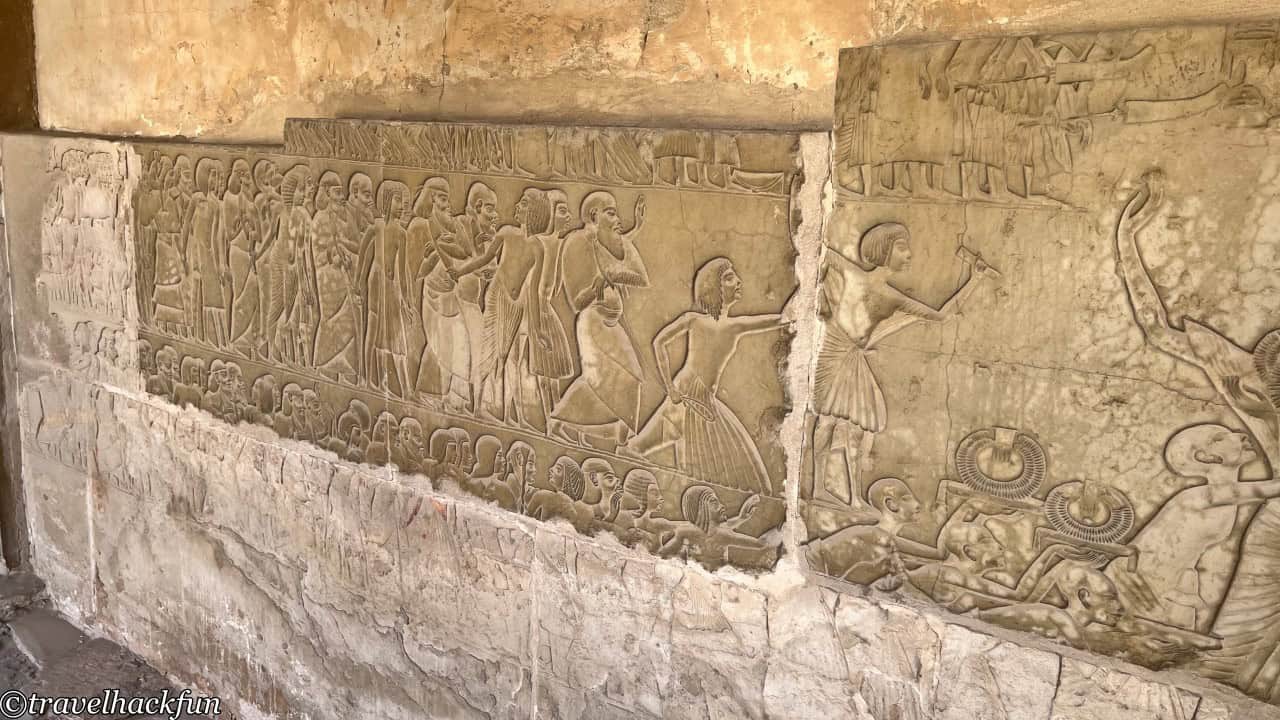
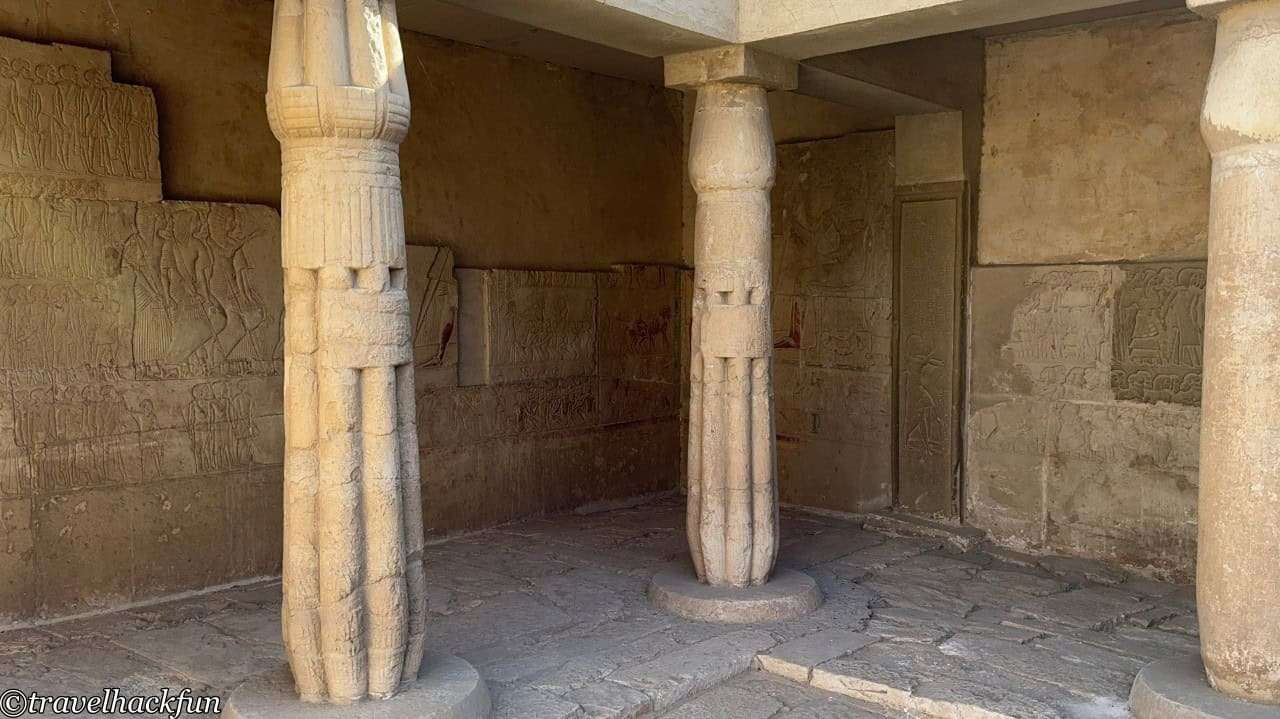
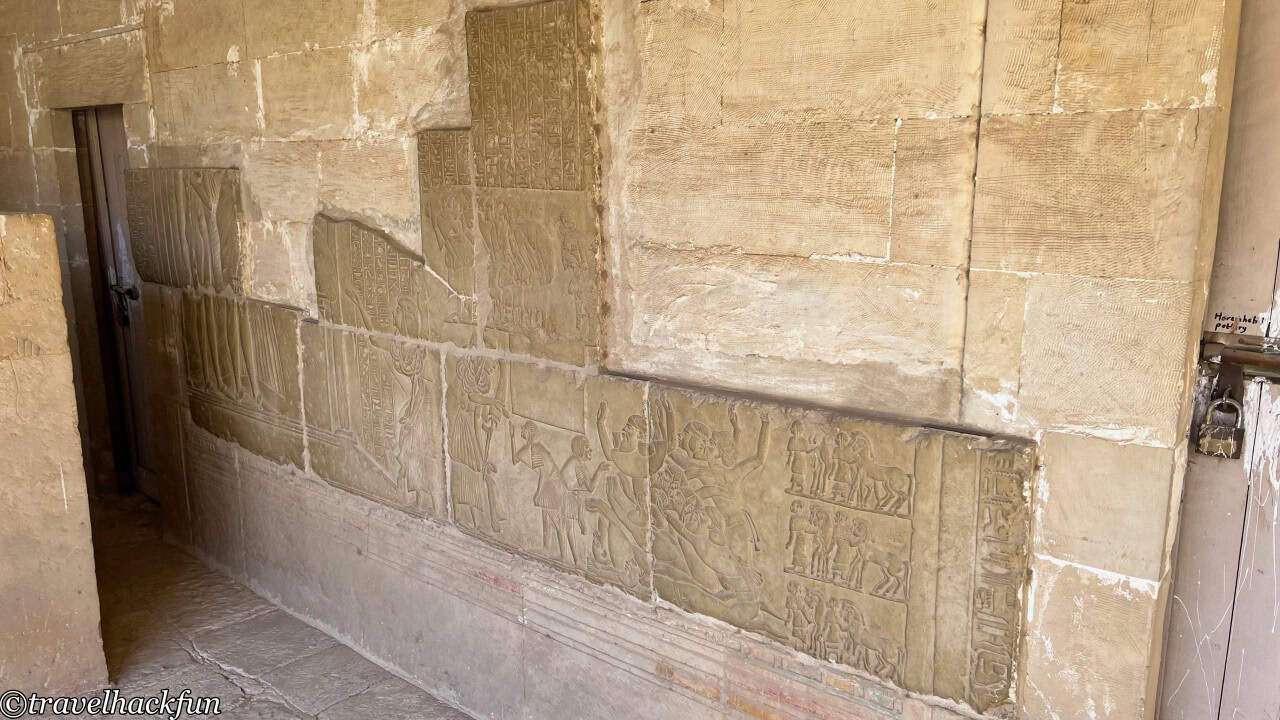
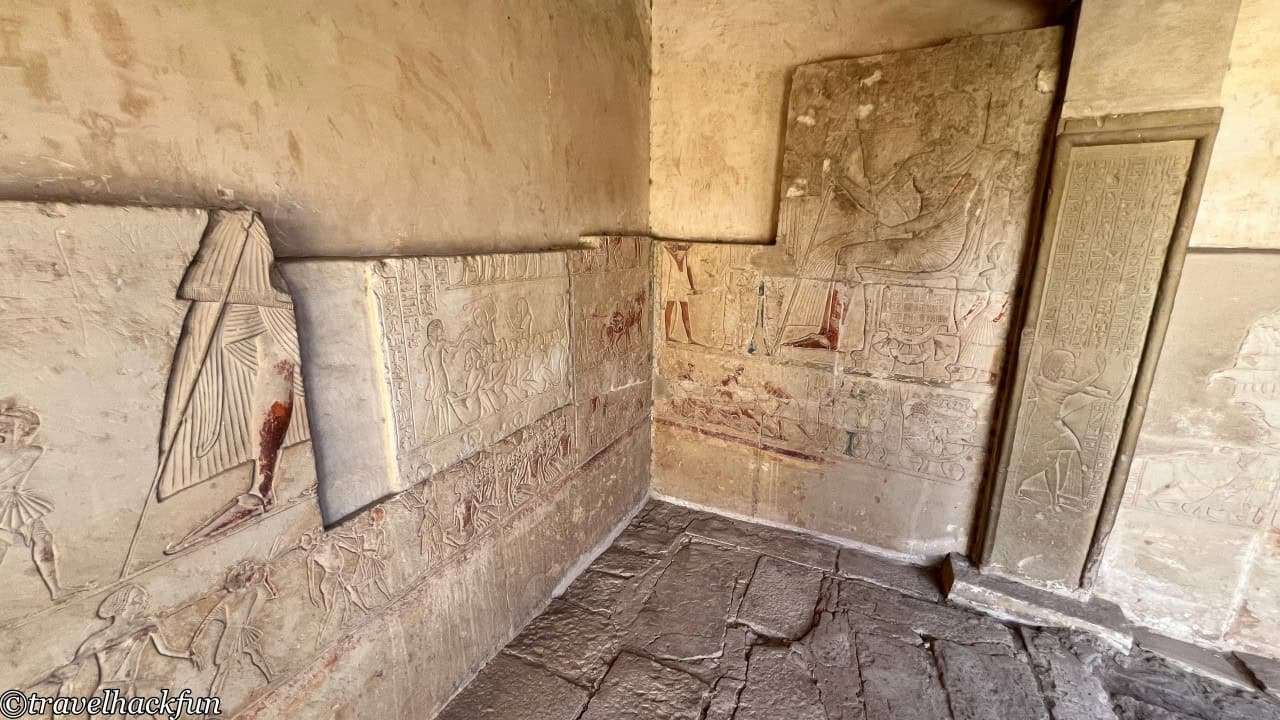
The Tomb of Horemheb was discovered by tomb raiders and art dealers in the 19th century, so many statues and reliefs were taken and sold to foreign museums at that time. Now, we can see some of the parts that have been retrieved and restored here, but large sections are still missing.
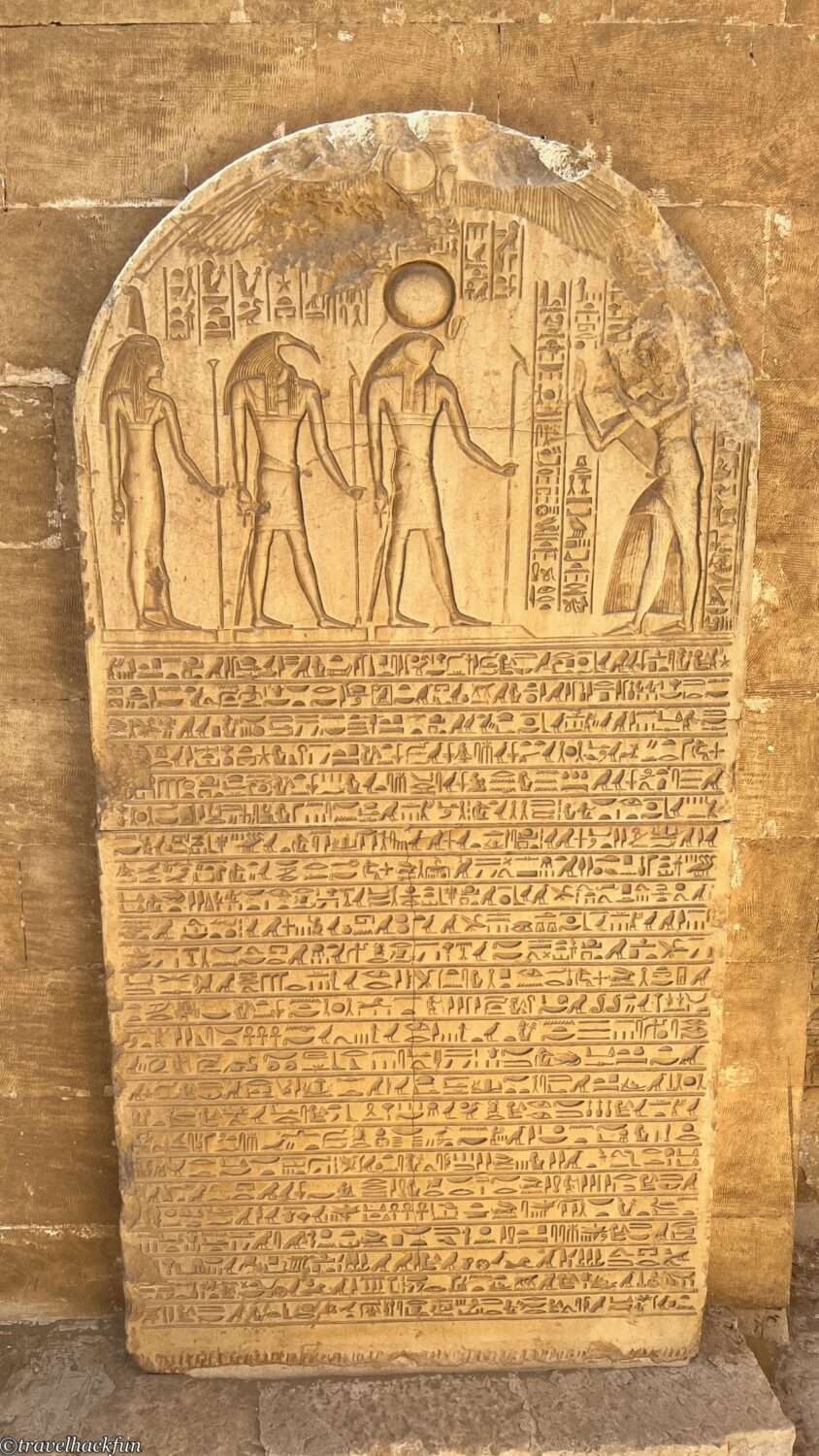
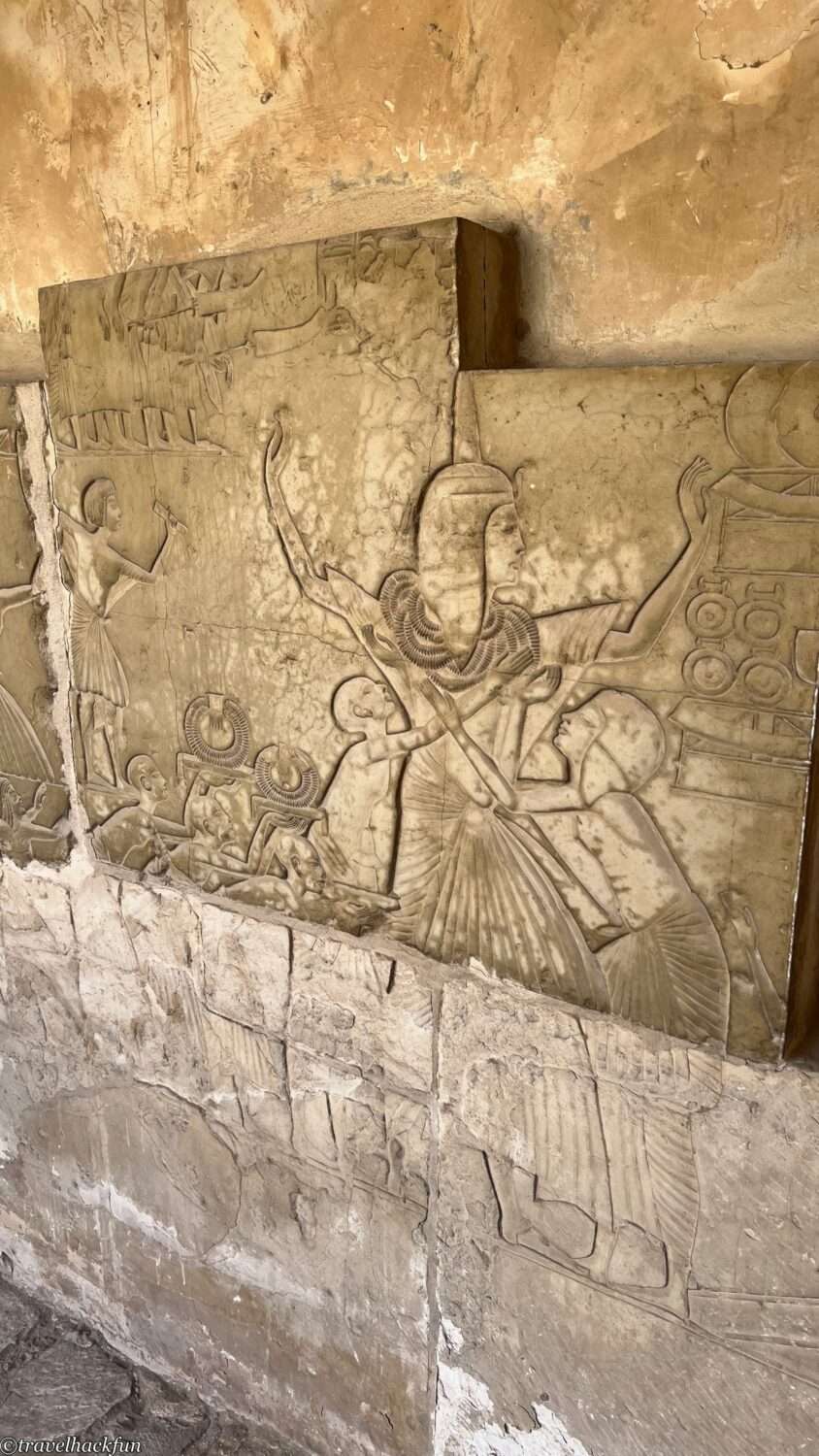
Tomb of Tia and Tiya
Tia and Tiya are a noble couple. Mr. Tia was the treasurer of Ramses II during the Nineteenth Dynasty, and his wife Tiya was Ramses II's sister. Therefore, Tia was actually the brother-in-law of the pharaoh, granting him a prestigious status. The structure of this tomb is also quite magnificent. Although the original decorations have been severely damaged, Ramses II's name can still be seen.
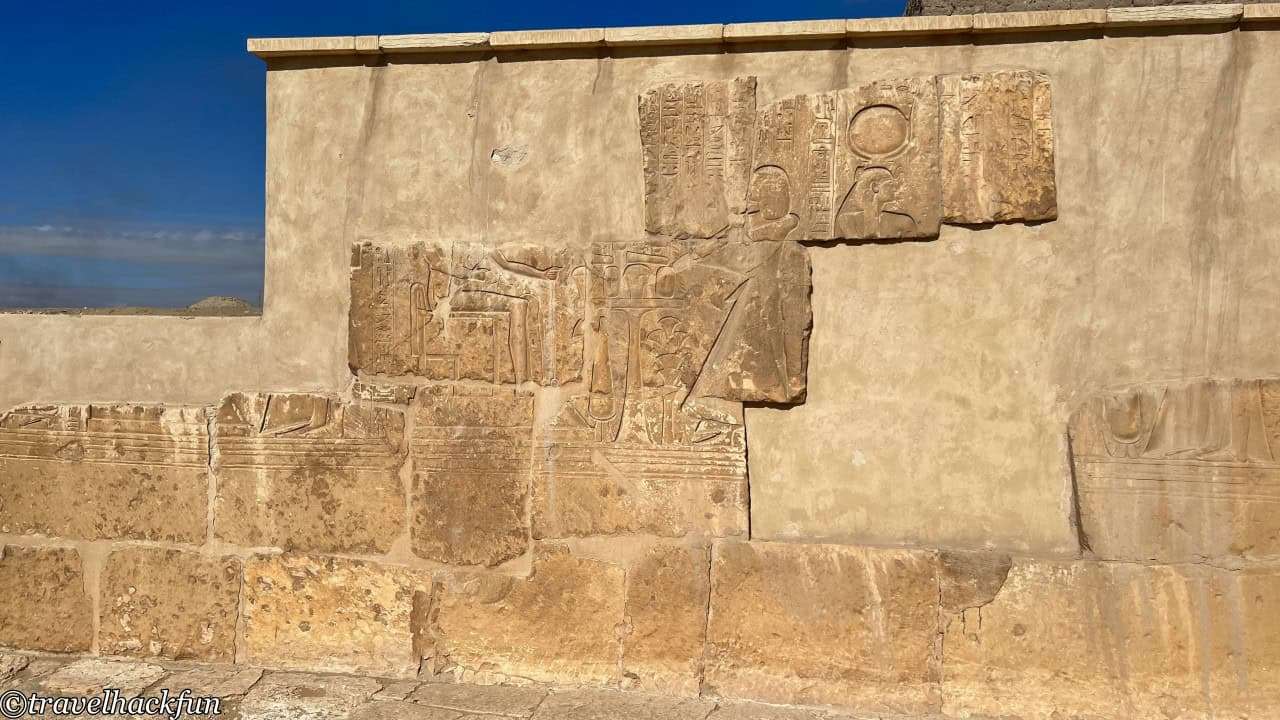

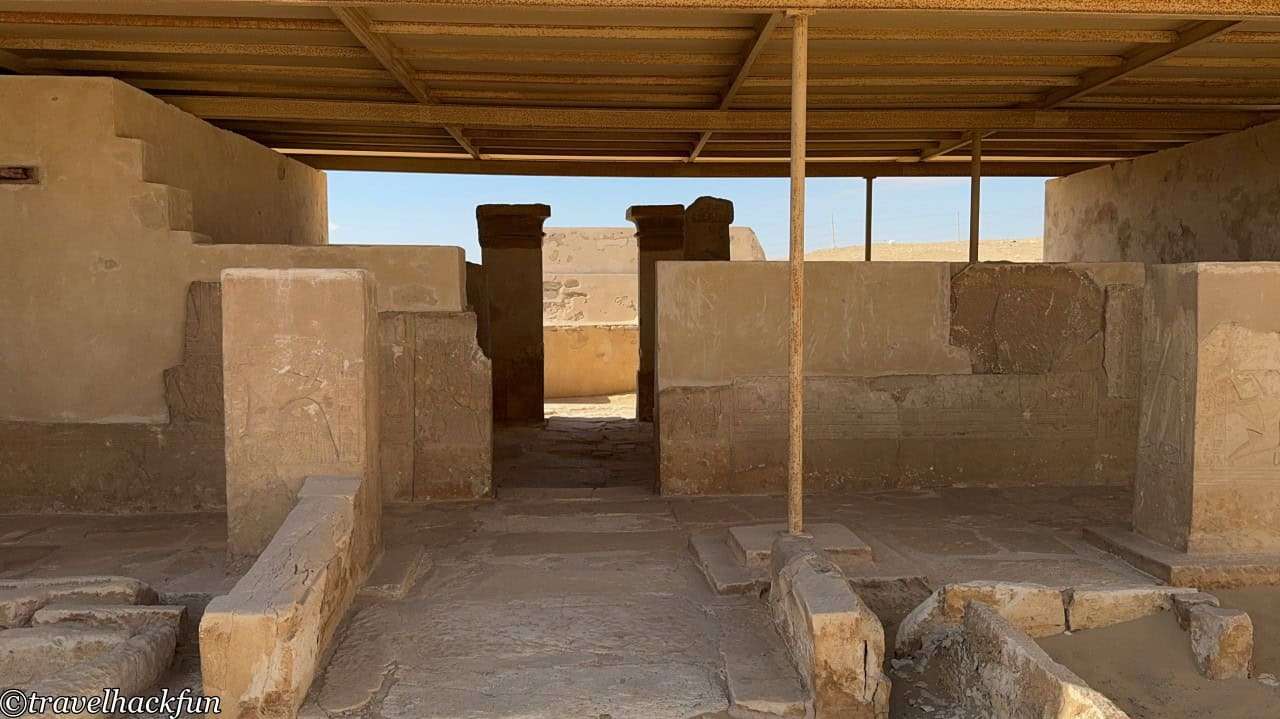
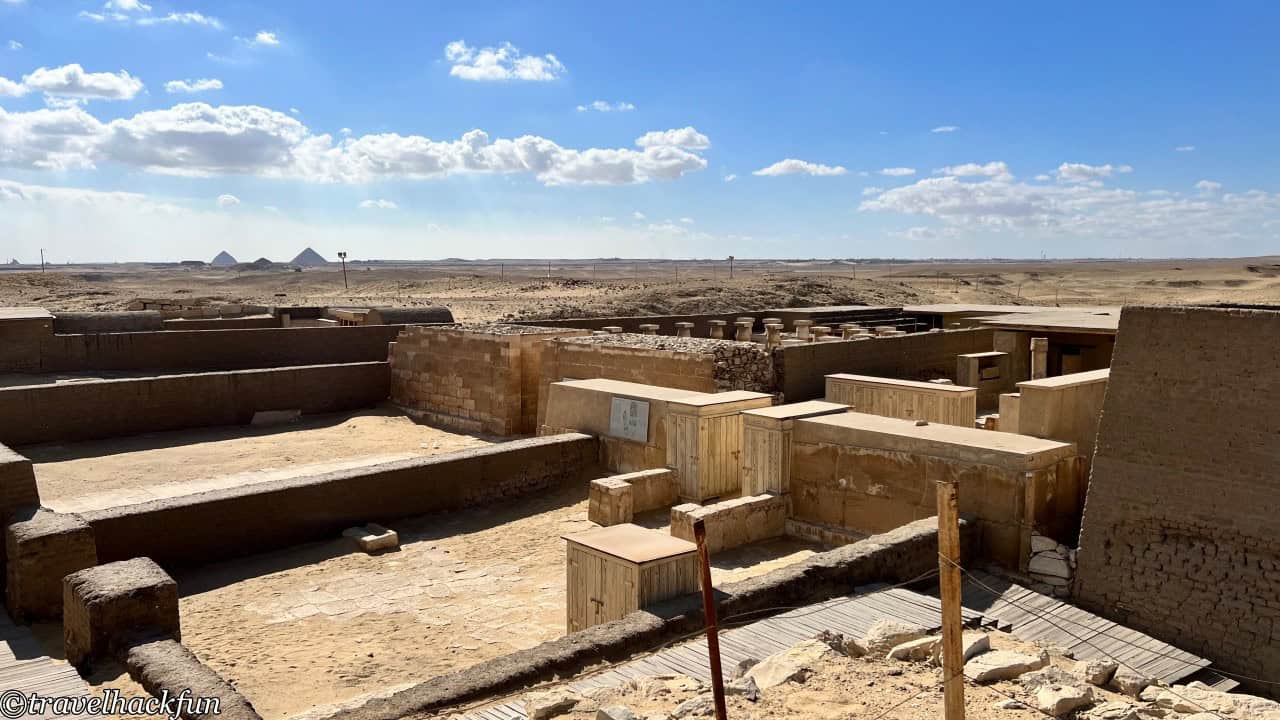
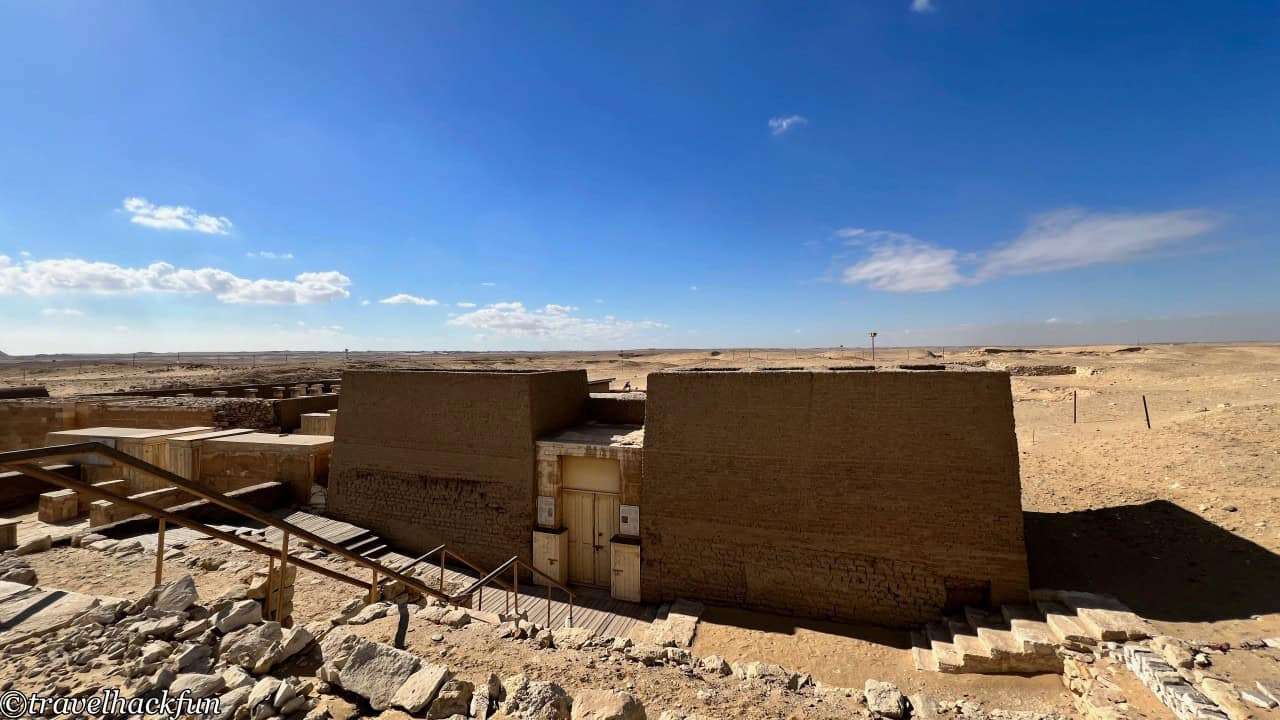

Must See | Serapeum
The Serapeum is located quite far from the Step Pyramid, and you can drive there. The Serapeum is one of the most unique and must-see attractions in Saqqara. Unlike other places, the tombs here are for the Apis bulls. The necropolis was in use from the 18th Dynasty up to the Ptolemaic period.
In ancient Egyptian beliefs, the Apis bull was considered an incarnation of the god Ptah, one of the most important gods of Memphis. The ancient Egyptian priests decided which specific bull would become the Apis bull based on its markings and birthdate, among other criteria. The chosen bull was regarded as a divine incarnation and could enjoy great wealth and honor. After its death, the Apis bull would be mummified and buried as a deity, and a new successor would then be selected.
The interior of the Serapeum's Bull Tomb is quite spacious, with a 500-meter-long path. Along the way, you can see many huge marble sarcophagi that house the buried bulls, at least fifty or sixty of them. The sarcophagi are all inscribed with pyramid texts.
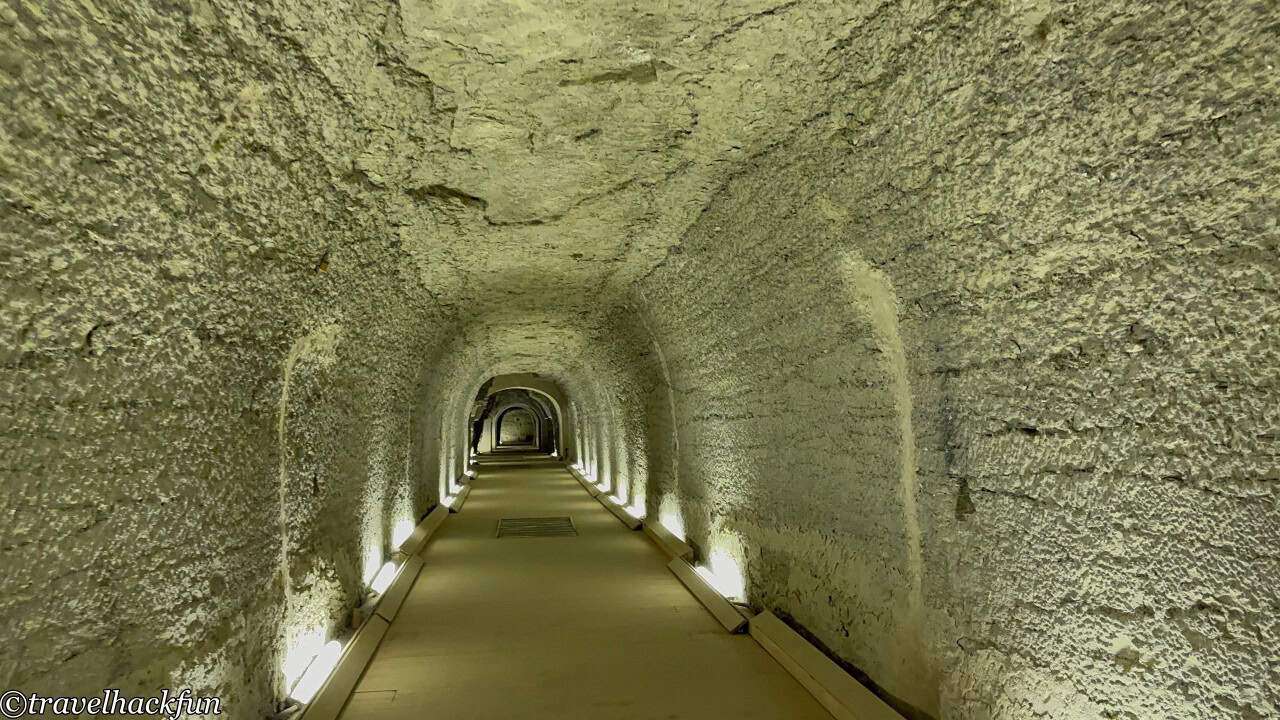
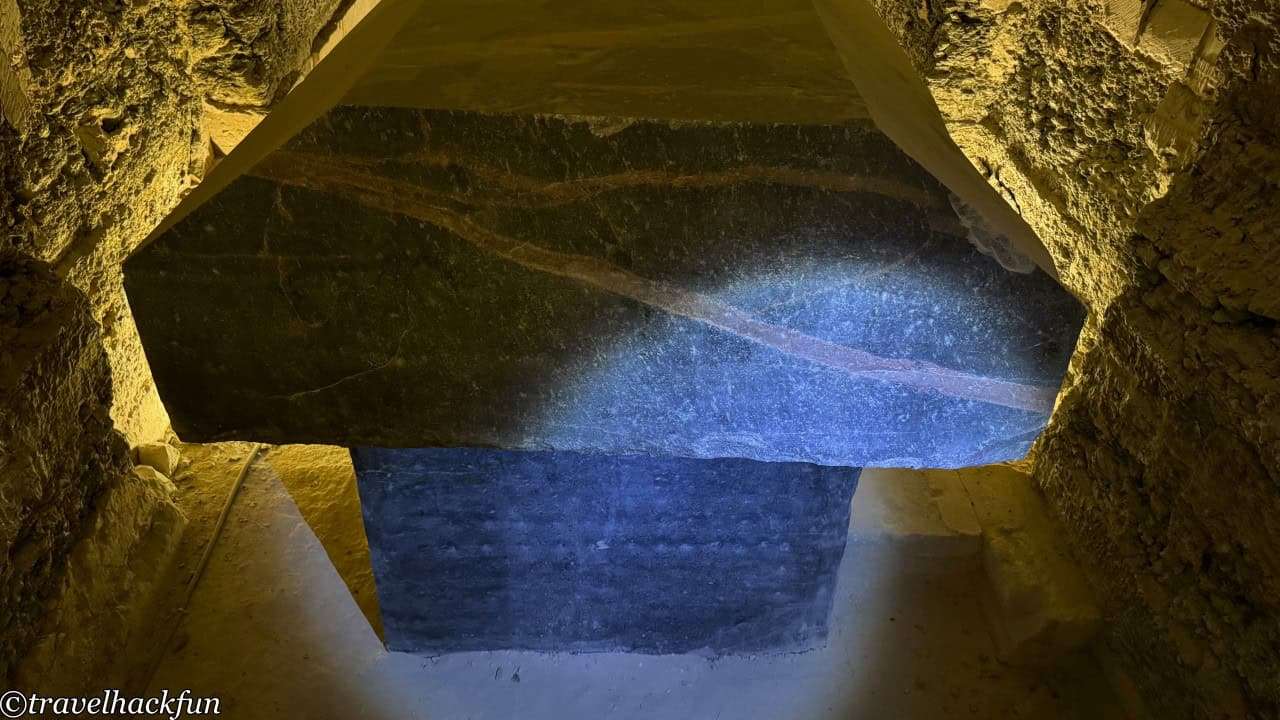
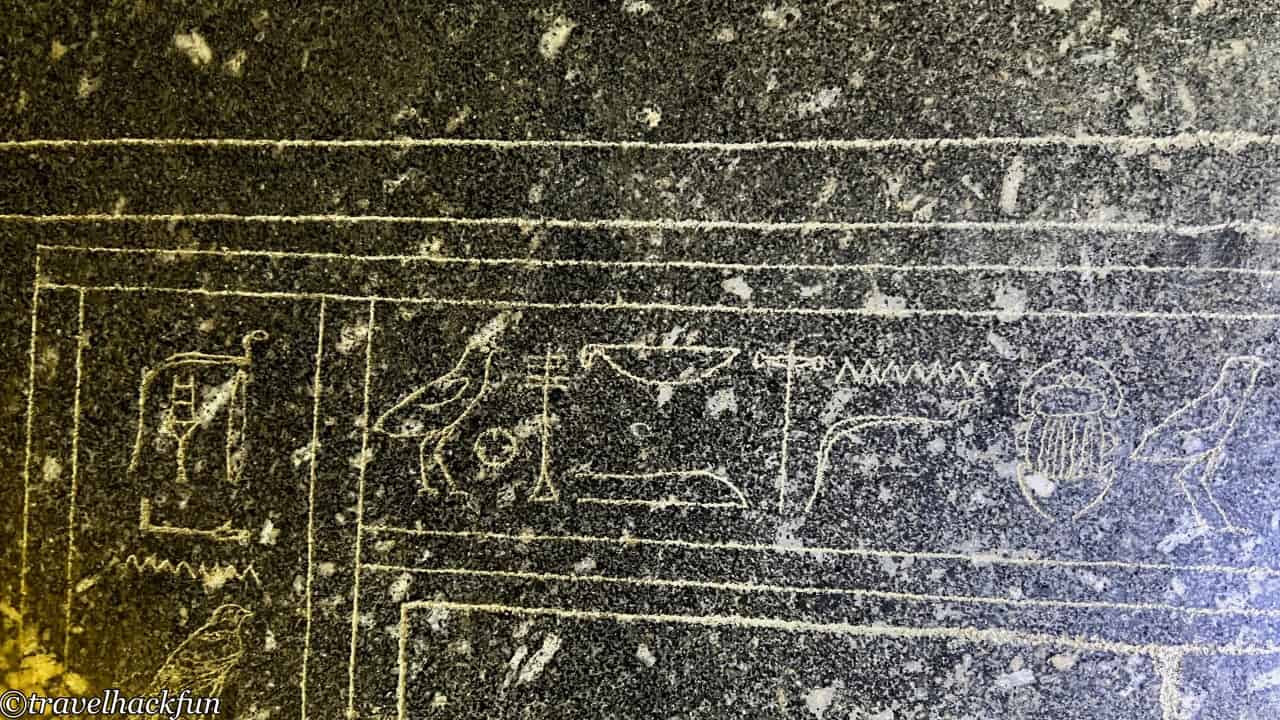
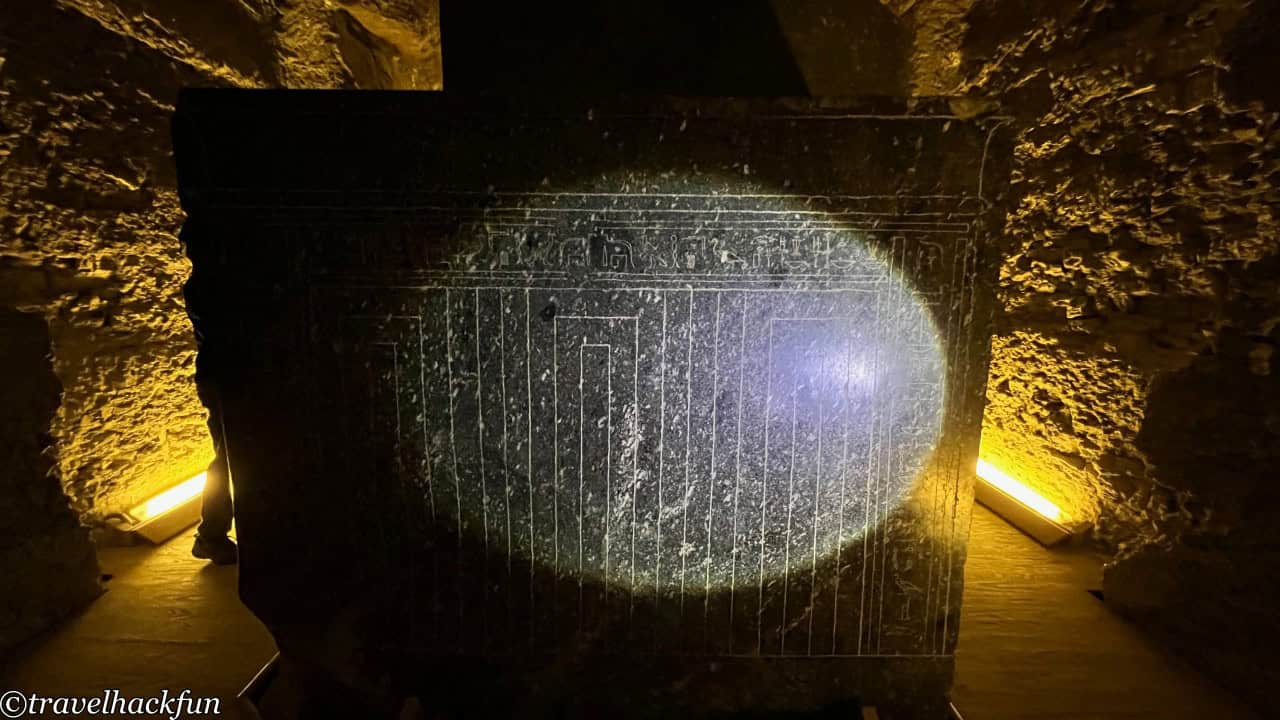


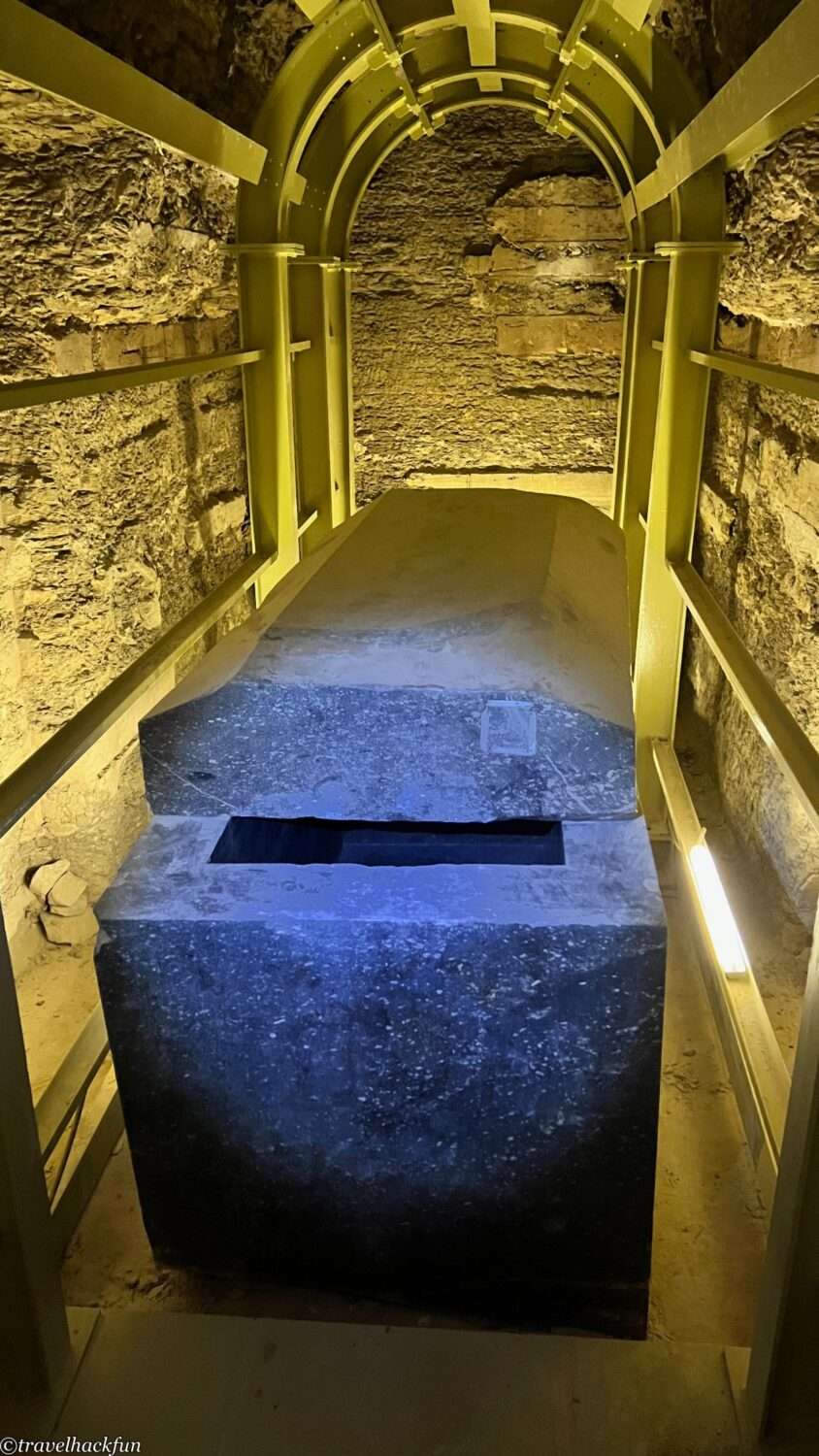
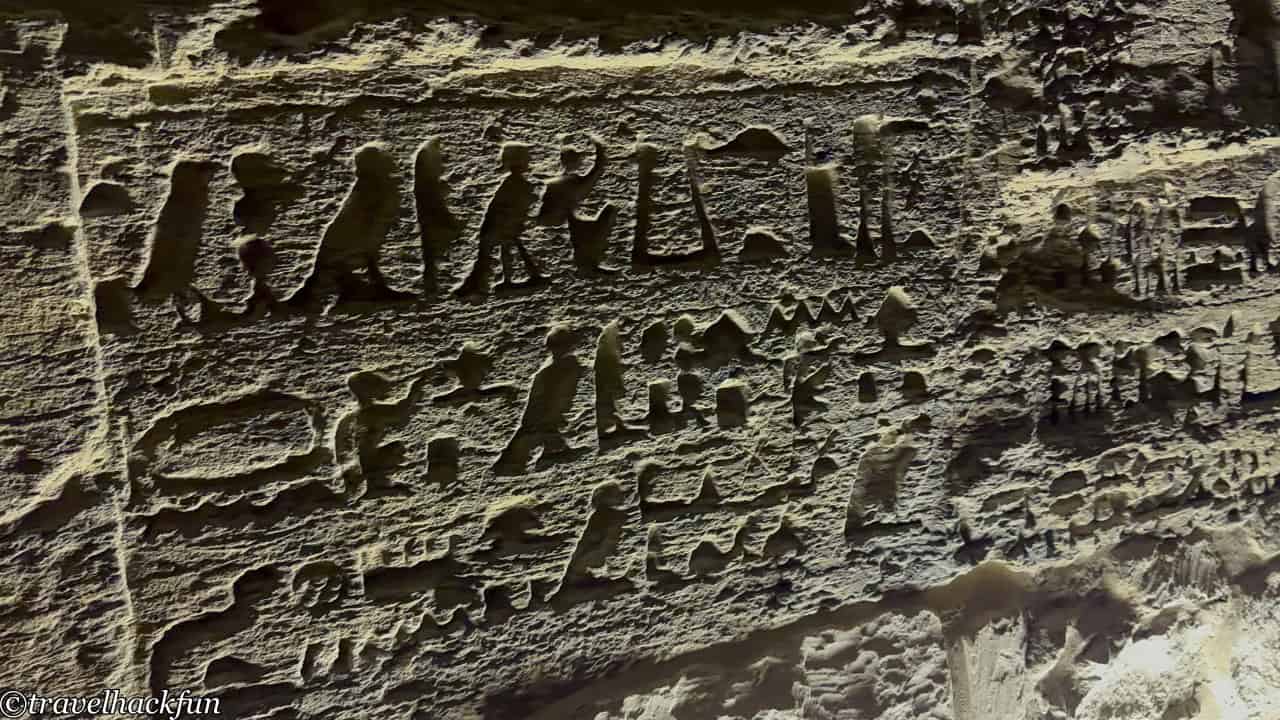


Teti Pyramid Complex
Teti was the first pharaoh of the Sixth Dynasty. This pyramid is similar to the Unas Pyramid, both of which are relatively small and currently look like small mounds of earth. Its underground structure is actually well-preserved, and the interior also contains inscriptions of Pyramid Texts. In the Teti Pyramid area, the more well-known attractions are actually the nearby officials' tombs of Mereruka and Kagemni.
Must See | Tomb of Mereruka
The Tomb of Mereruka is one of the most famous and elaborately decorated non-royal tombs in Saqqara. Mereruka was the vizier and son-in-law of Pharaoh Teti of the Sixth Dynasty, and he was very wealthy and powerful. The fact that his tomb is located right next to the Pyramid of Teti indicates his high status.
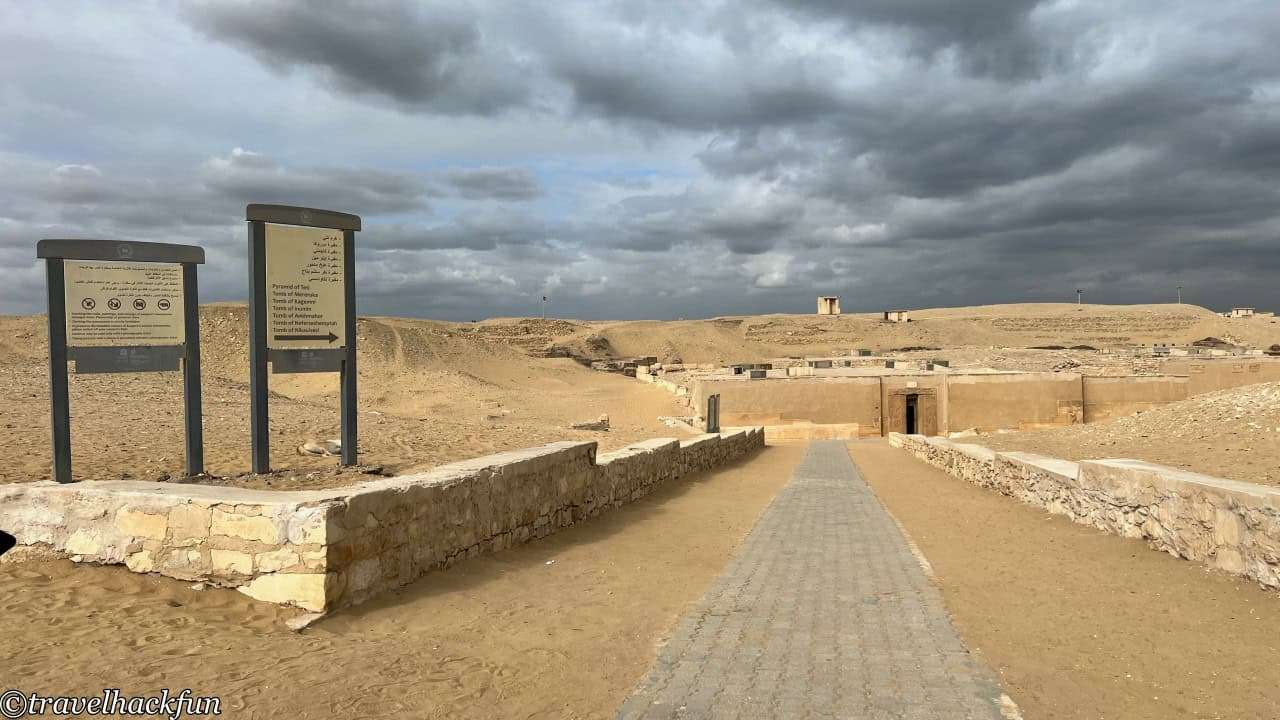
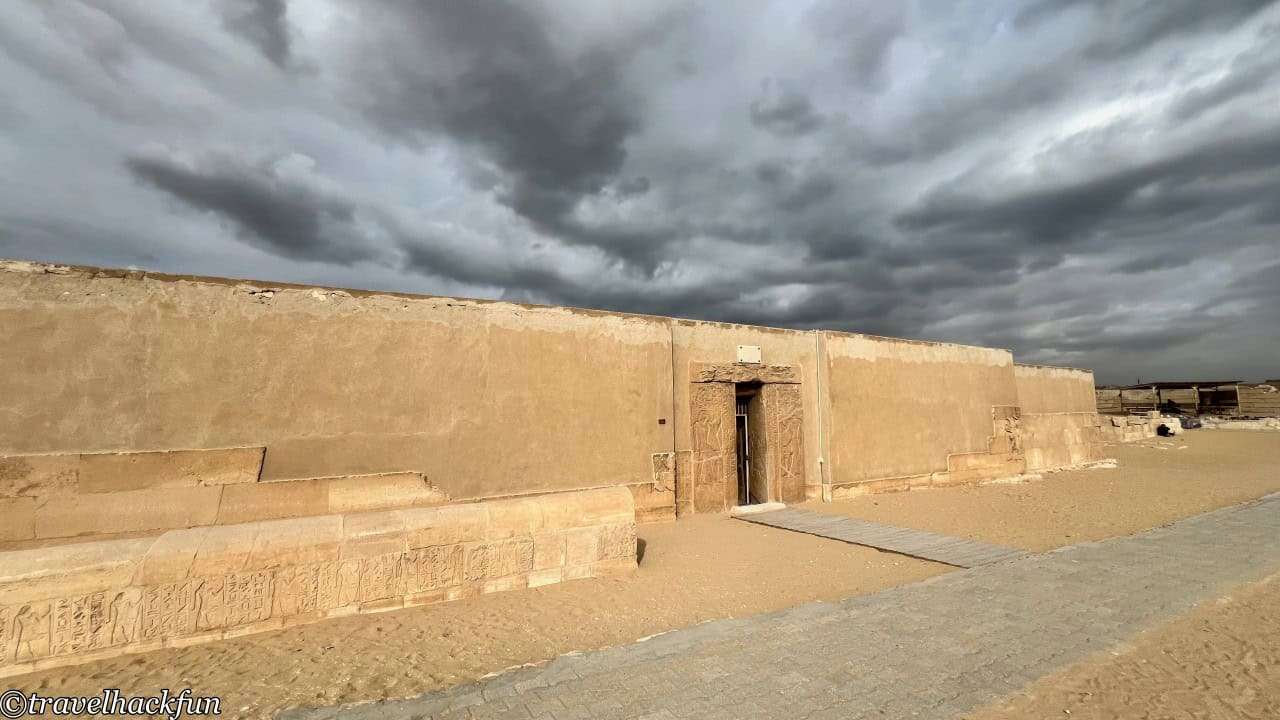
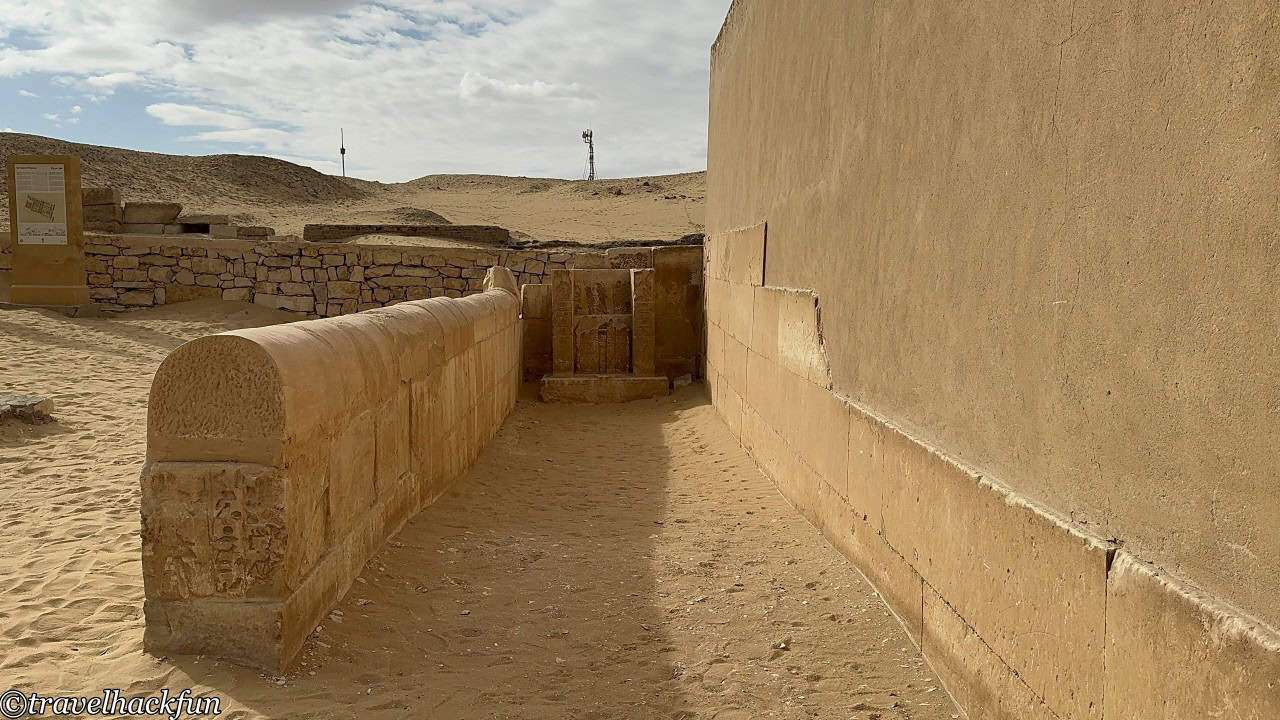
His tomb includes 33 rooms and serves as a family tomb. Twenty-one rooms are designated for Mereruka himself, six rooms for his wife, and five rooms for his son. The walls of the burial chamber depict various scenes from daily life, such as herding cattle and hunting hippos. The most distinctive feature is the statue of Mereruka in the tomb, which portrays him in the act of preparing to receive offerings.
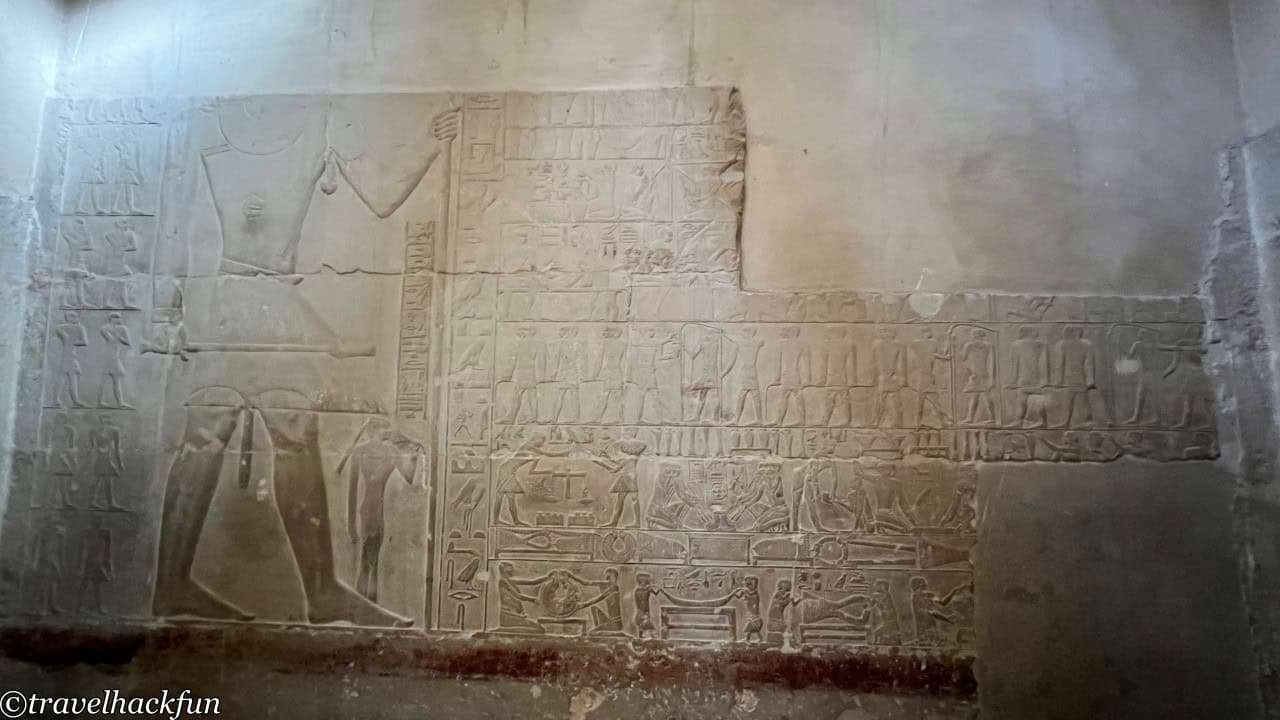


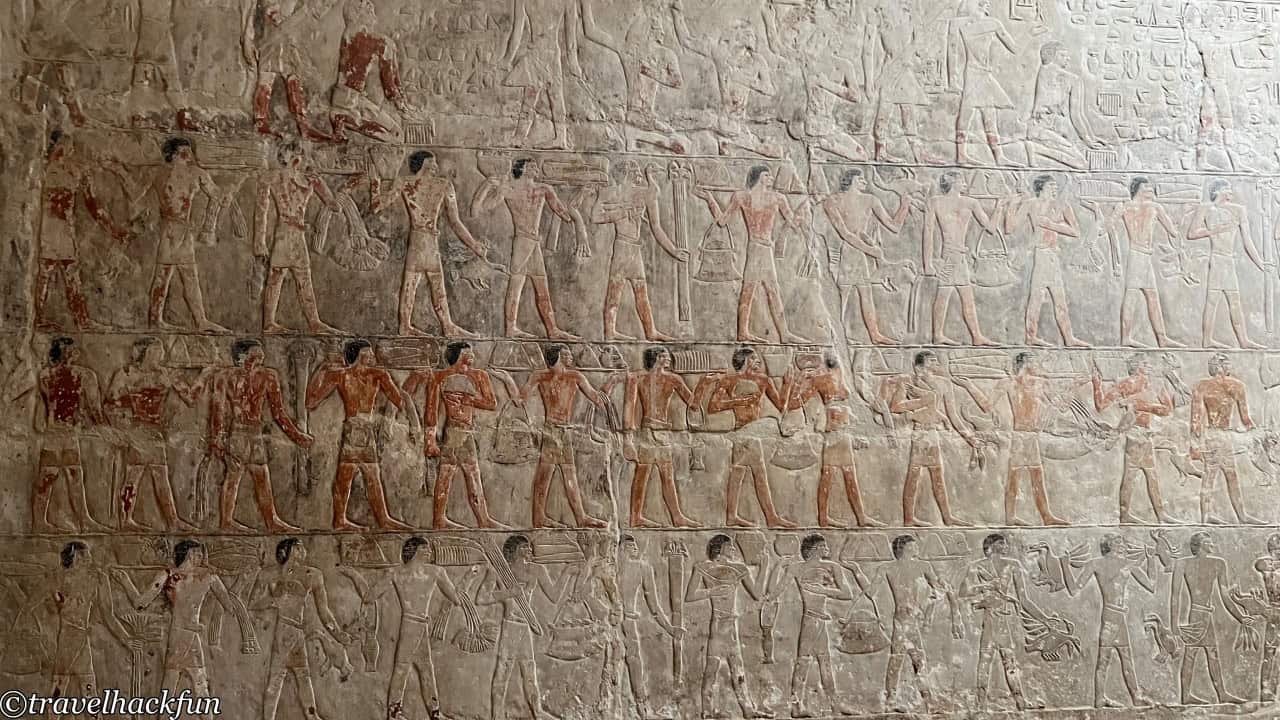
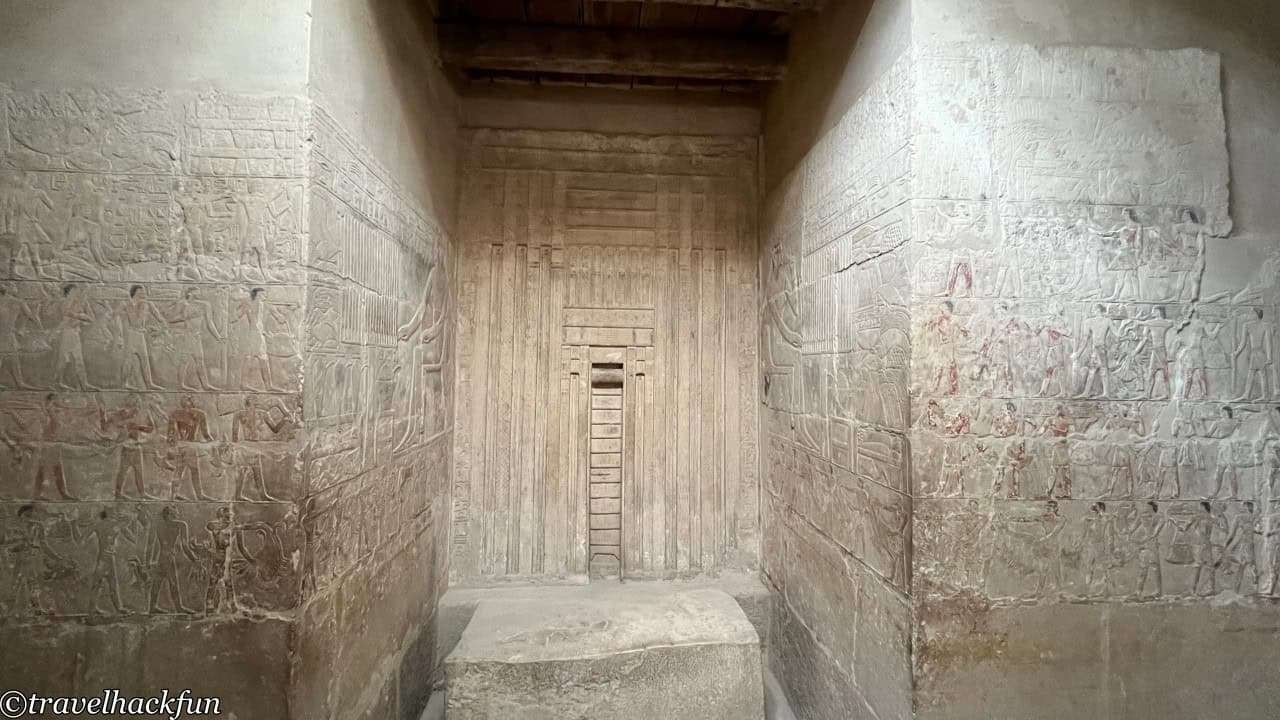
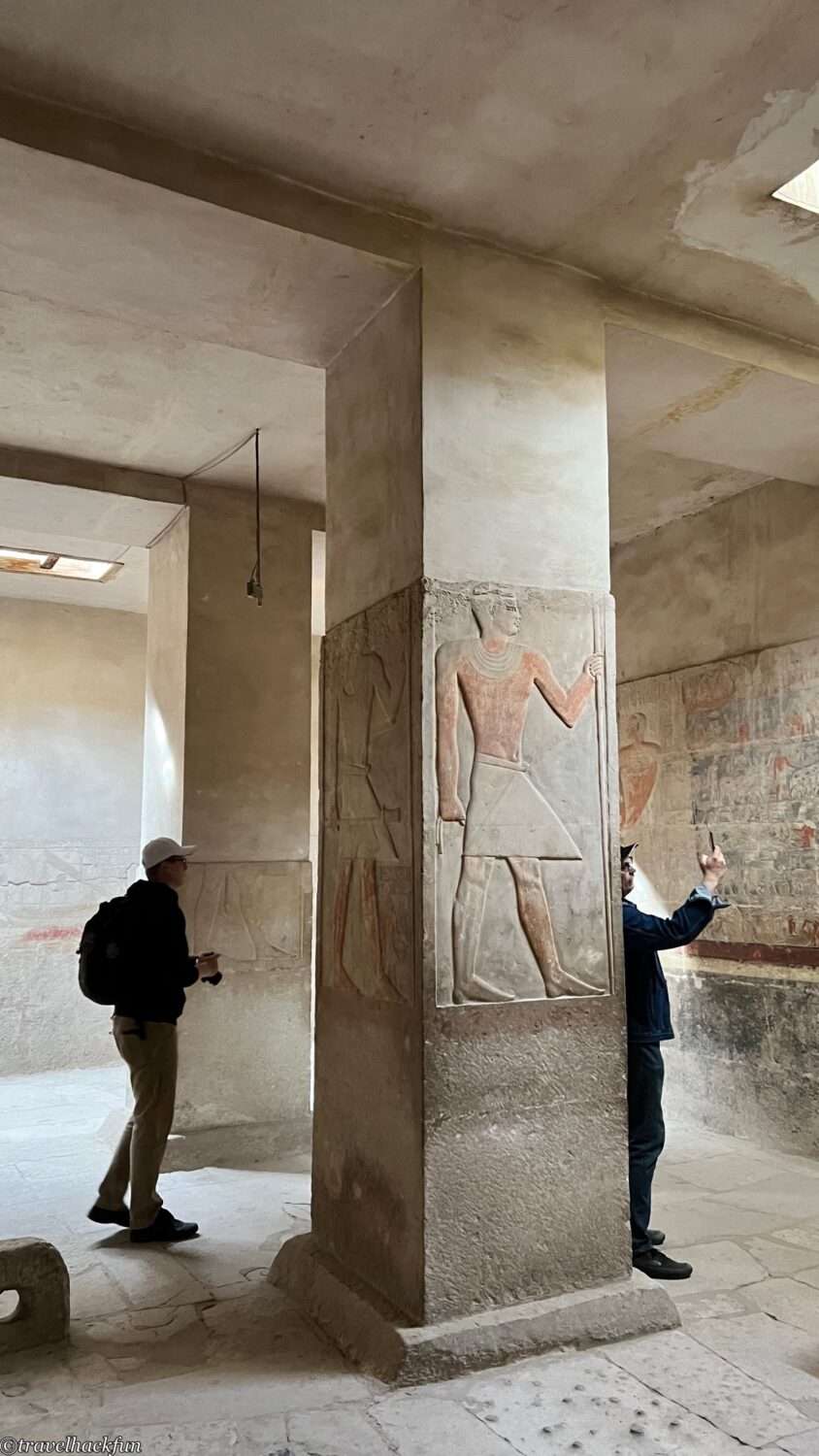
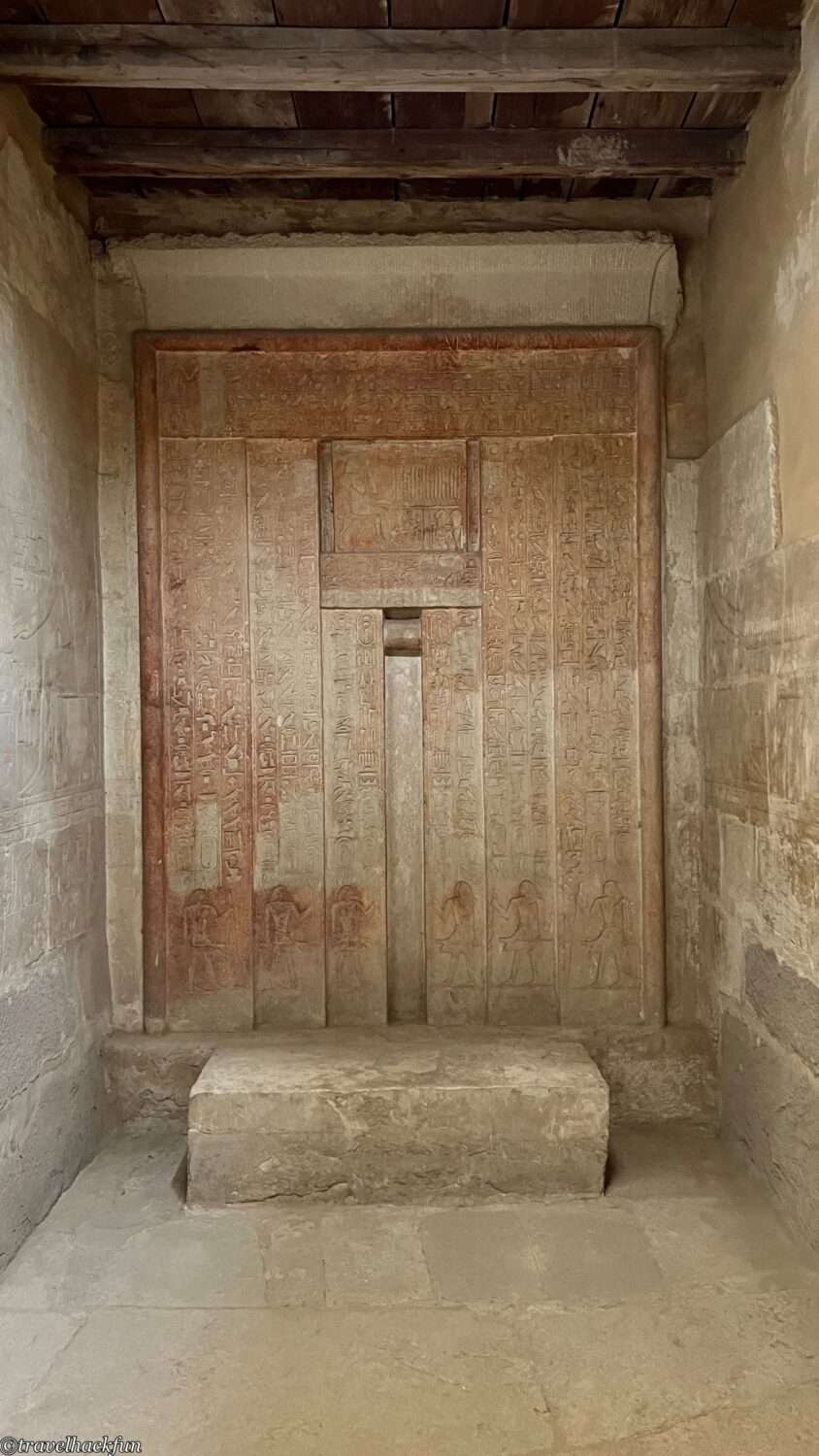
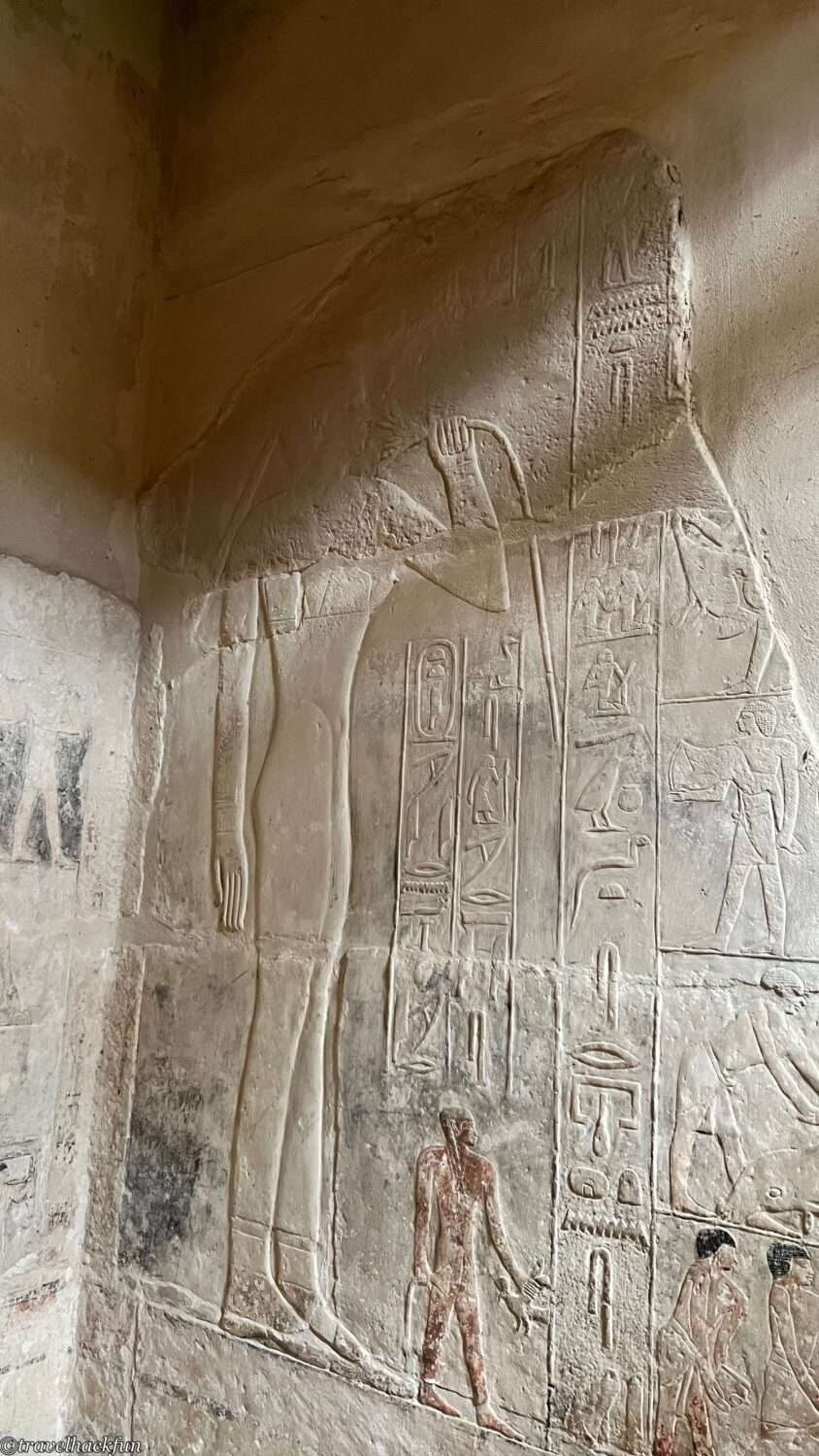
Tomb of Kagemni
Kagemni was the vizier and judge during the reign of Teti. This tomb is a large Mustaba, with a side length of about 32 meters. Its structure is complex and it appears quite magnificent from the outside.
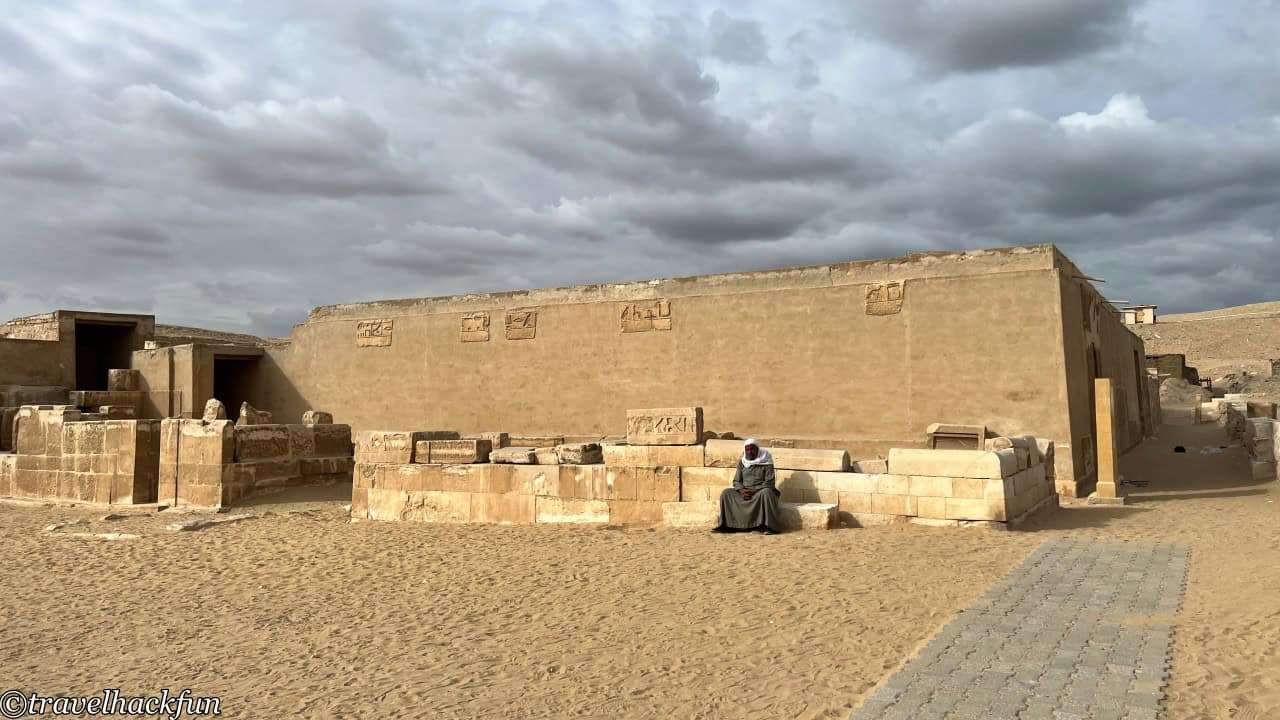
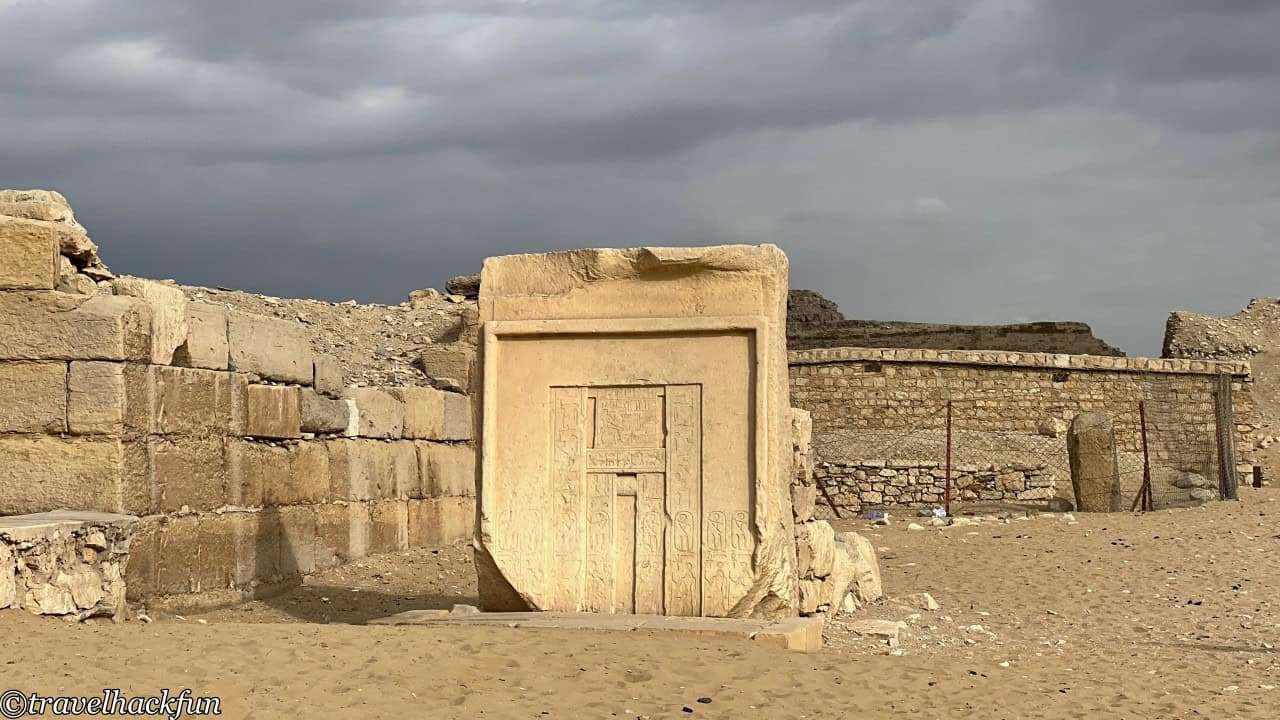


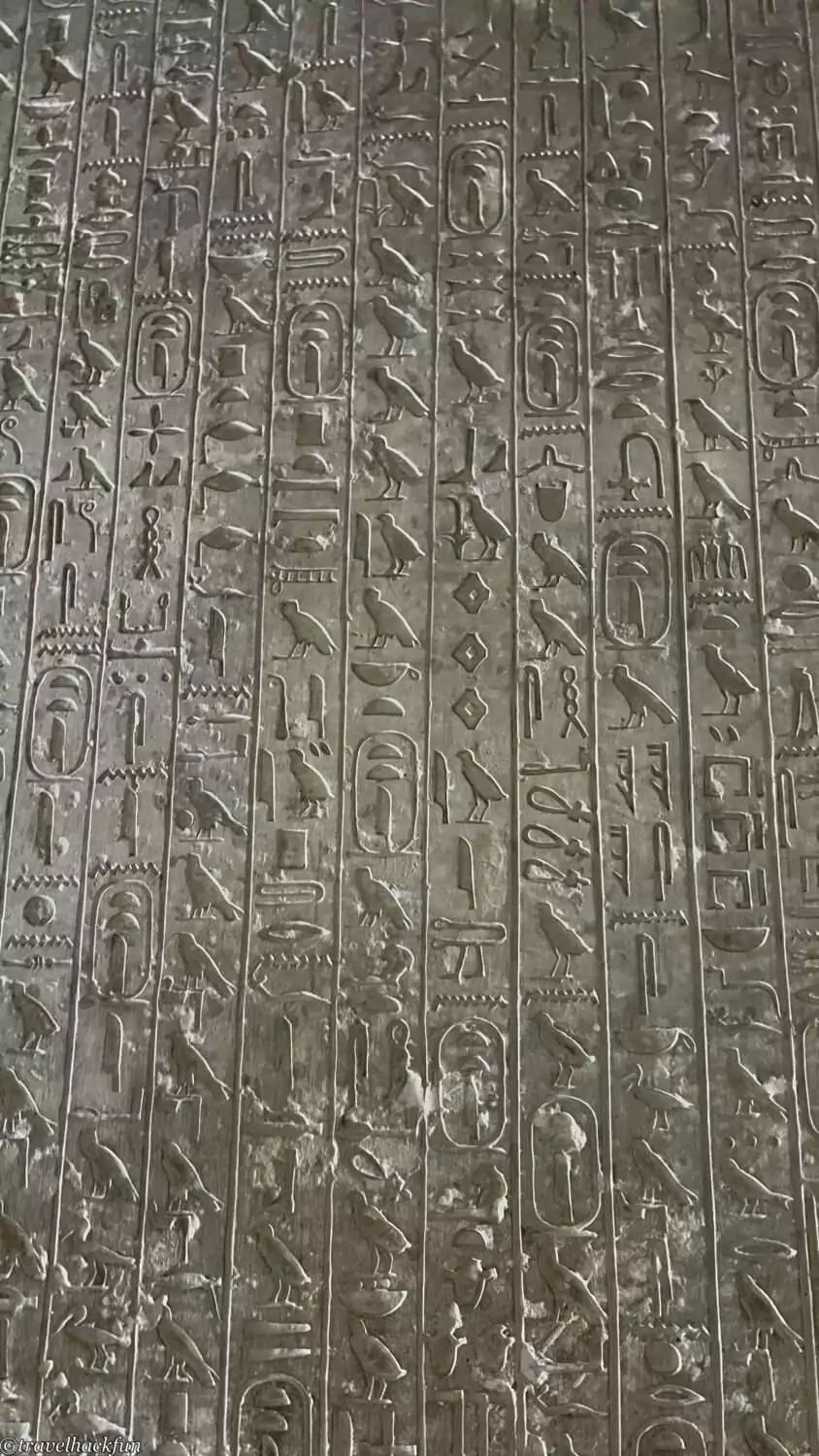
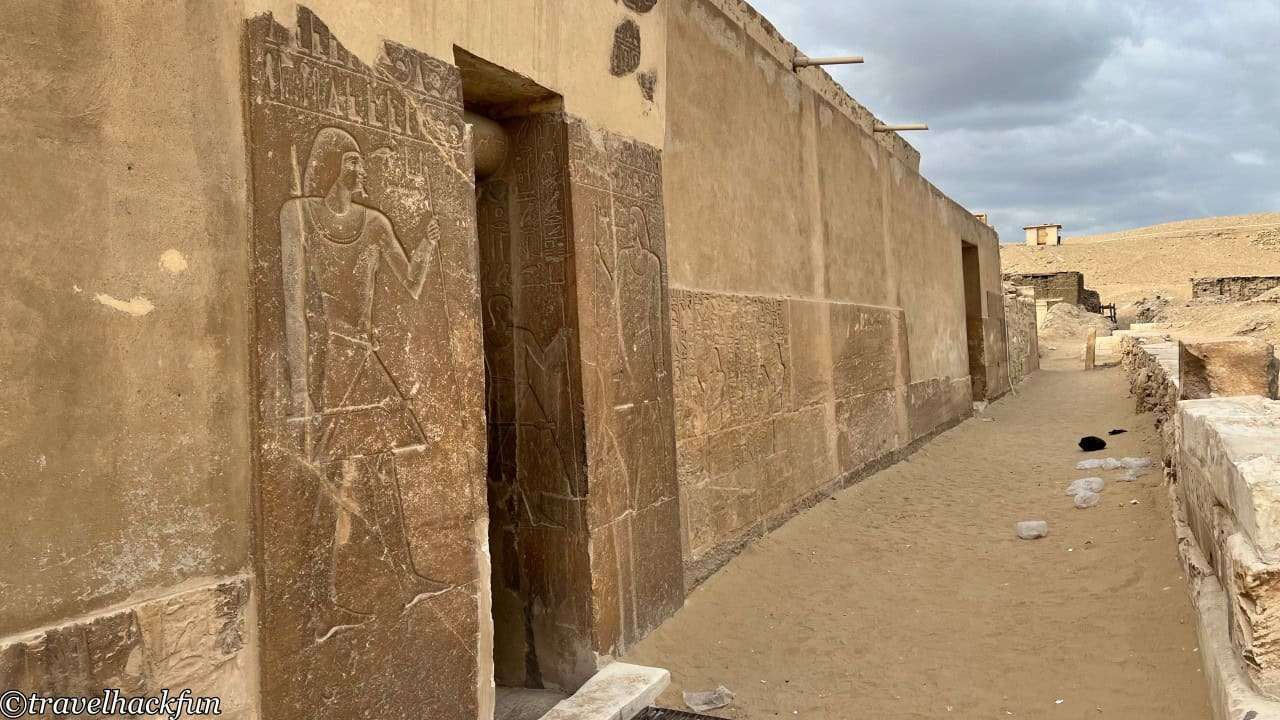
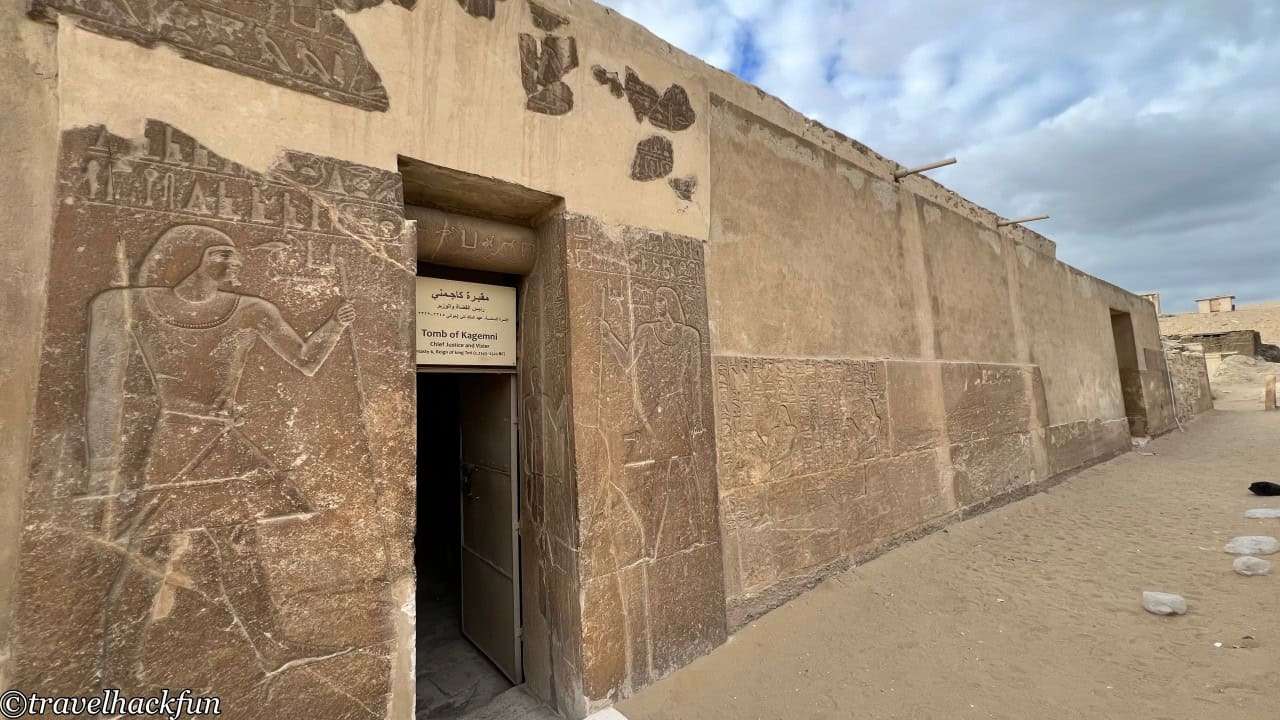
☕ Enjoying my travel notes?
You can Buy me a coffee to support what I do 🙌